transatlantic slave trade
description: the forced transportation of enslaved African people, mainly to the Americas, from the 16th to the 19th century.
155 results

Dark Matters: On the Surveillance of Blackness
by
Simone Browne
Published 1 Oct 2015
Hartman, Lose Your Mother, 79. 37. Postma, The Dutch in the Atlantic Slave Trade; Hartman, Lose Your Mother. 38. Postma, The Dutch in the Atlantic Slave Trade, 368. 39. Ibid., 52–53. 40. Williams, Dessa Rose, 229. 41. Morrison, Beloved, 73. 42. Ibid. 43. In his content analysis of fugitive slave notices that appeared in the Royal Jamaica Gazette during one week in June 1823, Clarkson, The Argument That the Colonial Slaves Are Better Off, writes that branding was not occasioned solely at the factories of the transatlantic slave trade, but took place in the colonies as a form of punishment and an identification practice by planters “that they may know them again” should the enslaved run away.
…
In order to understand the meanings of branding as historically situated, in this chapter I explore some early applications of this biometric information technology and question its role in the racial framing of blackness as property. What I am suggesting here is that branding in the transatlantic slave trade was a biometric technology, as it was a measure of slavery’s making, marking, and marketing of the black subject as commodity. The first section of this chapter, Branding Blackness, provides a discussion of the practice of branding and its role in the making of the racial subject as commodity at the ports of the transatlantic slave trade. I do this by looking to narratives, some written by abolitionists, others by slave merchants and owners. As well, I look at the uses of branding as a form of racializing surveillance: as both corporeal punishment in plantation societies and in urban domestic settings of slave ownership, and for identification purposes.
…
All I could think of was how important this was and how I needed to have something important to say back, but I couldn’t think of anything so I just said what I thought. “Yes, Ma’am,” I said. “But how will you know me? How will you know me? Mark me, too,” I said. —SETHE IN TONI MORRISON’S Beloved What can branding during the transatlantic slave trade tell us about the production of racial difference? In her influential 1987 essay “Mama’s Baby, Papa’s Maybe: An American Grammar Book,” Hortense Spillers emphasizes that the trafficking of humans in the transatlantic slave trade marked a violent “theft of the body,” rendering the captive body “a territory of cultural and political maneuver.”7 Branding was a practice through which enslaved people were signified as commodities to be bought, sold, and traded.

Exceptional People: How Migration Shaped Our World and Will Define Our Future
by
Ian Goldin
,
Geoffrey Cameron
and
Meera Balarajan
Published 20 Dec 2010
The influx of flintlock firearms into Africa in the mid-seventeenth century gave slave raiders the tools of coercion to carry out their trade.45 Figure 2.2. Estimates of slave exports to America from Africa, I 662-1867. Herbert S. Klein. 1999. The Atlantic Slave Trade. Cambridge. UK: Cambridge University Press, p. 208, appendix table A. I. The transatlantic slave trade was one element of a trade network that European powers used to ensure a balance of payments—that their imports would be roughly equivalent to their exports. Exported manufactured goods would be traded at African ports for slaves. Slaves would be sold in the plantation regions of the Americas, and sugar, tobacco, and other agricultural goods would be shipped either to New England or to Europe.
…
“Free and Unfree Labour Migration, 1600–1900: An Introduction,” Journal of World History 14(2): 125–130. 40. Herbert S. Klein. 1999. The Atlantic Slave Trade. Cambridge, UK: Cambridge University Press. 41. Ibid.: 140, table 6.2. 42. Manning, 2005: 135. 43. See Harzig, Hoerder, and Gabaccia, 2009: 35. 44. Jan S. Hogondorn. 1984. “Review Essay: The Economics of the African Slave Trade,” Journal of American History 70(4): 854–861. 45. Hogondorn, 1984. 46. Barbara L. Solow. 2001. “The Transatlantic Slave Trade: A New Census,” The William and Mary Quarterly 58(1): 9–16. 47. Scheidel, 1997, cited in Nathan Nunn. 2008. “The Long-Term Effects of Africa's Slave Trade,” The Quarterly Journal of Economics 123(1): 139–176. 48.
…
The dramatic escalation of the transatlantic slave trade in the seventeenth and eighteenth centuries was related to other movements connected to Europe's ascendance. Economic growth in Europe drove colonizer migrations; these merchants and soldiers mobilized and controlled local labor for production; and the expansion of mines and plantations generated demand for external labor.43 This demand was initially met with a steady and increasing supply of slaves. Figure 2.1. African slave trade routes, 1500-1900. David Eltis and David Richardson. 2009. An Atlas of the Transatlantic Slave Trade. New Haven, CT: Yale University Press.
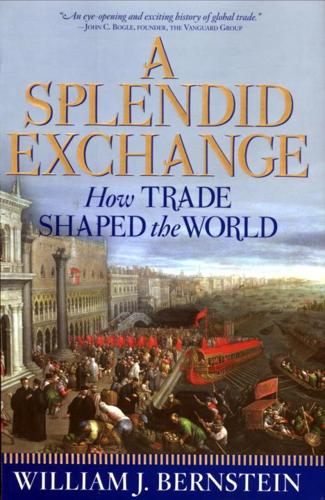
A Splendid Exchange: How Trade Shaped the World
by
William J. Bernstein
Published 5 May 2009
His basic conclusions were largely confirmed and refined by Professor Eltis; see The Rise of African Slavery in the Americas; "The Volume and Structure of the Transatlantic Slave Trade: A Reassessment," William And Marv Quarterly, 58, no. 1 (January 2001): 17-46, and David Eltis and David Richardson, "Prices of African Slaves Newly Arrived in the Americas, 1673-1865: New Evidence on Long-Run Trends and Regional Differentials," in David Eltis, ed., Slavery in the Development of the Americas (Cambridge: Cambridge University Press, 2004), 181-211. 82. Curtin, The Atlantic Slave Trade, from 268, table 77. For a more recent, and perhaps more accurate, quantitative assessment of the transatlantic slave flow, see Eltis, "The Volume and Structure of the Transatlantic Slave Trade: A Reassessment," 17-46. 83.
…
Philip Curtin, The Atlantic Slave Trade (Madison: University of Wisconsin Press, 1969), 69, 81. 76. Paul Bairoch, Economics and World History (Chicago: University of Chicago Press, 1993), 146. 77. Curtin, The Rise and Fall of the Plantation Complex, 39-40. 78. David Brion Davis, Inhuman Bondage (Oxford: Oxford University Press, 2006),90-91. 79. Ellis, The Rise of African Slavery in the Americas, from 176, table 7-3. 80. Quoted in Davis, Inhuman Bondage, 92. 81. Professor Curtin produced the first scientific census with the publication of his landmark The Atlantic Slave Trade in 1967. His basic conclusions were largely confirmed and refined by Professor Eltis; see The Rise of African Slavery in the Americas; "The Volume and Structure of the Transatlantic Slave Trade: A Reassessment," William And Marv Quarterly, 58, no. 1 (January 2001): 17-46, and David Eltis and David Richardson, "Prices of African Slaves Newly Arrived in the Americas, 1673-1865: New Evidence on Long-Run Trends and Regional Differentials," in David Eltis, ed., Slavery in the Development of the Americas (Cambridge: Cambridge University Press, 2004), 181-211. 82.
…
Truly, the settlement of the Americas would not have been possible without black slaves, who constituted fully 77 percent of those who crossed the Atlantic before 1820.83 Only after the mid-nineteenth century, when the institution was finally outlawed, did the majority of immigrants have white skin. Figure 10-2. Annual Transatlantic Slave Trade Surprisingly, only about four hundred thousand-about 4.5 percentcame to the British North American colonies. Table 10-1, which summarizes the proportions of slaves arriving in the New World according to destination and the proportions of their descendants living there in 1950, lays out the puzzle.
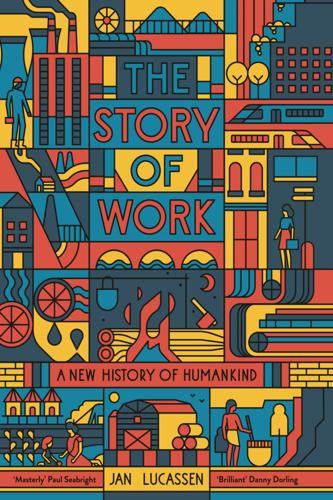
The Story of Work: A New History of Humankind
by
Jan Lucassen
Published 26 Jul 2021
Robotization is the phase we live in now. This also led, albeit in fits and starts, to a major shift in labour relations. Slowly but surely, the importance for the market of domestic, independent and somewhat faster, unfree labour decreased. This was heralded by the abolition of slavery in Haiti, of the transatlantic slave trade and of serfdom in Eastern Europe, culminating in the establishment of the International Labour Organization (hereafter, ILO) and the Universal Declaration of Human Rights. The shifts in labour relations outlined in this book (see Figure 1), and certainly the global convergence of labour relations in the last two centuries, should not be seen as a natural phenomenon, but primarily as the result of individual and collective strategies and actions by working people.
…
According to the same logic, it was strictly forbidden for Muslims to sell enslaved people to non-Muslims.201 It is estimated that, over a thousand years, the numbers of slaves transported overland from Africa to the north and north-east amounted to more than half the numbers shipped to the Americas in four centuries. This sounds impressive, but the intensity of the later transatlantic slave trade was five times that during antiquity. Apart from the many other differences between these two destinations and the particular parts of Africa where the slaves originated, this difference in intensity is mainly the result of transport logistics. Most African slaves going north had to walk themselves through the desert to their new workplaces.
…
West African exports of gold and slaves were balanced by imports of copper (in the form of rods and rings, also used as currencies), in particular, and, in addition, brightly coloured cloth and many other different goods, including cowries and beads for currency circulation.203 With the development of the sugar plantations in the Atlantic and African islands (São Tomé and Principe) and, finally, in Brazil, the demand for gold, ivory and other African products was surpassed by that of ‘black gold’: slaves. We have seen already how unfree American Indians were replaced by Africans in the course of the sixteenth century. The transatlantic slave trade increased dramatically after 1600, surpassing the trans-Saharan stream. Not only did the Portuguese step in, but also the Dutch, followed by the British and later also the French and other European nations. Over the centuries, 12.6 million slaves were transported from Africa to the Americas, half of those in the eighteenth century.
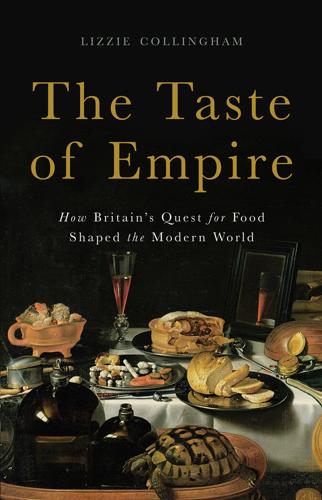
The Taste of Empire: How Britain's Quest for Food Shaped the Modern World
by
Lizzie Collingham
Published 2 Oct 2017
Those slaves who were surplus to requirements had since the twelfth century been transported across the Sahara Desert to the Muslim world around the Mediterranean basin.23 Now the insatiable demand for a steady stream of miserable captives to feed the maws of the European slave ships created a burgeoning new market. It was the fate of 12–15 million Africans to be sold into the Atlantic slave trade. With the arrival of the Europeans, West Africa was inexorably drawn into the Atlantic economy. The Atlantic slave trade placed an immense strain on West Africa’s agriculture. The loss of millions of fit and able men and women increased the ratio of dependants to every worker from 65 to 80. The demand for food was particularly intense on the coast.
…
Eedle, Arthur and Rosalind, Albion Restored: A Detective Journey to Discover the Birth of Christianity in England (Lulu, Lincs., 2013). Ellis, John, The World War II Databook: The Essential Facts and Figures for All the Combatants (Aurum Press, London, 1993). Eltis, David, and David Richardson, Atlas of the Transatlantic Slave Trade (Yale University Press, London, 2010). Emerson, Lucy, The New England Cookery, or the Art of Dressing All Kinds of Flesh, Fish and Vegetables and the Best Modes of Making Pastes, Puffs, Pies, Tarts, Pudding, Custards and Preserves, and all kind of Cakes… Particularly adapted to this part of our Country (Josiah Parks, Montpelier, 1808).
…
McCusker and Menard argue that planters used the money they made from tobacco and cotton to buy slaves, and that they were already buying them before sugar was introduced to the island. But this is contradicted by Gragg, who has looked at the ships bringing slaves to Barbados and times their arrival with that of sugar: McCusker and Menard, ‘The sugar industry in the seventeenth century’. 38. Eltis and Richardson, Atlas of the Transatlantic Slave Trade, p.3; Beckles, ‘The “hub of Empire”’, p.232. 39. Gragg, ‘“To procure negroes”’, p.65. 40. Amussen, Caribbean Exchanges, p.31. 41. Beckles, ‘The “hub of Empire”’, p.227; Thompson, ‘Henry Drax’s instructions on the management of a seventeenth-century Barbadian sugar plantation’, p.575. 42.
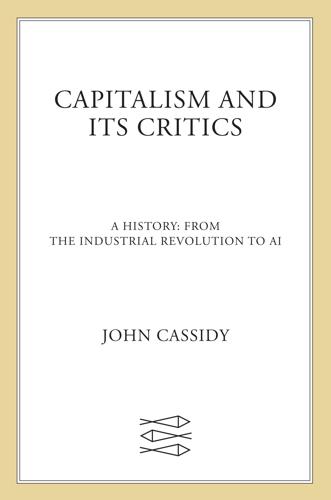
Capitalism and Its Critics: A History: From the Industrial Revolution to AI
by
John Cassidy
Published 12 May 2025
Smith, Wealth of Nations, Books IV–V (1999), 72. 26. Smith, Wealth of Nations, Books IV–V (1999), 209. 27. Trans-Atlantic Slave Trade Database, 2021, Slavevoyages,org, https://www.slavevoyages.org/assessment/estimates. 28. Trans-Atlantic Slave Trade Database. 29. Trans-Atlantic Slave Trade Database. 30. The National Archives, “Slavery and the British Transatlantic Slave Trade,” https://www.nationalarchives.gov.uk/help-with-your-research/research-guides/british-transatlantic-slave-trade-records. 31. Richard B. Sheridan, “The Formation of Caribbean Plantation Society, 1689–1748,” in The Oxford History of the British Empire, Volume II: The Eighteenth Century (New York: Oxford University Press, 1998), table 18.2, 401. 32.
…
Sanchez Manning, “Britain’s Colonial Shame: Slave-owners Given Huge Payouts After Abolition,” Independent (US ed.), February 24, 2013, https://www.independent.co.uk/news/uk/home-news/britain-s-colonial-shame-slaveowners-given-huge-payouts-after-abolition-8508358.html. 37. Smith, Wealth of Nations, Book III (1986), 488–89. 38. Trans-Atlantic Slave Trade Database. 39. Anthony Tibbles, “TextPorts Conference, April 2000,” Liverpoolmuseums.org.uk /ports-of-transatlantic-slave-trade. 40. Malachy Postlethwayt, The African Trade, the Great Pillar and Support of the British Plantation Trade in North America (London, 1745), 4. 41. Postlethwayt, African Trade, 34. 42. James Steuart, An Inquiry into the Principles of Political Economy, Book II: Of Trade and Industry (1767), https://www.marxists.org/reference/subject/economics/steuart/book2.htm. 43.
…
“At the particular time when discoveries were made,” Smith wrote, “the superiority of force happened to be so great on the side of the Europeans that they were enabled to commit with impunity every sort of injustice in those remote countries.”26 Another great injustice, of course, was the transatlantic slave trade. Between 1501 and 1866, according to the latest scholarly estimates, roughly 12.5 million Africans were forcefully transported to the Americas, about half of them to the Caribbean and roughly another 40 percent to Brazil.27 The profit motive and demand for labor drove this dreadful phenomenon.
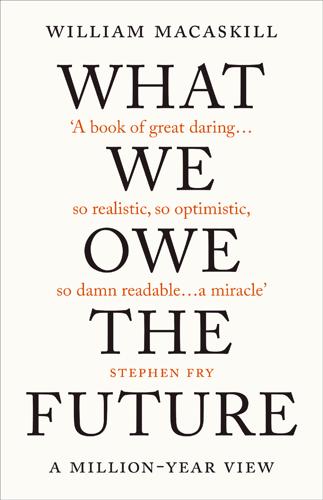
What We Owe the Future: A Million-Year View
by
William MacAskill
Published 31 Aug 2022
Britain’s parliament was persuaded to abolish the slave trade in 1807 and to make owning people illegal across most of the British Empire in 1833.46 After 1807 the British government resolved to stamp out slave trading worldwide. They used diplomacy and bribery to persuade other nations to ban the transatlantic slave trade and used the Royal Navy’s West Africa Squadron to police the seas.47 This made it harder for slave ships to travel between West Africa, the United States, and the American and Caribbean colonies of France, Spain, Portugal, and Holland. The campaign ultimately captured more than two thousand slave ships and freed over two hundred thousand enslaved people, although those freed were often exploited in other ways and sent to work across the British Empire.48 The abolition of slavery was an example of a values change, by which I mean a change in the moral attitudes of a society, or in how those attitudes are implemented and enforced.
…
In the years leading up to abolition, British colonies produced more sugar than the rest of the world combined, and Britain consumed the most sugar of any country.85 When slavery was abolished, the shelf price of sugar increased by about 50 percent, costing the British public £21 million over seven years—about 5 percent of British expenditure at the time.86 Indeed, the slave trade was booming rather than declining: even though Britain had abolished its slave trade in 1807, more Africans were taken in the transatlantic slave trade between 1821 and 1830 than in any other decade except the 1780s.87 The British government paid off British slave owners in order to pass the 1833 Slavery Abolition Act, which gradually freed the enslaved across most of the British Empire.88 This cost the British government £20 million, amounting to 40 percent of the Treasury’s annual expenditure at the time.89 To finance the payments, the British government took out a £15 million loan, which was not fully paid back until 2015.
…
Slavery had died out in France and England by the end of the twelfth century, replaced by serfdom.99 Serfs generally had more freedoms than enslaved people, and they typically could not be bought or sold, though they and their children were bound to a particular plot of land which they could not leave, and they were required to work for the land’s owner.100 Following the Black Death in the fourteenth century, serfdom was soon replaced by free labour throughout Western Europe.101 Abolition might seem, therefore, to be the inevitable next step of this progressive trend. However, the full historical picture is much more complicated. One enormous complication is the transatlantic slave trade itself: despite the domestic trend towards free labour, the European powers enslaved people on a massive scale; this alone makes the claim about a morally driven trend unclear at best. Second, we see no similar trend in other parts of the world.102 In parts of Eastern Europe, serfdom intensified after the Black Death rather than declined.103 In China, slavery waxed and waned over time.
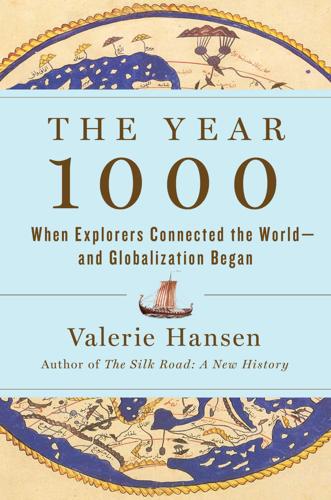
The Year 1000: When Explorers Connected the World―and Globalization Began
by
Valerie Hansen
Published 13 Apr 2020
Wangara: Ivor Wilks, “Wangara, Akan and Portuguese in the Fifteenth and Sixteenth Centuries,” Journal of African History 23.3 (1982): 333–49; Wilks translates the original, P. de Cenival and Th. Monod, Description de la Côte d’Afrique de Ceuta au Sénégal par Valentim Fernandes (1506–1507) (1938): 84–87. Atlantic slave trade: Lovejoy, Transformations in Slavery, 36–37 (Table 2.3 Estimates of the Atlantic Slave Trade, 1450–1600), 40 (Atlantic trade). Chapter Six: Central Asia Splits in Two Thanks to Arezou Azad (University of Birmingham), George E. Malagaris (Oxford), Lance Pursey (University of Birmingham), Irina Shingiray (Oxford), and Naomi Standen (University of Birmingham) for their help with this chapter.
…
New pathways bound together different parts of the globe, and trade goods, people, and religions all moved along those pathways. The ongoing demand for slaves in Constantinople (modern Istanbul), Baghdad, Cairo, and other cities resulted in the forced movement of millions of people from Africa, Eastern Europe, and Central Asia—hundreds of years before the transatlantic slave trade began. Globalization profoundly affected those who never left home. Once a ruler converted—and many did around 1000—many of their subjects adopted the new faith as well. People living on both the Southeast Asian mainland and the islands gave up their traditional occupations to work full-time to supply Chinese consumers, both rich and poor, with spices and fragrant woods.
…
Almost all of the sources of slaves were in non-Muslim lands located near the borders of the Abbasid empire, which makes perfect sense. Once slave traders had obtained slaves, they brought them the shortest possible distance and sold them. The volume of the trans-Saharan slave trade before 1500 was massive, but it’s hard to pin down exact figures because there are no sources like those documenting the transatlantic slave trade. Because the ships that brought slaves to the Americas listed them on manifests, or passenger lists, historians have been able to calculate that 12.5 million slaves crossed the Atlantic between the start of the slave trade in the early 1500s and its abolition throughout the British empire in 1833.
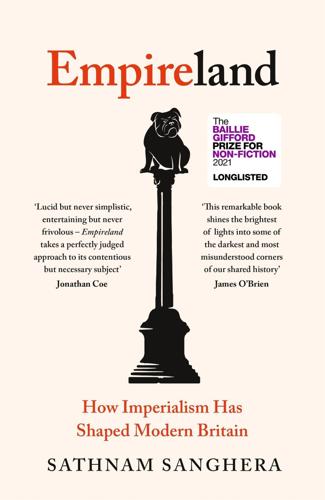
Empireland: How Imperialism Has Shaped Modern Britain
by
Sathnam Sanghera
Published 28 Jan 2021
Sure, there is no consensus emerging on education, and British politicians generally resist public apologies for imperial events such as Jallianwala Bagh and slavery, with former Prime Minister David Cameron, whose distant cousin received compensation for slaves he had owned, refusing to apologize during an official visit to Jamaica, saying rather, ‘I do hope that, as friends who have gone through so much together since those darkest times, we can move on from this painful legacy and continue to build for the future.’ But Britain has already apologized for some imperial events and even paid reparations of sorts: as we have seen, in 1997, Tony Blair formally apologized for the Irish Potato Famine; in 2007 he said sorry for Britain’s role in the transatlantic slave trade after meeting Ghana President John Agyekum Kufuor; and in 2013 we paid £20 million to 5,000 elderly Kenyans who were tortured during the Mau Mau rebellion. There are hundreds of other campaigns around, and if I have, as a result of going from no knowledge to a little knowledge over the course of about two years, earned the right to proffer a single piece of advice to campaigners, it would be to be positive.
…
Some of the best responses to our history in recent years have been in creative fields. I’m thinking here of ‘Fons Americanus’, the 40-feet-tall working fountain inspired by the Victoria Memorial in front of Buckingham Palace which was exhibited in the Tate Modern recently and, instead of celebrating empire like the original, explored the transatlantic slave trade. I’m thinking of the anti-slavery installation that appeared around Bristol’s Colston statue in 2018, which featured dozens of figurines packed tightly as if they were aboard an eighteenth-century slave boat9 – a chilling visual reminder of how Colston made his wealth. I’m thinking of We Bury Our Own, a series of photographic self-portraits from contemporary Aboriginal artist Christian Thompson for the Pitt Rivers Museum in which one of the first two Aboriginal students to study at the University of Oxford sported the university’s formal dress and obscured his face, as a way of responding to the museum’s historical collection of photographs of Indigenous Australians.10 And I’m thinking of the time students at the University of Manchester painted over a mural of Rudyard Kipling’s ‘If …’ with a mural of Maya Angelou’s ‘Still I Rise’, on the grounds of Kipling’s racism and imperialism.11 Much of the press reaction was hostile, but the students actually created a quietly profound piece of work.
…
More generally, it is important to remember that parts of the empire were still expanding in the 1870s (the Scramble for Africa was just beginning) when in other areas it was very old (the Caribbean) or had already collapsed (the USA). The tone and culture of empire varied wildly during its history. There was an extended period between 1660 and 1807 when Britain profiteered from the evils of the Atlantic slave trade, shipping around 3 million Africans to America, but then, after Parliament had outlawed slavery, it took a leading role in abolishing it. There was a long period when missionaries were discouraged, for fear that they might disrupt the imperialists’ work, but then missionaries were encouraged, with empire beginning to see itself as a civilizing mission.
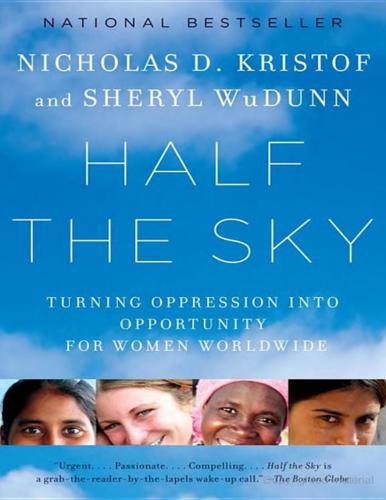
Half the Sky: Turning Oppression Into Opportunity for Women Worldwide
by
Nicholas D. Kristof
and
Sheryl Wudunn
Published 7 Sep 2008
Since Meena didn’t cross a border, she wasn’t trafficked in the traditional sense. That’s also true of most people who are enslaved in brothels. As the U.S. State Department notes, its estimate doesn’t include “millions of victims around the world who are trafficked within their own national borders.” In contrast, in the peak decade of the transatlantic slave trade, the 1780s, an average of just under eighty thousand slaves were shipped annually across the Atlantic from Africa to the New World. The average then dropped to a bit more than fifty thousand between 1811 and 1850. In other words, far more women and girls are shipped into brothels each year in the early twenty-first century than African slaves were shipped into slave plantations each year in the eighteenth or nineteenth centuries—although the overall population was of course far smaller then.
…
The British antislavery efforts led to a brief war with Brazil in 1850 and to war scares with the United States in 1841 and with Spain in 1853, as well as to sustained tense relations with France. Yet Britain did not flinch. Its example ultimately prompted France to abolish slavery in 1848, inspired the American abolitionists and the Emancipation Proclamation, and pushed Cuba to enforce a ban on slave imports in 1867, in effect ending the transatlantic slave trade. Two scholars, Chaim Kaufmann and Robert Pape, calculate that for sixty years Britain sacrificed an annual average of 1.8 percentage points of its GNP because of its moral commitment to ending slavery. That is an astonishing total, cumulatively amounting to more than an entire year’s GNP for Great Britain (for the United States today, it would be the equivalent of sacrificing more than $14 trillion), a significant and sustained sacrifice in the British standard of living.
…
In the same way, these days, the “serious issues” are typically assumed to be terrorism or the economy. But the moral issue of the subjugation of women isn’t frivolous today any more than slavery was in the 1790s. Decades from now, people will look back and wonder how societies could have acquiesced in a sex slave trade in the twenty-first century that, as we’ve seen, is bigger than the transatlantic slave trade was in the nineteenth. They will be perplexed that we shrugged as a lack of investment in maternal health caused half a million women to perish in childbirth each year. Leadership must come from the developing world itself, and that is beginning to happen. In India, Africa, and the Middle East, men and women alike are pushing for greater equality.
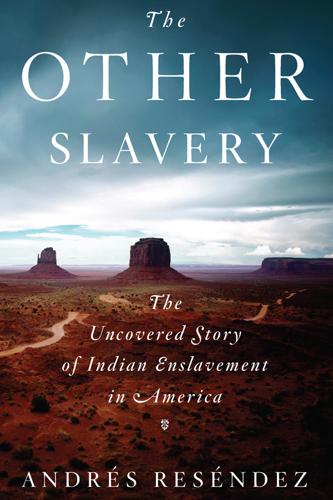
The Other Slavery: The Uncovered Story of Indian Enslavement in America
by
Andrés Reséndez
Published 11 Apr 2016
On the holding pens, see the juicio de residencia a los jueces de Apelación (a type of judicial proceeding), 1516, quoted in Mira Caballos, El indio antillano, 265. 51. Both quotes are from Mira Caballos, El indio antillano, 285. For Vázquez de Ayllón’s expeditions, see Hoffman, A New Andalucia, 44. For transatlantic mortality rates, see Philip D. Curtin, The Atlantic Slave Trade: A Census (Madison: University of Wisconsin Press, 1969), 275–290; and David Eltis and David Richardson, Atlas of the Transatlantic Slave Trade (New Haven, CT: Yale University Press, 2010), 167–187. 52. On the determined resistance of the Carib Indians, see Mira Caballos, El indio antillano, 294–302, and Whitehead, “The Crises and Transformations of Invaded Societies,” 875–888. 53.
…
If we were to add up all the Indian slaves taken in the New World from the time of Columbus to the end of the nineteenth century, the figure would run somewhere between 2.5 and 5 million slaves (appendix 1).9 Such large numbers of enslaved Indians not only approximate the African tragedy in sheer scale but also reveal an even more catastrophic result in relative terms. Without question, both Africans and Indians lost incommensurably. Yet broad comparisons between the two slaveries—still incipient and subject to revision—can provide some useful context. At the height of the transatlantic slave trade, West Africa suffered a population decline of about twenty percent, as it went from about twenty-five million in 1700 to roughly twenty million by 1820. During this time, some six million Africans were shipped to the New World, and at least two million died in raids and wars related to the traffic of slaves.
…
And yet it remains hard to see the forest for the trees. Lacking a sense of the overarching system of enslavement, it is impossible to put such scattered and localized practices in their proper places, just as it would be extremely difficult to make sense of the kidnappings or intertribal warfare of West Africa without reference to the transatlantic slave trade. With The Other Slavery, I hope to provide a broad but detailed portrait of the system of Native enslavement that loomed over North America for four centuries and is a key missing piece of this continental history. Before embarking on this exploration, I feel compelled to issue two caveats.
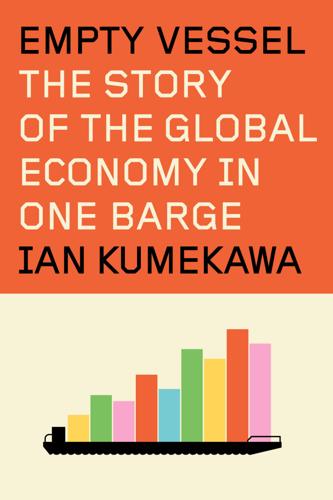
Empty Vessel: The Story of the Global Economy in One Barge
by
Ian Kumekawa
Published 6 May 2025
Bonny stood out for “its ability to keep loading times down.”[38] Historians have estimated that, at Bonny, an average of five and a half captives embarked every day on each waiting slave ship in the late eighteenth century: a number up to three times that at other trading sites on what was horrifically labeled the “slave coast” on many European maps. [39] This fact drew money-minded European slave traders back to the port time and time again. In so doing, as one shipmaster wrote in 1790, they forged lasting business and credit relationships with “expert traders,” including the rulers of Bonny itself. The result of efficient business was human misery. According to the Transatlantic Slave Trade Database, some 407,422 Africans embarked on slave ships at Bonny. Only 347,688 disembarked at the end of their voyages.[40] As G. Ugo Nwokeji and other historians have pointed out, there are arresting continuities between the slave trade and the trade in Nigerian oil in the twentieth and twenty-first centuries.
…
See twenty-foot equivalent units Thatcher, Margaret, 5, 42–43, 150, 232 political drama of, 64–66 privatization program started by, 68–70 privatizing housing of soldiers, 66–68 Thirty Years’ War, 38 Thompson, Julian, 57 Tompkins Square Park. See homelessness, New York City Toyota, 107–9 Transatlantic Slave Trade Database, 205 transfer, registration, 95–99 transport barge, designation, 21–23. See also Vessel Treacy, Daniel, 159–60 Tubman, William, 91 twenty-foot equivalent units (TEUs), 36 Two Bridges Urban Renewal Area, 117 Type 1, car.
…
The result is Empty Vessel. Introduction On a spring day in 1989, a container ship arrived in New York harbor from Eemshaven, a deepwater port in the Netherlands. The Vessel, named the Bibby Resolution, belonged to a well-established Liverpool shipping line, one whose founder had invested in the Atlantic slave trade two hundred years before. But while the company that owned it had a history that went back centuries, the ship itself was unmistakably a product of the late twentieth century. The Vessel was assembled out of standardized parts developed for streamlining oceanic trade. It was a global polyglot: manufactured in Sweden, it had a British owner and an international crew.
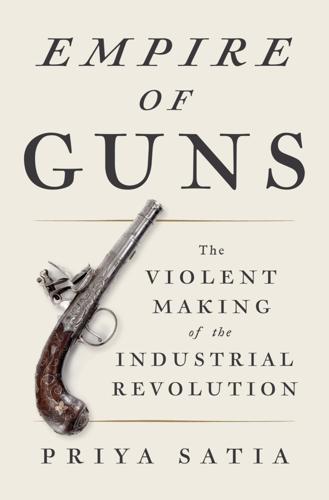
Empire of Guns
by
Priya Satia
Published 10 Apr 2018
He also dealt in: BCA: MS3101/C/D/15/2/1: JF, Nerbel and Co. to Farmer & Galton, September 10, 1752; MS3101/C/D/15/5/11: JF to SG, July 8, 1751; MS3101/C/D/15/5/13: JF to SG, December 10, 1753. “little parcel of”: BCA: MS3101/C/D/15/1/1: SG to JF, May 10, 1755. the Liverpool merchant John Hardman: Rawley and Behrendt, The Transatlantic Slave Trade, 172; Richards, “The Birmingham Gun Manufactory of Farmer and Galton,” 52–54. East India goods: BCA: MS3101/C/C/2/1/18: JF to Joseph Farmer, February 18, 1744. also borrowed from: See, for instance, BCA: MS3101/C/D/15/6/1: Joseph Farmer to SG, September 5, 1750; MS3101/C/D/15/1/1: SG to Joseph Farmer, December 28, 1751.
…
“War-Winning Weapons: The Measurement of Technological Determinism in Military History.” Journal of Military History 54 (1990): 403–34. ———, ed. Technology, Disease and Colonial Conquests, Sixteenth to Eighteenth Centuries: Essays Reappraising the Guns and Germs Theories. Boston: Brill, 2001. Rawley, James A., and Stephen D. Behrendt. The Transatlantic Slave Trade: A History. New York: Norton, 1981. Ray, Arthur. Indians in the Fur Trade: Their Role as Trappers, Hunters, and Middlemen in the Lands Southwest of Hudson Bay, 1660–1870. Toronto: University of Toronto Press, 1974. Reid, Richard. Warfare in African History. New York: Cambridge University Press, 2012.
…
. ——— . “Crime in England: Long-Term Trends and the Problem of Modernization.” In The Civilization of Crime: Violence in Town and Country since the Middle Ages, edited by Eric Johnson and Eric Monkkonen, 17–34. Urbana: University of Illinois Press, 1996. Shumway, Rebecca. The Fante and the Transatlantic Slave Trade. Rochester, N.Y.: University of Rochester Press, 2011. Sifton, John. “A Brief History of Drones.” The Nation, February 7, 2012, www.thenation.com/article/brief-history-drones. Silverman, David. Thundersticks: Firearms and the Violent Transformation of Native America. Cambridge, Mass.: Belknap Press, 2016.
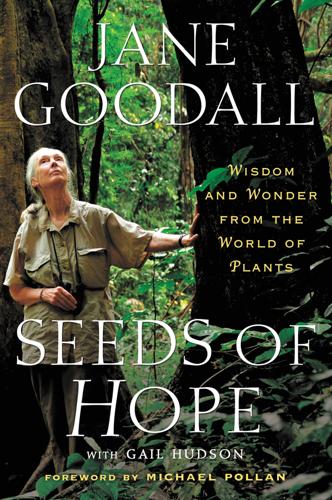
Seeds of Hope: Wisdom and Wonder From the World of Plants
by
Jane Goodall
Published 1 Apr 2013
Thomas Clarkson, The History of the Rise, Progress, and Accomplishment of the Abolition of the Slave-Trade, by the British Parliament (New York: Cambridge University Press, 1839). “Africa and the Atlantic Slave Trade,” UK National Archives, accessed August 16, 2013, http://www.nationalarchives.gov.uk/pathways/blackhistory/africa_caribbean/africa_trade.htm. 6. “12.5 million people” Ibid. “Assessing the Slave Trade: Estimates,” Trans-Atlantic Slave Trade Database, accessed August 16, 2013, http://www.slavevoyages.org/tast/assessment/estimates.faces. 7. “mainly from West and Central Africa” David Eltis, “A Brief Overview of the Trans-Atlantic Slave Trade,” last modified 2007, http://www.slavevoyages.org/tast/assessment/essays-intro-04.faces. 8.
…
The development of these plantations thus went hand in hand with the expansion of the colonies—particularly those of Britain, France, Holland, Spain, and Portugal—in tropical and subtropical countries, including those in the Caribbean and the Americas. However, in order to be economically successful, the colonial invaders needed plentiful supplies of cheap labor—and it was this that led to the transatlantic slave trade. The first African slaves were traded by the Portuguese in the sixteenth century, and during the following four hundred years or so an estimated 12.5 million people were abducted from their homes, mainly from West and Central Africa, and shipped to the European colonies. Most were forced to work on the plantations.
…
Norimitsu Onishi, “The Bondage of Poverty That Produces Chocolate,” New York Times, July 29, 2001, http://www.nytimes.com/2001/07/29/world/the-bondage-of-poverty-that-produces-chocolate.html?pagewanted=all&src=pm. Alan Rice, “Life on Plantations,” Revealing Histories: Remembering Slavery, accessed August 23, 2013, http://revealinghistories.org.uk/africa-the-arrival-of-europeans-and-the-transatlantic-slave-trade/articles/life-on-plantations.html. 29. “lured from impoverished Mali” Onishi, op. cit., http://www.nytimes.com/2001/07/29/world/the-bondage-of-poverty-that-produces-chocolate.html?pagewanted=all&src=pm. Sudarsan Raghavan and Sumana Chatterjee, “A Taste of Slavery,” [copy], Knight Ridder Newspapers, June 24, 2001, http://vision.ucsd.edu/~kbranson/stopchocolateslavery/atasteofslavery.html. 30.
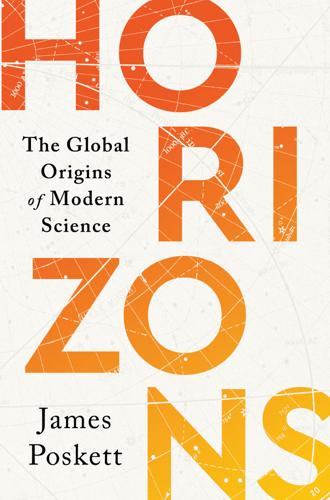
Horizons: The Global Origins of Modern Science
by
James Poskett
Published 22 Mar 2022
This expansion was driven primarily by increased trade across the Sahara, as caravans travelling from Timbuktu transported gold, salt, and slaves to Egypt and beyond, connecting West Africa through the Silk Road to Asia. During the same period, other West African kingdoms began trading with Europeans on the coast. This marked the beginning of the transatlantic slave trade, the impact of which we will explore in further detail in the next two chapters. Timbuktu soon grew rich, allowing the ruler of the Songhay Empire to support ‘a magnificent and well-furnished court’ complete with ‘numerous doctors, judges, scholars, [and] priests’. Alongside trade, religion was another key factor connecting Africa to the wider world.
…
The clockmaker John Harrison famously adopted this approach, developing a special marine timekeeper which was tested on a voyage to Jamaica in 1761. The hope was that Harrison’s timekeeper might aid in navigation between West Africa and the Caribbean, another reminder of the role of the transatlantic slave trade in shaping eighteenth-century science. However, the majority of methods favoured by the Board of Longitude were based on astronomical observations. These included measurements of the satellites of Jupiter as well as measurements of the angle between the Moon and particular stars. Longitude at sea could then be computed by comparing these results with tables produced back at the Royal Observatory in Greenwich.
…
We began in the fifteenth century, with the colonization of the Americas, before exploring the growth of trading and religious networks across Asia and Africa in the sixteenth and seventeenth centuries. We then moved on to the eighteenth century, a period in which European empires and the transatlantic slave trade expanded significantly. In the nineteenth century, we witnessed an age of capitalism, nationalism, and industrial warfare. And finally, in the twentieth century, we uncovered a world of ideological conflict, a world of anticolonial nationalists and communist revolutionaries. Each of these four periods of world historical change shaped the development of modern science.
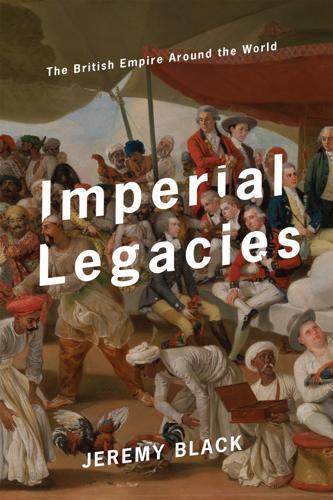
Imperial Legacies
by
Jeremy Black;
Published 14 Jul 2019
Arthur Burns and Joanna Innes (Cambridge: Cambridge University Press, 2003), 295–311. 17 Catherine Hall et al., Legacies of British Slave-Ownership: Colonial Slavery and the Formation of Victorian Britain (Cambridge: Cambridge University Press, 2014). 18 David Brion Davis, The Problem of Slavery in the Age of Emancipation (New York: Alfred A. Knopf, 2014). 19 D. Eltis, “The British contribution to the Nineteenth-Century Transatlantic Slave Trade,” Economic History Review 32, no. 2 (1979): 211–27. 20 Peter Grindal, Opposing the Slavers: The Royal Navy’s Campaign against the Atlantic Slave Trade (London: I.B. Tauris, 2016). 21 Richard Huzzey, Freedom Burning: Anti-Slavery and Empire in Victorian Britain (Ithaca, NY: Cornell University Press, 2012). 22 Palmerston to Russell, July 21, August 13, 1862, NA.
…
The Maori themselves had markedly expansionist tendencies in the early nineteenth century, as, at the expense of non-Maori, in the Chatham Islands, but, more particularly, at the expense of other Maori. To blame these tendencies on guns obtained by means of trade with Europeans is to make the means the cause, which is inappropriate but parallels the habit of blaming the Atlantic slave trade simply on Europeans rather than allocating due agency to enslavement and sale of Africans by Africans. The legacy of empire came to play a much more polarizing role in Australian public identity and even politics from the 1990s, as the long-standing issue of Aboriginal claims became more central.
…
CHAPTER 8 — THE SLAVE TRADE AND RACISM 1 Western Times, 6, 13, April 1833. 2 E. Gibson, Two Letters (London, 1727), 10–11. 3 Travis Glasson, Mastering Christianity: Missionary Anglicanism and Slavery in the Atlantic World, 1680–1783 (New York: Oxford University Press, 2012). 4 Jeremy Black, The Atlantic Slave Trade in World History (London: Routledge, 2015), The Slave Trade (London: Social Affairs Unit, 2007). 5 Sowande M. Mustakeem, Slavery at Sea: Terror, Sex, and Sickness in the Middle Passage (Urbana, IL: University of Illinois Press, 2016). 6 Jack P. Greene, Settler Jamaica in the 1750s: A Social Portrait (Charlottesville, VA: University of Virginia Press, 2016). 7 Nuala Zahedieh, “Colonies, copper and the market for inventive activity in England and Wales, 1680–1730,” Economic History Review 66, no. 3 (2013): 805–25. 8 Joseph E.
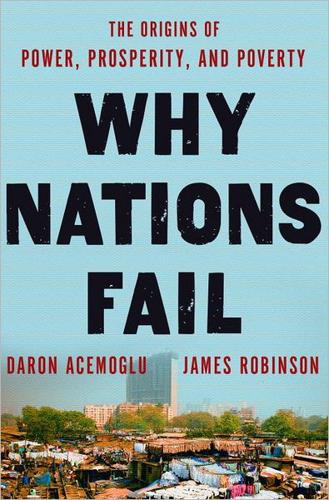
Why Nations Fail: The Origins of Power, Prosperity, and Poverty
by
Daron Acemoglu
and
James Robinson
Published 20 Mar 2012
Soon the diggers, as these adventurers came to be known, were a powerful force in Australian politics, particularly in Victoria. They played an important role in pushing forward the agenda of universal suffrage and the secret ballot. We have already seen two pernicious effects of European expansion and colonial rule in Africa: the introduction of the transatlantic slave trade, which encouraged the development of African political and economic institutions in an extractive direction, and the use of colonial legislation and institutions to eliminate the development of African commercial agriculture that might have competed with Europeans. Slavery was certainly a force in Sierra Leone.
…
Neil, Willie Henderson, and Thomas Tlou (1995). Seretse Khama, 1921–1980. Bloemfontein, South Africa: Macmillan. Perkins, Dwight H., Steven Radelet, and David L. Lindauer (2006). Development Economics. 6th ed. New York: W. W. Norton and Co. Pettigrew, William (2007). “Free to Enslave: Politics and the Escalation of Britain’s Transatlantic Slave Trade, 1688–1714.” William and Mary Quarterly, 3rd ser., LXIV: 3–37. ——(2009). “Some Underappreciated Connections Between Constitutional Change and National Economic Growth in England, 1660–1720.” Unpublished paper. Department of History, University of Kent, Canterbury. Phillipson, David W. (1998).
…
Though located in very different parts of the world, Afghanistan, Haiti, and Nepal have much in common institutionally with most nations in sub-Saharan Africa, and are thus some of the poorest countries in the world today. How African institutions evolved into their present-day extractive form again illustrates the process of institutional drift punctuated by critical junctures, but this time often with highly perverse outcomes, particularly during the expansion of the Atlantic slave trade. There were new economic opportunities for the Kingdom of Kongo when European traders arrived. The long-distance trade that transformed Europe also transformed the Kingdom of Kongo, but again, initial institutional differences mattered. Kongolese absolutism transmogrified from completely dominating society, with extractive economic institutions that merely captured all the agricultural output of its citizens, to enslaving people en masse and selling them to the Portuguese in exchange for guns and luxury goods for the Kongolese elite.
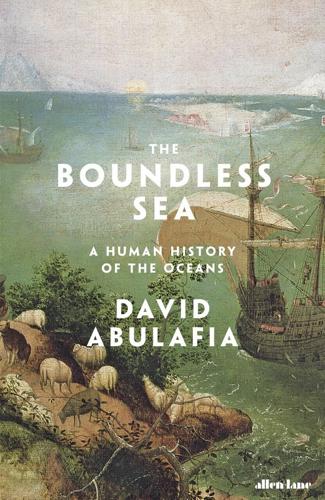
The Boundless Sea: A Human History of the Oceans
by
David Abulafia
Published 2 Oct 2019
Blake, ed., Europeans in West Africa (1450–1560): Documents to Illustrate the Nature and Scope of Portuguese Enterprise in West Africa (2 vols., London, 1942); Halikowski Smith, ‘Mid-Atlantic Islands’, pp. 73–4. 22. T. Green, The Rise of the Trans-Atlantic Slave Trade in Western Africa, 1300–1589 (Cambridge, 2012), pp. 95–115; T. Hall, ed. and transl., Before Middle Passage: Translated Portuguese Manuscripts of Atlantic Slave Trading from West Africa to Iberian Territories, 1513–26 (Farnham, 2015). 23. Examples may be seen in the Ethnographic Museum in Praia, Santiago. 24. Green, Rise of the Trans-Atlantic Slave Trade , pp. 99–100; cotton: Hall, ed. and transl., Before Middle Passage , pp. 36, 149, 180, 213. 25. A. Carreira, Cabo Verde: Formação e Extinção de uma Sociaedade escarvorata (1460–1878) (3rd edn, Praia de Santiago, 2000). 26.
…
Hall, The Role of Cape Verde Islanders in Organizing and Operating Maritime Trade between West Africa and Iberian Territories, 1441–1616 (Ph.D. dissertation, Johns Hopkins University, Baltimore, 1992, distributed by University Microfilms International, 1992), p. 234; Hall, ed. and transl., Before Middle Passage , pp. 266, 275–6; Green, Rise of the Trans-Atlantic Slave Trade , p. 101. 30. I. Cabral, A primeira elite colonial atlântica: dos ‘homens honrados brancos’ de Santiago à ‘Nobreza da Terra’, finais do séc. V–início do séc. XVII (Praia, 2015); Z. Cohen, Os filhos da folha (Cabo Verde – séculos XV–XVIII) (Praia, 2007); Green, Rise of the Trans-Atlantic Slave Trade , pp. 103–7. 31. História geral do Cabo Verde (Lisbon and Praia de Santiago, 1991), vol. 1, pp. 264–7, 276–9; Hall, ed. and transl., Before Middle Passage , pp. 84–5. 32.
…
War captives were sent down to Elmina and trading stations on the west coast of Africa by the African allies of the Portuguese – noble prisoners of war, peasant farmers, women and children. Elmina itself had only limited holding facilities; but the Cape Verde Islands were the perfect base for a transatlantic slave trade, a collection point that lay astride one of the obvious routes to the Caribbean. Thus there was no need to go to the slave market in Lisbon or Seville to buy slaves. The economy of the Cape Verde Islands was transformed by the growing demand for African slaves. Originally, many of them had been kept on the islands in the hope that they could conjure life out of the poor soil of the islands.
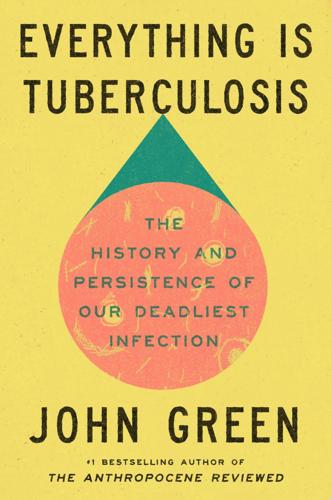
Everything Is Tuberculosis: The History and Persistence of Our Deadliest Infection
by
John Green
Published 18 Mar 2025
We found little in their houses, except some mats, gourds, and some earthen pots. Our men at their departure set the town on fire, and it was burnt (for the most part of it) in a quarter of an hour, their houses being covered with reed and straw. This story of destruction and violence accelerated with the transatlantic slave trade. In the eighteenth and nineteenth centuries, roughly four hundred thousand people living in what is now Sierra Leone were kidnapped and sold into slavery, fueling terror throughout the region. Sometimes slave raiders broke into homes in the middle of the night and stole away entire families.
…
There is nothing inevitable or natural about the impoverishment of countries like Sierra Leone. * * * — Henry’s mother, Isatu, was born in 1968, seven years after Sierra Leone became an independent nation. She grew up in the southern Bonthe District. Her people were Mende, one of Sierra Leone’s largest ethnic groups, and also one of the groups most ravaged by the Atlantic slave trade. Growing up, Isatu heard stories of the slave raids that continued long after the official abolition of slavery in the British Empire. I want to be careful here not to imagine Isatu’s life as merely poor, or merely oppressed, or merely anything. Yes, she grew up in a village where malnutrition was common, and she was often hungry, especially after her father’s death when she was ten.
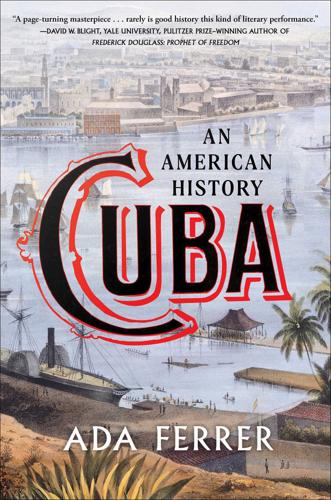
Cuba: An American History
by
Ada Ferrer
Published 6 Sep 2021
As its economy increasingly turned to sugar, the island looked to the United States to import everything from luxury goods (because ever-richer planters developed ever-richer tastes), to basic foodstuffs (because land was more profitable if it grew sugarcane), to industrial machinery (because it was necessary to turn the cane into sugar).22 If US businesses helped supply the machinery that powered Cuban sugar production, they also helped supply the people who did most of the labor. The United States had prohibited its citizens from selling human beings in foreign countries in 1800, and it outlawed the transatlantic slave trade to US territory in 1807. Spain, by a treaty signed with Britain, ended the slave trade to Cuba in 1820 (and then again in 1835, because the first ban was so ineffectual). Yet the vast majority of Africans brought to the island through the transatlantic slave trade arrived after the trade to Cuba became illegal. Indeed, of all the Africans forcibly transported there over three and a half centuries, more than 70 percent arrived after Spain illegalized the trade in 1820.23 Americans were deeply implicated in that illegal commerce.
…
De la Fuente, Havana and the Atlantic, 69. 16. David Wheat, Atlantic Africa and the Spanish Caribbean, 1570–1640 (Chapel Hill: University of North Carolina Press, 2018), 274–75; de la Fuente, Havana and the Atlantic, 107; The website slavevoyages.org has three databases: the Transatlantic Slave Trade Database (hereafter TSTD), the Transatlantic Slave Trade Estimates Database (TSTD-E), and the Intra-American Slave Trade Database (IASTD). TSTD, https://slavevoyages.org/voyages/mPTF8byb. 17. De la Fuente, Havana and the Atlantic, 136–46. 18. Alejandro de la Fuente, “Slaves and the Creation of Legal Rights in Cuba,” in Hispanic American Historical Review 87 (2007): 659–92; Wheat, Atlantic Africa, 280; Kenneth Kiple, Blacks in Colonial Cuba, 1774–1899 (Gainesville: University of Florida Press, 1976). 19.
…
A 1544 count of the population across the island tallied just 122 Spanish heads of household, about 900 free Native people, and some 700 enslaved souls. These numbers, however, did not take account of small Native communities that survived by remaining hidden and uncounted by the Spanish. Equally important, the 700 people held in slavery included not only Natives, but also Africans, who had begun arriving through the nascent transatlantic slave trade, to which we will turn a little later.28 Not every Spaniard left, of course, and not every Indigenous person died. A few Native communities quietly rebuilt. People had children and grandchildren, sometimes of mixed Spanish, Taíno, or African ancestry. Today in Cuba, a small number of people proudly claim Taíno identity.
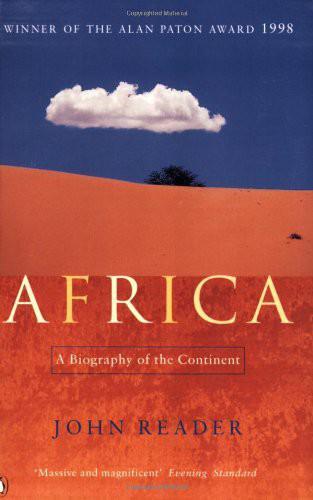
Africa: A Biography of the Continent
by
John Reader
Published 5 Nov 1998
(ed.), 1971, West African Resistance, London, Hutchinson Crowe, S.E., 1942, The Berlin West African Conference 1884 – 1885, London, Longman Crozier, F.P., 1937, The Men I Killed, London, Cape Cuatrecasas, P., Lockwood, D.H., and Caldwell, J.R., 1965, ‘Lactase deficiency in the adult’, The Lancet, 2 January, pp. 14 – 18 Curtin, P.D., 1969, The Atlantic Slave Trade: a Census, Madison, Wis., University of Wisconsin Press Curtin, P.D. (ed.), 1967, Africa Remembered: Narratives by West Africans from the Era of the Slave Trade, Madison, Wis., University of Wisconsin Press Curtin, P.D., 1975, Economic Change in Precolonial Africa, Madison, Wis., University of Wisconsin Press Curtin, Philip D., 1984, Cross-cultural Trade in World History, Cambridge, Cambridge University Press Curtin, Philip D., and Vansina, Jan, 1964, ‘Sources of the nineteenth century Atlantic slave trade’, J. Afr. Hist., vol. 5, pp. 185 – 208 Curtin, P., Feierman, S., Thompson, L., Vansina, J., 1978, African History, London, Longman Curtis, H., and Barnes, N.
…
Sci., 6(1), pp. 35 – 8 Yellen, John E., et al., 1995, ‘A Middle Stone Age worked bone industry from Katanda, Upper Semlike Valley, Zaire’, Science, 268, pp. 553 – 6 Young, Patrick, 1976, Drifting Continents, Shifting Seas, New York, NY, Franklin Watts Zeuner, F.E., 1963, A History of Domesticated Animals, London, Hutchinson INDEX ANC (African National Congress), 672, 675 Abako (Alliance des Ba-Kongo), 649 Abiola, Chief Moshood, 664 Abir (Anglo-Belgian India-Rubber Company), 538 – 40 Abushiri, 578 Abyssinia, 324 Acacus mountains, 170 Accra, 640 Achebe, Chinua, 275, 368 Achimota College, 621f Addis Ababa, 577, 659f Addo National Park, 253 Aden, 203, 345, 583 Aden, Gulf of, 197 Adowa, 577 Adrar Bous, 155 Adulis, 199f, 201, 202 – 3, 209f, 214, 296 Aegyptopithecus, 32 – 3, 35, 45 – 6 Afar depression, 64, 67 Afonso I, king of Kongo, 366f, 421 Afonso IV, king of Portugal, 325 Afonso V, king of Portugal, 334, 337 ‘African Eve’, 92 African National Congress (ANC), 672, 675 African Plate, 9 African studies, 607 – 8 Afrikaners, 459, 479 – 90, 594ff, 597, 637; see also: Boers; Trekboers; Voortrekkers Afro-Asiatic language family, 107, 174, 176, 178, 297 ‘Afro-European sapiens hypothesis’, 90 – 91, 92 Agadez, 180 Agaja, king of Dahomey, 413 age-grade system, 258 – 9, 275, 278, 360 agriculture/food production: Aksum, 209f, 214; and barter, 262; and cattle herding, 157f, 300f; decline in output, 675 – 6; development of, 142f, 145 – 53, 158 – 60, 161, 163, 243 – 56; and disease, 240 – 41; and education, 620; effect of introduction of cassava and maize, 406; and elephants, 252 – 6; FAO survey, 243; inland Niger delta, 222, 226, 248; Iron Age, 182; and plough, 203, 501; and slave labour, 423; Ukara, 248 – 52; mentioned, 192, 257 – 8; see also: domestication; and under names of individual crops Air mountains, 180 Akan, 336, 385f, 391, 415 Akintola, Chief, 661 Aksum, 199, 200 – 16, 217, 219, 225, 278, 296, 342; see also Axum Albasini, Joao, 497 Albert, Lake, 264 Alexandria, 345 Algarve, 326 Algeria, 76, 91, 580f, 601, 604, 634 Algoa Bay, 458f Alliance des Ba-Kongo (Abako), 649 Almoravids, 277 altitude, 205 aluminium, 220 Álvares, Father Francisco, 290, 356 – 9, 360, 362, 363 amakhanda, 472 Amanitere, Queen, 192 – 3 Amboseli basin, 254 American Anthropological Association, 369 American Colonization Society, 420 American Declaration of Independence, 419 Americas, the, 3, 233, 285, 324, 370 – 71, 372, 383, 405, 470, 519; see also: North America; United States Amersfoort, 447 Amiens, treaty of (1803), 453 amino acids, 208 Amsterdam 389, 408 Anatolia, 178f, 188 Andropogon greenwayi, 101 Anglo-Belgian India-Rubber Company (Abir), 538 – 40 Anglo-Boer war (1899 – 1902), 511 – 12, 587, 594 – 8 Anglo-French agreement (1889), 568 – 9 Anglo-German Treaty (1900), 565f Anglo-Portuguese Treaty, 533f Angola, 141, 338, 371, 385, 399, 409, 411, 432, 469, 521, 532, 548, 569, 580, 582, 613f, 633, 649 Angra Pequena (South-West Africa, now Namibia), 533, 571; see also: Namibia; South-West Africa animals/mammals, characteristics, 29; and climate, 139, 140 – 41; cooling system, 83 – 4; disease, 240 (see also rinderpest); dispersal, 39; domestication, 154, 155 – 7, 160, 164f, 267; in Ethiopia, 206; evolutionary process, 28, 39 – 40, 50 – 51; fat reserves, 123; fossils, 25 – 6, 27, 31, 39, 50 – 51, 57; migrating, 62; moving on four legs, 58; savanna species, 123, 124; and sleep, 129; and vegetation, 100, 101 – 2; see also: livestock; meat; primates; and under names of individual animals Alvares, Francisco, 345 Anopheles gambiae, 239 – 40 Antarctic Plate, 9 Antarctica, 2, 21, 40, 138 antelopes, 39, 121, 124, 236 apartheid, 481, 491, 503, 638, 674f apes, 30 – 31, 39, 45f, 58f, 60f; see also: chimpanzees; primates Arabia, 196f, 198, 202f, 207, 209f, 211, 214, 217, 267, 308, 323 Arabian peninsula, 35, 39 Arabian Sea, 197, 351 Arabic language, 175f Arabic texts, 266, 276 – 7, 279, 360 Arabs, 196, 198, 214, 219, 232, 272, 279f, 282, 304, 307f, 309, 313, 315, 322, 332, 349f, 354, 424, 428 Arctic, 40 Ardrey, Robert, 60 Argentina, 519 Arguim Island, 332f, 334, 384f Aristotle, 285 Ark of the Covenant, 215 – 16 arms sales, 668 – 9 Arnot, Frederick Stanley, 550f arrowheads, 135, 141f, 171 Arthur, President, 532f artistic exression 130 Arusha Accords (1993), 669f Asante, 278, 281, 360, 391f, 398, 414 – 16, 422, 575, 578 Asia, 1, 39, 78, 91, 154, 155 – 6, 164f, 176, 195, 232, 267, 291, 294, 540, 567; see also under names of individual countries Assam hills, 165 assimilados, 627 assimilés, 627, 638 Assyrians, 188, 192 Aswan, 25, 187, 189, 191 Aswan Dam, 142 Atbara River, 192 Athens, 195 Atiya, 191 Atkins, John, 408 Atlantic, 24f, 138, 172, 220, 244, 261, 267, 341, 346, 389, 430, 521, 525, 613f; see also Atlantic slave trade Atlantic Charter (1942), 633, 634f, 636 Atlantic slave trade: and African slave traders, 383 – 95; aftermath of, 410 – 25, 426 – 9; beginnings of, 319, 326, 329f, 331, 333f; climatic context of, 426 – 37; description of, 368 – 82; mentioned, 285, 288, 548 Atlas mountains, 9f, 181 Aubame, Jean, 635 aurochs, 154, 156, 164f, 166f Australasia, 3, 233; see also Australia Australia, 1, 90f, 456; see also Australasia australopithecines/Australopithecus Australopithecus afarensis, 46, 51, 56, 64, 75 Australopithecus a fricanus, 59, 67 Australopithecus ramidus, 67 gracile, 67, 69 robust, 68 – 9, 70, 75 Austria, 525; see also Austria-Hungary Austria-Hungary, 534f Avignon, 343 Awolowo, Chief Obafemi, 627 Axum, 212, 214f, 216, 290, 359 (see also Aksum); stelae, 212 – 13 Azikiwe, Nnamdi, 623f Azores, 327 Azurara, Gomes Eannes de, 330 BIC see Bushveld Igneous Complex Bab-el-Mandeb straits, 203 Babaleye, Taye, 619 bacteria, fossils of, 19 Bagamoyo, 175, 521, 524 BaGanda: people, 169; language, 364 Bailor-Caulker, Honoria, 368 – 70, 422 Bakongo, 649 Baldaya, Affonso Gonçalvez, 328 Balewa, Sir Abubakar Tafawa, 661f Baluba, 649 Bamako, 567 Bambara, 226, 400 Banana Island, 370 Banana Point, 528 bananas, 291, 292 – 8, 301 Banda, Hastings, 624 Bandiagara: escarpment, 259, 400; plateau, 221 Bani River, 221, 224 Bantu Education Act (1954), 481 Bantu languages, 107, 174, 175 – 6, 177, 297 – 8, 303, 366, 612 Bantu speakers, 177 – 8, 182f, 194, 263, 297 – 8, 433f, 435, 441f, 452, 454, 465, 611 – 12, 660; see also: Bantu languages; and under names of individual ethnic groups baobab trees, 564, 565 – 6 Barawa, 353 Barbados, 373 Barberton Mountain Land, 11f, 17f Barbot, John, 406 Baringo, Lake, 48 Baringo Paleontological Research Project, 49, 52 barley, 207f Barnato, Barney, 505 Barotseland, 463, 544, 546, 548f, 552f, 554f, 556f, 558f, 560 bars, 390 barter, 261f, 383, 390 – 91, 391 – 2 Barue, 575 Basuto, 398, 463, 501 Basutoland, 553 Batavia, 446, 448 Baudouin, king of Belgium, 648, 650 Baumann, Oscar, 582f Bay of Cattle (Bahia dos Vaqueiros), 339 Bechuanaland Protectorate (later Botswana), 114, 553f, 555, 582f, 590; see also Botswana bees, 111f beeswax, export of, 411 Behazin, 578 Beijing, 319, 323 Beira, 308 Beit, Alfred, 505 Belgian Congo, 542, 599, 601, 604, 613f, 615, 631, 633, 636, 642, 643 – 51 Belgium/Belgians, 607, 627; and the Congo, 518, 536, 537 – 8, 540, 542, 599, 601, 604, 631, 642, 643 – 51, 652; and Ruanda-Urundi (Rwanda and Burundi), 613 – 14, 615 – 16, 628 – 9, 630, 665f, 668; see also Leopold II Belingwe Greenstone Belt, 309 Belloc, Hilaire, 578 Bemba, 432, 621 Bengal, 388 – 9 Benguela, 521 Benguela Current, 40, 138, 338 Benin (Dahomey), 321, 336, 360, 371, 385f, 390f, 392, 407, 413, 415, 568f, 587, 660; see also Dahomey Benin, Bight of, 336 Benin City, 289, 413 Benue region, 264 Benue valley, 177, 182 Berber languages, 176 Berbers, 180f, 266, 269; see also Berber languages Bering Straits, 1, 91, 267 Berkeley, University of California at, 91f Berlin Act (1885), 536, 599 Berlin Conference (1884 – 5), 581, 534, 570, 613 Bernard Price Institute for Palaeontological Research, 26 Berquem, Louis de, 492 Berry, Duke of, 344 Biafra, 663 Biafra, Bight of, 220 Bigo, 300f bilharzia, 236 – 7 Bilma, 265, 269 Bilsen, Antoine A.
…
On their landing, they are taken to the Traders Houses, where they are oiled, fed, and made up for Sale.20 The widespread impact of the slave trade on African society can be judged by the fact that in 1850 over 200 different languages were identified among the 40,000 or so former slaves then living in Freetown district.21 Though virtually all had been enslaved after the transatlantic slave trade had been abolished in 1807 – 8, their origins covered most of West and West-central Africa and included even a few outlying areas of East Africa. Not only the languages of the former slaves was noted, but also the manner by which they came to be enslaved. One-third had been ‘taken in war’, most of them in the raids which horsemen from nomadic groups in the Sahel launched against agricultural communities; another third had been kidnapped, either as children in the manner which Olaudah Equiano had described, or as adults travelling outside their homeland.
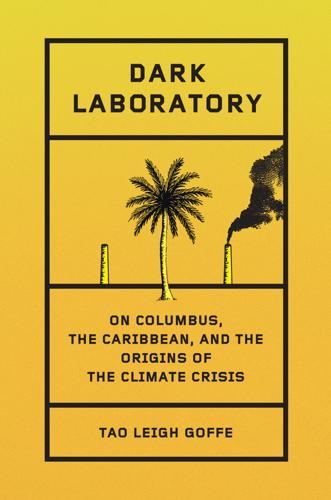
Dark Laboratory: On Columbus, the Caribbean, and the Origins of the Climate Crisis
by
Tao Leigh. Goffe
Published 14 Mar 2025
They never stopped fighting; no enslaved person did. As much as the Caribbean is made of islands of European experimentation and exploitation, the region is also full of hidden laboratories for Afro-Indigenous sovereignty. In many ways the warfare between West Africa and Europe is ongoing today—despite the abolition of the transatlantic slave trade in 1807—because these Maroon and Amerindian communities still exist off the grid.[2] Maroon warriors include peoples fragmented across the hemispheres, from Virginia to Suriname to Haiti to French Guiana. These communities have long protected the natural environment as part of their martial philosophy.
…
A sequence of images showing the magnitude-five eruption of the submarine volcano Hunga Tonga-Hunga Haʻapai in January 2022 An interrogation of “natural history” leads us to see that it is not a coincidence that many of these scientific principles and disciplines of science emerged in the Victorian era. This was also the era of the abolition of the transatlantic slave trade, with emancipation following across the Western Hemisphere. Race science and eugenics have never been far from these advances in scientific knowledge and engineering. In the 1880s, plantation soil had been exhausted, as had the people abducted and forced to till it, so now an alibi was necessary to enable a return to the colonial project of mining in Africa.
…
The dead demand a future audience from the soil in which they are buried. George Jackson demanded a future reader when he wrote these words, complete with a Biblical allusion to Exodus (“unto the third and fourth generation”). He is part of the infinite number of generations living in the wake of the transatlantic slave trade. As an institution, racial indenture is a part of that wake of unfreedom. Jackson describes the kidnap as though he were there: he lives the repetition of the Middle Passage for the millions of enslaved Africans who died, a tragedy underscored by the carceral logic of San Quentin, where he was murdered in 1971.
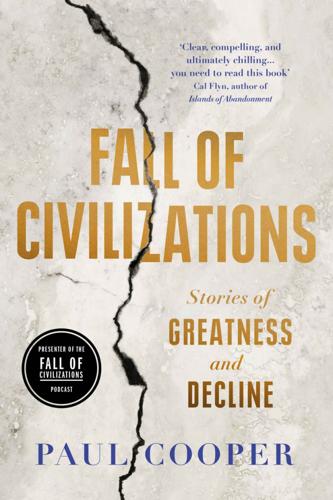
Fall of Civilizations: Stories of Greatness and Decline
by
Paul Cooper
Published 31 Mar 2024
The failure of political control in West Africa’s largest empire coincided with the establishment of the European trading posts by the Portuguese at São Tomé and São Salvador, and the development of plantation farming in the Caribbean, when demands for enslaved African labour began to exponentially increase. This was the beginning of the transatlantic slave trade. Within twenty years of Askia Muhammad’s death, barely fifty years after the conquistadors made landfall in the Americas, as many as 250,000 Africans had already been kidnapped and transported to the New World. By the time the slave trade was abolished in the nineteenth century, the number would exceed 12 million, of which nearly 2 million died on the voyage.
…
West Africa cracked like an egg. Non-Muslims began raiding in Muslim lands, and there was no longer any hope of unified resistance to the spreading influence of European colonialism. Predatory European traders set up slave trading posts all along the African coast, profiting from the chaos, and the full horror of the transatlantic slave trade reached new heights, draining the manpower of Africa on an industrial scale. Its economy and society destroyed, Timbuktu in turn lost its position as a centre of learning. The author of one of the chronicles, Al-Sadi, would lament in his preface to his chronicle, ‘I have witnessed the ruin of learning, and its utter collapse.’27 Many of his fellow scholars were kidnapped and enslaved, transported across the Atlantic to the New World, where they laboured in horrendous conditions to enrich colonial economies.
…
De Villiers, Marq, and Sheila Hirtle. Timbuktu: The Sahara’s Fabled City of Gold. Canada, McClelland & Stewart, 2012. Elbl, Ivana. ‘Cross-Cultural Trade and Diplomacy: Portuguese Relations with West Africa, 1441–1521.’ Journal of World History, vol. 3, no. 2, 1992, pp. 165–204. —————. ‘The Volume of the Early Atlantic Slave Trade, 1450–1521.’ The Journal of African History, vol. 38, no. 1, 1997, pp. 31–75. Ewa, Ibiang Oden. ‘Pre-colonial West Africa: the Fall of Songhai Empire Revisited.’ Journal of the Historical Society of Nigeria, vol. 26, 2017, pp. 1–24. Fage, J. D. ‘Slavery and the Slave Trade in the Context of West African History.’
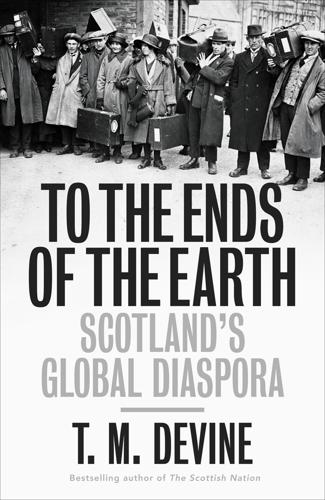
To the Ends of the Earth: Scotland's Global Diaspora, 1750-2010
by
T M Devine
Published 25 Aug 2011
Engerman, ‘The Slave Trade and British Capital Formation in the Eighteenth Century: A comment on the Williams Thesis’, Business History Review, 46 (1972), pp. 430–43; Roger I. Anstey, The Atlantic Slave Trade and British Abolition, 1760–1810 (London, 1965), pp. 38–57; R. P. Thomas and N. Bean, ‘The Fishers of Men: The Profits of the Slave Trade’, Journal of Economic History, 34 (December, 1974), pp. 885–914; C. H. Feinstein, ‘Capital Accumulation and the Industrial Revolution’, in R. Floud and D. McCloskey, eds., The Economic History of Britain since 1700. Vol. 1 (Cambridge, 1981), p. 131. 4. David Richardson, ‘The British Empire and the Atlantic Slave Trade, 1660–1807’, in P. J. Marshall, ed., The Oxford History of the British Empire.
…
Table 1: Known slave voyages direct from Scottish ports, 1706–66 Port Number of voyages Period Port Glasgow 7 c.1717–30 Greenock 14 mainly 1760s Montrose 4 1760s Leith 2 1706; 1764 Total slaves embarked: c.4,500 Sources: M. Duffill, ‘The Africa Trade from the Ports of Scotland 1706–66’, Slavery and Abolition, 24 (December, 2004), pp. 102–22; D. Eltis et al., The Transatlantic Slave Trade. A database on CD-ROM (Cambridge, 1999). This low rate of participation was not caused by any ethnic or moral opposition to the trade, however, as there was little hint until the 1760s of significant opposition to the idea of black men and women being used as slaves.14 Rather the explanation seems to be that London and the English outports were already so well established in the Africa trade by the end of the seventeenth century that during the subsequent decades Scots had to find their primary Atlantic commercial niches in tobacco and sugar importation.
…
Anon., ‘Scottish Capital Abroad’, Blackwood’s Edinburgh Magazine, CXXXVI (1884). Anon., That Land of Exiles. Scots in Australia (Edinburgh, 1988). Anon., ‘Demographic Trends in Scotland: A Shrinking and Ageing Population’. ESRC Seminar Series, Mapping the Public Policy Landscape (2004). Anstey, Roger I., The Atlantic Slave Trade and British Abolition, 1760–1810 (London, 1965). Anthony, Richard F., Herds and Hinds: Farm Labour in Lowland Scotland, 1900–1939 (Edinburgh, 1997). Armitage, David, ‘The Scottish Diaspora’, in Jenny Wormald, ed., Scotland: A History (Oxford, 2005). Ascherson, Neal, Stone Voices. The Search for Scotland (London, 2002).
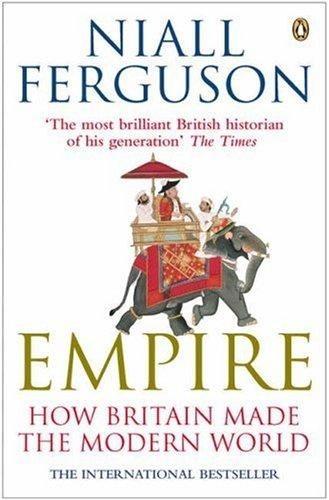
Empire: How Britain Made the Modern World
by
Niall Ferguson
Published 1 Jan 2002
Between 1808 and 1830 the total slave population of the British West Indies declined from about 800,000 to 650,000. By 1833 the last resistance had crumbled. Slavery itself was made illegal in British territory; the helots of the Caribbean were emancipated, their owners compensated with the proceeds of a special government loan. That did not of course put an end to the transatlantic slave trade or slavery in the Americas. It continued not only in the southern United States but also on a far larger scale in Brazil; all told, around 1.9 million more Africans crossed the Atlantic after the British ban, most of them to Latin America. However, the British did their utmost to disrupt this continuing traffic.
…
It is one of the questions this book seeks to answer. The second and perhaps more difficult question it addresses is simply whether the Empire was a good or bad thing. It is nowadays quite conventional to think that, on balance, it was bad. Probably the main reason for the Empire’s fall into disrepute was its involvement in the Atlantic slave trade and slavery itself. This is no longer a question for historical judgement alone; it has become a political, and potentially a legal, issue. In August 1999 the African World Reparations and Repatriation Truth Commission, meeting in Accra, issued a demand for reparations from ‘all those nations of Western Europe and the Americas and institutions, who participated and benefited from the slave trade and colonialism’.
…
Their mission was, fundamentally, an altruistic one: to help restore stability to a country that had been wracked for years by civil war.* A little less than 200 years ago, a Royal Navy squadron was based in Sierra Leone on a comparably moral mission: to prevent slave ships leaving the African coast for America, and thereby to bring an end to the Atlantic slave trade. This was an astonishing volte face, especially astonishing to the Africans themselves.† After the British first came to Sierra Leone in 1562 it did not take them long to become slave traders. In the subsequent two and a half centuries, as we have seen, more than three million Africans were shipped into bondage on British ships.
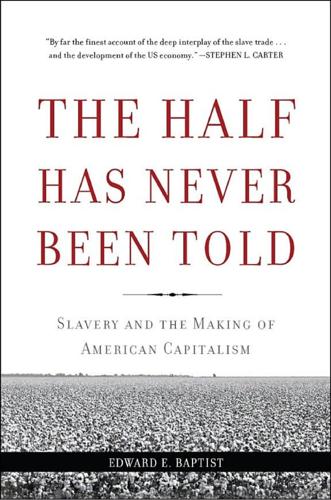
The Half Has Never Been Told: Slavery and the Making of American Capitalism
by
Edward E. Baptist
Published 24 Oct 2016
In 1840, British Prime Minister Robert Peel began to push other European nations to accept a treaty called the Convention of London. This agreement would allow the Royal Navy to search and seize ships flying non-British flags if they were suspected of participating in the Atlantic slave trade.72 The British had already extended this kind of pressure to Texas, which, in return for diplomatic recognition from Britain, had agreed to allow the Royal Navy to stop ships bringing slaves from Cuba to Texas. And actual enforcement of existing treaties banning the Atlantic slave trade would threaten slavery’s viability in Brazil and Cuba. Enforcement would also eviscerate the profits that US citizens were making from the illegal trade.
…
Again, a few starting points: Philip Curtin, The Rise and Fall of the Plantation Complex: Essays in Atlantic History (Cambridge, UK, 1990); Richard Dunn, Sugar and Slaves: The Rise of the Planter Class in the English West Indies, 1624–1713 (Chapel Hill, NC, 1972); Peter Wood, Black Majority: Negroes in Colonial South Carolina from 1670 Through the Stono Rebellion (New York, 1973); Leonardo Marques, “The United States and the Transatlantic Slave Trade to the Americas, 1776–1867” (PhD diss., Emory University, 2013). 4. Robert Olwell, Masters, Slaves, and Subjects: The Culture of Power in the South Carolina Low Country, 1740–1790 (Ithaca, NY, 1998), 270. 5. David Brion Davis, The Problem of Slavery in the Age of Revolution, 1775–1820 (Ithaca, NY, 1975); Donald Robinson, Slavery in the Structure of American Politics, 1765–1820 (New York, 1970); Christine Heyrman, Southern Cross: The Beginning of the Bible Belt (New York, 1997); Thomas Jefferson, Notes on the State of Virginia (New York, 1984 [Library of America]), 289. 6.
…
Twelve years later, the crews of two storm-damaged English privateers also passed, seeking shelter and a place to sell the twenty-odd enslaved Africans (captured from a Portuguese slaver) lying shackled in their holds. After that first 1619 shipload, some 100,000 more enslaved Africans would sail upriver past Old Point Comfort. Lying in chains in the holds of slave ships, they could not see the land until they were brought up on deck to be sold. After the legal Atlantic slave trade to the United States ended in 1807, hundreds of thousands more enslaved people passed the point. Now they were going the other way, boarding ships at Richmond, the biggest eastern center of the internal slave trade, to go by sea to the Mississippi Valley. By the time a dark night came in late May 1861, the moon had waxed and waned three thousand times over slavery in the South.

Atlantic: Great Sea Battles, Heroic Discoveries, Titanic Storms & a Vast Ocean of a Million Stories
by
Simon Winchester
Published 27 Oct 2009
It was a curse of the high seas that was eventually to be among the most severely policed as well, such that in time it was finally abolished. Yet it was an extraordinarily long-lived maritime cargo-carrying phenomenon, the memory of which now scars and shames the world: the unseemly business of the transatlantic slave trade. The Trial of Black Bart’s Men, as it came to be known, took place in 1722, in the dauntingly magnificent-looking, pure white cliff top building that still stands well to the west of the capital of Ghana: the famous Cape Coast Castle. It was adventurous Swedes who first built a wooden structure here, near a coastal village named Oguaa, as a center for gold, ivory, and lumber trading; it next passed into the hands of another unlikely Scandinavian colonizing power, the Danes; and then in 1664 it was captured by the British, who had an enduring colonial interest in West Africa and held on to the Gold Coast—as Ghana was then called—for the next three hundred years.
…
The final slave ships to cross the ocean were American, the Wanderer and the Clotilde, and they managed to get through the various cordons and blockades in 1858 and 1859 respectively. The last surviving slave from the last arriving slaver died in 1935, in a suburb of Mobile, Alabama. And with the death of this dignified old man from Benin, a ninety-four-year-old named Cudjoe Lewis, so was severed history’s final living link to the transatlantic slave trade, which had begun with the French in Florida and the English in Virginia in the beginning of the sixteenth century and had endured for more than four hundred years. As coda, though, there is one further account worth relating—that of a white American who after crossing the Atlantic became a slave in coastal Africa, and thus provided history with the mirror image of a trade that was otherwise overwhelmingly conducted in the opposite direction.
…
St. Albans: Penna Press, 2004. Air Ministry. Atlantic Bridge: The Official Account of RAF Transport Command’s Ocean Ferry. London: HMSO, 1945. Amos, William H., and Stephen H. Amos. Atlantic and Gulf Coasts. National Audubon Society Nature Guides. New York: Knopf, 1985. Anstey, Roger. The Atlantic Slave Trade and British Abolition, 1760–1810. London: Macmillan, 1975. Archibald, Malcolm. Across the Pond: Chapters from the Atlantic. Latheronwheel, Caithness, UK: Whittles Publishing, 2001. Armitage, David, and Michael J. Braddick, eds. The British Atlantic World, 1500–1800. Basingstoke, UK: Palgrave Macmillan, 2002.
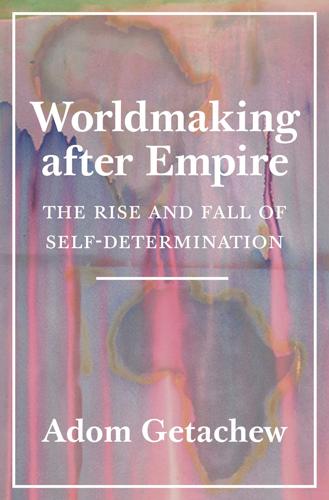
Worldmaking After Empire: The Rise and Fall of Self-Determination
by
Adom Getachew
Published 5 Feb 2019
The seminal history of the Haitian Revolution explicitly linked the nineteenth-century struggle against slavery in the Americas with the impending anti-imperial revolutions in Africa. Together with Du Bois’s Black Reconstruction (1935), these texts illuminated the constitutive role of the transatlantic slave trade and slavery in North Atlantic modernity. Williams moved from Oxford to Howard University in 1939, where he joined the political science faculty. At the “Negro Oxford,” he participated in debates about the structuring role of white supremacy in the international order with Ralph Bunche, Alain Locke, Rayford Logan, and Merze Tate.21 Howard and other black colleges and universities functioned as key nodes in black internationalist networks by supporting the research agendas of scholars like Williams, educating a generation of nationalists, and Wor ldm a k ing a fter Empir e [7] connecting African and Caribbean students and intellectuals to an African American public sphere.22 The Nigerian nationalist Nnamdi Azikiwe first enrolled at Howard and took courses with Alain Locke, before completing his degree at Lincoln University in 1930.23 In his first book, Liberia in World Politics, Azikiwe extended the explorations of international racial hierarchy pioneered at Howard by examining modes of imperialism that exceeded alien rule.24 When Azikiwe returned to West Africa, he started a number of newspapers in Accra and Lagos that were modeled on African American newspapers and provided a new forum for West African nationalists.
…
In its strongest formulation, this argument suggested that the newly independent states were entirely constituted through international political and economic entanglements that could not be escaped or ignored. For instance, Eric Williams and Michael Manley both traced the ways that the Caribbean island states emerged from the institution of colonial plantations. With native peoples and ways of life eradicated in the process of colonization, the Caribbean was reconstituted through the transatlantic slave trade, Indian and Chinese indenture, and colonial trade. As a result, the Caribbean itself was a global formation and could not be disaggregated from the international political and economic relations in which it was embedded. This extreme form of extraversion necessarily required moving beyond national insularity.47 If this account emphasized the specificity of the postcolonial state’s entrapment in global forces, a second argument described the dilemmas anticolonial nationalists faced as an iteration of a more generic predicament.
…
European oversight and intervention was constructed as the only mechanism that could secure humanitarian norms in Africa. That the charge of slavery became the idiom through which black self-government would be undermined should strike us as deeply perverse not only because of Europe’s central role in the transatlantic slave trade and slavery in the Americas but also because of the labor practices that characterized colonial Africa in the twentieth century. Forced labor was a central practice in every colony, so much so that the largest imperial powers—Britain and France—successfully lobbied for its exemption from the 1926 Slavery Convention.
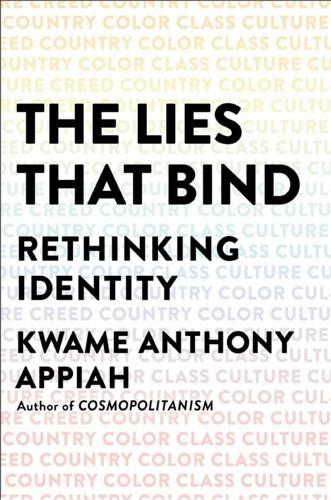
The Lies That Bind: Rethinking Identity
by
Kwame Anthony Appiah
Published 27 Aug 2018
So Grégoire not only assembled the dozen or more extraordinary counterexamples in his book but reported on a visit to a group of black children brought from Sierra Leone to a school founded in London by William Wilberforce, the great evangelical antislavery campaigner, concluding that, so far as he could tell, “there exists no difference between them and Europeans except that of color.”13 RACE AS RATIONALE Part of the background to the debate about the capacity of the Negro was the explosion of African slavery in Europe’s New World colonies in the Americas. In Amo’s years in Germany, the transatlantic slave trade was rising toward its late-eighteenth-century peak, when some 80,000 people a year were transported in shackles from Africa to the New World. Many historians have concluded that one reason for the increasingly negative view of the Negro through the later eighteenth century was the need to salve the consciences of those who trafficked in and exploited enslaved men and women.
…
Still, this dynamic, in which the idea of race becomes the common currency of negation and affirmation, dominance and resistance, would prove dauntingly difficult to withdraw from. That’s unfortunate. Because there is little doubt that the race idea was associated with moral disasters from its earliest beginnings. Not only did European racial thinking develop, at least in part, to rationalize the Atlantic slave trade, it played a central role—often a pernicious one—in the development and execution of Europe’s nineteenth-and twentieth-century colonial projects; and, with the Nazis, it was central in organizing the systematic genocide of millions and millions of people, Jews and Roma, conceived as inferior races, among them.
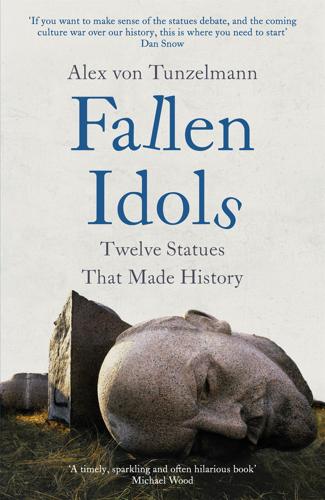
Fallen Idols: Twelve Statues That Made History
by
Alex von Tunzelmann
Published 7 Jul 2021
Rupert was a driving force behind the Company of Royal Adventurers, set up with investment from Charles and James, and granted a royal charter that gave it a monopoly over all English trade with Africa.5 The Company’s initial purpose was to find that ‘firm rock of gold of a great bigness’ that Rupert still believed to be up the Gambia River. Instead, it found slaves. The transatlantic slave trade had begun more than a century earlier. At first, most demand for African slaves came from the Spanish Caribbean and Brazil. Slaves were seen in Bristol docks by the 1620s, though there were also free black people living in the city at the time.6 In the early seventeenth century, English Caribbean colonies began to import slaves in greater numbers, mostly to work on plantations.
…
Those with diarrhoea and vomiting had to lie in their own filth. Despair spread quickly too. Slaves who refused to eat or otherwise disobeyed were punished with whips and thumbscrews. They were often raped. The Atlantic crossing took around two months. During almost four centuries of the transatlantic slave trade, 12.4 million people were transported from Africa to the Americas as chattel. Of those, 1.8 million died before they reached the Americas: often from disease or neglect, sometimes by suicide. Their bodies were thrown into the sea. Sharks were said to follow slave ships to eat the discarded human meat.7 This crossing was the fate of George Floyd’s ancestors.
…
The weight of this history was still felt by Floyd’s family (and many like his) in the twenty-first century.8 In 1672, the Company of Royal Adventurers became the Royal African Company. The Company would transport more slaves from Africa to the Americas than any other organization during the transatlantic slave trade. Many of the thousands of men, women and children it took from Africa had the letters ‘RAC’ or ‘DY’ (for James, Duke of York) seared into their flesh with a hot brand: an indelible reminder that they were no longer people, but property. Finally, in 1680, the fates of Prince Rupert of the Rhine, the royal family and Edward Colston would meet – in the slave trade.

England: Seven Myths That Changed a Country – and How to Set Them Straight
by
Tom Baldwin
and
Marc Stears
Published 24 Apr 2024
Thorne, ‘The Royal Navy’s War on Trees’, Legion Magazine, 15 February 2022. 70 Ibid., 307. 71 Constantin Frantz, quoted in Reynolds, Island Stories, p. 41. 72 Bernard Porter, Britain Before Brexit, London, Bloomsbury, 2021, p. 15. 73 Darwin, Unfinished Empire, p. 11. 74 See https://www.liverpoolmuseums.org.uk/ports-of-transatlantic-slave-trade 75 House of Commons, 13 March 1812, vol. 21, col. 1262. 76 R. N. Worth, History of Plymouth from the Earliest Period to the Present Time, Plymouth, William Brendon and Son, 1871, p. 322. 77 Eric Black, ‘Damnation Alley’, Plymouth Herald, 21 September 2019. 78 G. H. Bennett, Dockyard, Naval Base and Town, Plymouth, University of Plymouth, 2017.
…
He was born in 1759 when Hull was a prosperous place with docks infused with the smell of oilseed and the stench of processed whale blubber. Although the Wilberforce family fortune had been enhanced by refining some plantation sugar from the West Indies, this port’s east coast location made it the wrong place to profit directly from the Atlantic slave trade. Instead, most of its business was conducted across the North Sea, importing timber and animal skins from Scandinavia, as well as wheat, peas, pork and butter from Holland and Germany, ‘all to be washed down,’ wrote William Hague admiringly in his biography of Wilberforce, ‘with thousands of gallons of Rheinish Hoch’.22 Hull had a strong Protestant tradition which had resisted the Royalists in the civil war and later installed a gilded statue of William III – ‘King Billy’ – whose ‘Glorious Revolution’ of 1688 had seen Hull rise up against the local Catholic commander.
…
Seeley, The Expansion of England, London, MacMillan and Co., 1883, p. 8. 45 Ibid., pp. 12−13. 46 Ibid., p. 296. 47 Elizabeth Abbott, Sugar, London and New York, Duckworth Overlook, 2009, pp. 56−70. 48 John Darwin, Unfinished Empire: The Global Expansion of Britain, London, Penguin, 2012, p. 39. 49 Alvin O. Thompson, ‘Race and Colour Prejudices and the Origin of the Trans-Atlantic Slave Trade’, Caribbean Studies 16.3 (1977): 29−59. 50 Hillary Beckles, ‘Black Female Slaves and White Households in Barbados’, in More Than Chattel, ed. David Barry Gasper and Darlene Clark Hine, Bloomington, Ind., Indiana University Press, 1996, pp. 111−25. 51 Ibid., p. 40. 52 Douglas Hall, In Miserable Slavery, London, Macmillan, 1989, pp. 70−3. 53 Simon Schama, The History of Britain II, London, BBC Books, 2001, p. 442. 54 Trevor Burnard, Mastery, Tyranny, and Desire, Chapel Hill, NC, University of North Carolina Press, 2004, pp. 5, 156. 55 See https://www.gresham.ac.uk/watch-now/how-place-slavery-british-identity 56 Joseph E.

Debt: The First 5,000 Years
by
David Graeber
Published 1 Jan 2010
During the 1760s alone, perhaps a hundred thousand Africans were shipped down the Cross River to Calabar and nearby ports, where they were put in chains, placed on British, French, or other European ships, and shipped across the Atlantic—part of perhaps a million and a half exported from the Bight of Biafra during the whole period of the Atlantic slave trade.55 Some of them had been captured in wars or raids, or simply kidnapped. The majority, though, were carried off because of debts. Here, though, I must explain something about the organization of the slave trade. The Atlantic Slave Trade as a whole was a gigantic network of credit arrangements. Ship-owners based in Liverpool or Bristol would acquire goods on easy credit terms from local wholesalers, expecting to make good by selling slaves (also on credit) to planters in the Antilles and America, with commission agents in the city of London ultimately financing the affair through the profits of the sugar and tobacco trade.56 Ship-owners would then transport their wares to African ports like Old Calabar.
…
London: Hakluyt Society. Cotter, James Finn. 1969. “The Wife of Bath and the Conjugal Debt.” English Language Notes 6: 169-72 Covarrubias, Miguel. 1937. Island of Bali. London: Kegan Paul. Curtin, Phillip D. 1969. The Atlantic Slave Trade: A Census. Madison: University of Wisconsin Press. Curtin, Phillip D., and Jan Vansina,. 1964. “Sources of the Nineteenth Century Atlantic Slave Trade.” Journal of African History 5 (2): 185-208. Custers, Peter. 2006. Questioning Globalized Militarism: Nuclear and Military Production and Critical Economic Theory. Monmouth: Merlin Press. Dandamaev, Muhammed. 1984.
…
Trésors de monnaies phéniciennes et circulation monétaire (Ve-IVe siècle avant J.-C.). Paris: Gabalda. Ellis, Thomas Peter. 1926. Welsh Tribal Law and Custom in the Middle Ages. Oxford: Oxford University Press. Eltis, David, Stephen D. Behrent, David Richardson, Herbert S. Klein. 2000. The Transatlantic Slave Trade: A Database. Cambridge: Cambridge University Press. Elwahed, Ali Abd. 1931. Contribution à une théorie sociologique de l’esclavage. Étude des situations génératrices de l’esclavage. Avec appendice sur l’esclavage de la femme et bibliographie critique. Paris: Éditions Albert Mechelinck. Elyachar, Julia. 2002.
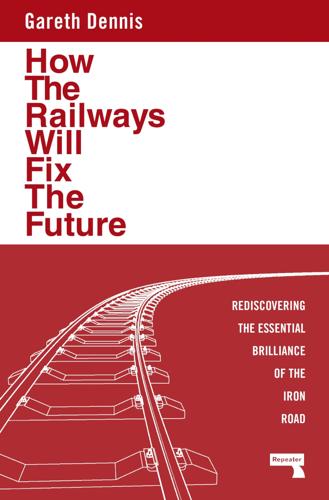
How the Railways Will Fix the Future: Rediscovering the Essential Brilliance of the Iron Road
by
Gareth Dennis
Published 12 Nov 2024
Stephenson’s masterpiece unified each of the fundamental elements of the modern railway that had been developed over the preceding century or two: timetables, signalling, double track and exclusive use by locomotive-hauled trains. However, the subsequent explosion in railway development was not simply a consequence of the technological pieces falling into place. At the same time, the transatlantic slave trade was being wound down in Britain. Directed towards an already proven and now refined technology was an entire industry of business interests, personnel, expertise and — to a smaller but no less significant extent — capital from slave-won activities or post-abolition slave-owner compensation.
…
It’s a terrific example of the brilliance of railway systems, and as an example of how railways make the world feel. Most people agree that cities with trams just look, feel and run better than those without. The frontiers of capitalism Capitalism has always sought new frontiers — the transatlantic slave trade was a new frontier for generating immense wealth; the Industrial Revolution created a new frontier in the manufacture of goods and therefore profit at hitherto unimaginable scale; financialisaton, the age of the internet, automation and machine learning all represent new frontiers of wealth and income for the capitalist economy.

Doppelganger: A Trip Into the Mirror World
by
Naomi Klein
Published 11 Sep 2023
These views are born of my students’ own experiences and enhanced by our readings, particularly Simone Browne’s landmark 2015 book, Dark Matters: On the Surveillance of Blackness. Browne, a professor of African and African Diaspora Studies at the University of Texas at Austin, traces the origins of modern-day branding to the literal branding of African people in the transatlantic slave trade. “This is a difficult archive to write about,” Browne observes, “where iron instruments fashioned into rather simple printed type became tools of torture. It is also a painful archive to imagine, where runaway notices speak of bodies scarred by slavery and of those that got away.” Provocatively, Browne calls this brutal branding “a biometric technology.”
…
Today, biometric identification—the recruitment of a permanent part of the body to measure and track—evokes sleek machines with blue or green light scanning faces, irises, or finger pads. Browne makes the case that physical branding played the same function for enslavers, allowing them to track racialized bodies via a permanent, unchangeable marker: “Branding in the transatlantic slave trade … was a measure of slavery’s making, marking, and marketing of the black subject as commodity.” The permanence of the brand was its power—it was designed to follow the enslaved person for the rest of their life, insurance against the irrepressible will to be free. This bloody and barbaric process, Browne argues, was a defining act by which slavers attempted to transform African people into what the great anti-colonial theorist Frantz Fanon called “an object among other objects.”
…
“to take the sting out”: Anjana Ahuja, “‘Grief Tech’ Avatars Aim to Take the Sting Out of Death,” Financial Times, December 20, 2022. landmark 2015 book: Simone Browne, Dark Matters: On the Surveillance of Blackness (Durham, N.C.: Duke University Press, 2015). “This is a difficult archive to write about”: Browne, Dark Matters, 91–92. “a biometric technology”: Browne, Dark Matters, 91. “Branding in the transatlantic slave trade”: Browne, Dark Matters, 91. “an object among other objects”: Frantz Fanon, Black Skin, White Masks, trans. Richard Philcox (New York: Grove Press, 2008), 89. “relate to our self in the third person”: Nancy Colier, “The Branding of the Self,” Psychology Today, August 15, 2012. “A foolish consistency”: Ralph Waldo Emerson, “Self-Reliance,” in Ralph Waldo Emerson: Essays and Journals, ed.
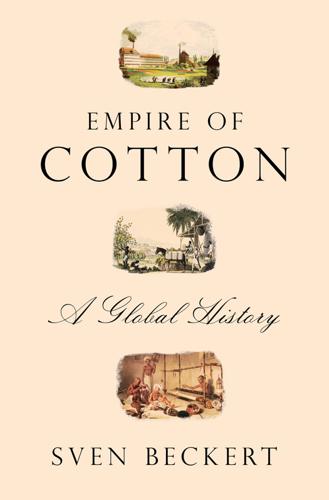
Empire of Cotton: A Global History
by
Sven Beckert
Published 2 Dec 2014
Maureen Fennell Mazzaoui, The Italian Cotton Industry in the Later Middle Ages, 1100–1600 (Cambridge: Cambridge University Press, 1981), 157. 12. “Assessing the Slave Trade,” The Trans-Atlantic Slave Trade Database, accessed April 5, 2013, http://www.slavevoyages.org/tast/assessment/estimates.faces. 13. David Richardson, “West African Consumption Patterns and Their Influence on the Eighteenth-Century English Slave Trade,” in Henry A. Gemery and Jan S. Hogendorn, eds., The Uncommon Market: Essays in the Economic History of the Atlantic Slave Trade (New York: Academic Press, 1979), 304; Joseph C. Miller, “Imports at Luanda, Angola 1785–1823,” in G. Liesegang, H. Pasch, and A.
…
See Catherine Coquery-Vidrovitch, “African Slaves and Atlantic Metissage: A Periodization 1400–1880,” paper presented at “2nd Slaveries and the Atlantization of the Americas” colloquium, University of Cologne, July 2012; Voyages: The Trans-Atlantic Slave Trade Database, http://www.slavevoyages.org, accessed January 31, 2013. 24. Alan H. Adamson, Sugar Without Slaves: The Political Economy of British Guiana, 1838–1904 (New Haven: Yale University Press, 1972), 24; Johannes Postma, The Dutch in the Atlantic Slave Trade, 1600–1815 (Cambridge: Cambridge University Press, 1990), 288. 25. See for example, Roger Hunt, Observations Upon Brazilian Cotton Wool, for the Information of the Planter and With a View to Its Improvement (London: Steel, 1808), 3; Morris R.
…
For the quote see Baring Brothers Liverpool to Francis Baring, Liverpool, July 21, 1833, House Correspondence, record group HC3, file 35,1, in ING Baring Archive, London. For the importance of the Baring cotton operations see other letters in the same folder. For output per cotton plantation worker see David Elits, Economic Growth and the Ending of the Transatlantic Slave Trade (Oxford University Press, 1987), 287. 28. Sam A. Mustafa, Merchants and Migrations: Germans and Americans in Connection, 1776–1835 (Aldershot: Ashgate, 2001), 118; Ludwig Beutin, Von 3 Ballen zum Weltmarkt: Kleine Bremer Baumwollchronik 1788–1872 (Bremen: Verlag Franz Leuwer, 1934), 11, 16; Karl-Heinz Schildknecht, Bremer Baumwollbörse: Bremen und Baumwolle im Wandel der Zeiten (Bremen: Bremer Baumwollbörse, 1999), 8, 9; Friedrich Rauers, Bremer Handelsgeschichte im 19.
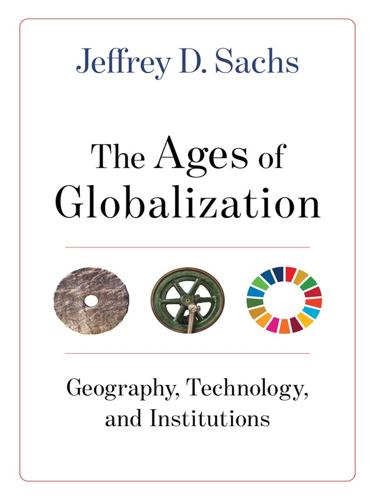
The Ages of Globalization
by
Jeffrey D. Sachs
Published 2 Jun 2020
Some were sent to North America, where slave labor would take hold as the basis of the cotton empire in the colonies that would become the southern United States after the American War of Independence. 6.7 The Slave Trade from Africa, 1500-1900 Source: Eltis & Richardson, ATLAS OF THE TRANSATLANTIC SLAVE TRADE (2010), Map 1 from accompanying web site, Overview of Slave Trade out of Africa, 1500–1900. Reproduced with the permission of Yale University Press. African slaves powered the new plantation and mining economies of the Spanish, Portuguese, and British colonies, especially in the tropical regions.
…
B. Stringer. “Evolution, Revolution or Saltation Scenario for the Emergence of Modern Cultures?” Philosophical Transactions of the Royal Society B: Biological Sciences 366, no. 1567 (2011): 1060–69. https://doi.org/10.1098/rstb.2010.0340. Eltis, David, and David Richardson. Atlas of The Transatlantic Slave Trade. New Haven, CT: Yale University Press. Map 1 from accompanying web site, Overview of Slave Trade out of Africa, 1500–1900. Reproduced with the permission of Yale University Press. Everson, S. ed. Aristotle: The Politics and the Constitution of Athens. Cambridge: Cambridge University Press, 1996.
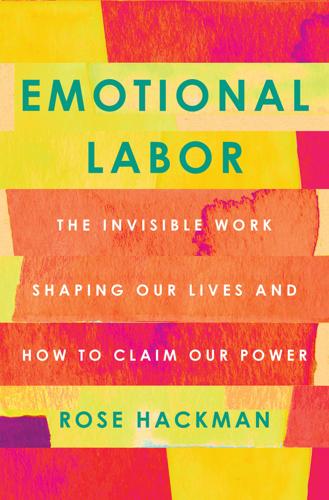
Emotional Labor: The Invisible Work Shaping Our Lives and How to Claim Our Power
by
Rose Hackman
Published 27 Mar 2023
A paper in the American Journal of Human Genetics published in July 2020 revealed that enslaved women contributed to the gene pools of Black descendants of slaves in the United States at almost twice the rate of enslaved men. A majority of the people deported to America from Africa during the transatlantic slave trade were men. The study, in which fifty thousand people took part, lays bare the genetic impact of white male rape on enslaved Black women. Steven J. Micheletti et al., “Genetic Consequences of the Transatlantic Slave Trade in the Americas,” American Journal of Human Genetics 107, no. 2 (August 6, 2020): 265–77, https://doi.org/10.1016/j.ajhg.2020.06.012. 5. In 2020, the Human Rights Campaign called the rates of violence against transgender people to be at “epidemic proportions,” especially for trans women of color.

Data Action: Using Data for Public Good
by
Sarah Williams
Published 14 Sep 2020
,” Government Information Quarterly 28, no. 4 (October 1, 2011): 457–465, https://doi.org/10.1016/j.giq.2010.10.006. 6 “‘Stowage of the British Slave Ship “Brookes” under the Regulated Slave Trade, Act of 1788,’” The Abolition Seminar, accessed July 19, 2019, https://www.abolitionseminar.org/brooks/. 7 Andrew Milne-Skinner, “Liverpool's Slavery Museum: A Blessing or a Blight?’” Racism, Slavery, and Literature (Frankfurt/M.: Peter Lang 2010), 2010, 183–195. 8 Eyal Weizman, “Introduction: Forensis,” Forensis: The Architecture of Public Truth, 2014, 9–32. 9 “The Brookes—Visualising the Transatlantic Slave Trade,” accessed July 19, 2019, https://www.history.ac.uk/1807commemorated/exhibitions/museums/brookes.html. In this respect the image is a symbol of control; it dictates a particular way of viewing and remembering the slave trade. Significantly, it offers only one perspective, that of the abolitionist witnessing cruelty—the perspective of those who are suffering the cruelty is predominantly absent. 10 Sarah Williams, Elizabeth Marcello, and Jacqueline M.
…
Thatcher, Jim, David O’Sullivan, and Dillon Mahmoudi. “Data Colonialism through Accumulation by Dispossession: New Metaphors for Daily Data.” Environment and Planning D: Society and Space 34, no. 6 (December 1, 2016): 990–1006. https://doi.org/10.1177/0263775816633195. “The Brookes—Visualising the Transatlantic Slave Trade.” Accessed July 19, 2019. https://www.history.ac.uk/1807commemorated/exhibitions/museums/brookes.html. “The Counted: Tracking People Killed by Police in the United States.” Guardian, 2016. https://www.theguardian.com/us-news/series/counted-us-police-killings. “The Data Deluge.” Economist, February 25, 2010. https://www.economist.com/leaders/2010/02/25/the-data-deluge.
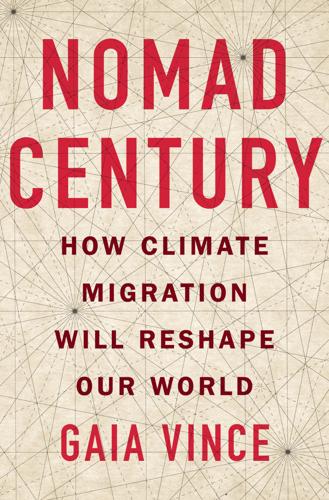
Nomad Century: How Climate Migration Will Reshape Our World
by
Gaia Vince
Published 22 Aug 2022
A power imbalance still persists for descendants of colonizers over colonized, evident in lasting socioeconomic inequalities. Migration drove the industrialized world, and a part of it was in pursuit of forced human labour to transform the environment and the wealth of nations. Slavery is an ancient practice but the transatlantic slave trade industrialized the enterprise to a horrific scale: some 12 million Africans were shipped to the Americas over 400 years. The legacy of such dramatic movement of, principally, young men from one society to another has had lasting affects on genes, culture, society and demography. Although Africans had been present in Europe and Asia for millennia, their numbers were relatively small, and the populations of Europeans and Asians migrating to the heart of Africa had also been insignificant.
…
Kung peoples; lack of water resources; low levels of migration to; migration from as relatively low; poor infrastructure and city planning; population rise in; rainfall due to Indian irrigation; remittances from urban migrants; and restoring of planet’s habitability; Transaqua Project of water diversion; transatlantic slave trade; transport infrastructure in; urbanization in African Union agoraphobia AI and drone technology aid, development/foreign air-conditioning/cooling airships or blimps Alaska algae Aliens Act (UK, 1905) Alps, European Amazon region Americas Anatolia Anchorage, Alaska Anderson, Benedict animals/wildlife; global dispersal of; impact of fires on; impact of ice loss on see also livestock farming Antarctica; ice sheet Anthropocene era; four horsemen of Aravena, Alejandro Archaeology architecture/buildings: Aravena’s ‘partial houses’; energy-efficiency retrofits; floating infrastructure; heat- and light-responsive materials; low-carbon concrete; prefabricated and modular housing; in successful migrant cities; wooden skyscrapers; zero-carbon new-builds Arctic region; first ice-free summer expected; opening up of due to climate change Argentina Arrhenius, Svante Asia: cities vulnerable to climate change; drought-hit areas; extreme La Niña events; extreme precipitation in monsoon regions; Ganges and Indus river basins; and heat ‘survivability threshold’; huge populations of South Asia; lack of water resources; rivers fed by glaciers; small hydropower installations; urbanization Aswan High Dam asylum-seekers: Australia’s dismal record on; Britain’s proud history on; dominant hostile narratives about; drownings in English Channel; limbo situation due to delayed claim-processing; misinformation about see also refugees Athens Australia: Black Summer (2019–20); energy-supply economy; impact of climate emergency; indigenous inhabitants; low population density in; migration to; and mineral extraction in Greenland; renewable power in; treatment of asylum-seekers; White Australia Policy aviation Aztecs Babylon bacteria, in food production bamboo Bangkok Bangladesh; ‘Bangla’ communities in London; Burmese Rohingya refugees; impact of climate emergency; migration across Indian border; population density in; relocation strategies; training for rural migrants Bantu people Barber, Benjamin Barcelona Beckett, Samuel Belarus Belgium Bergamo, Italy Bhutan Bijlmermeer (outside Amsterdam) biodiversity loss/ecosystem collapse; coral reefs as probably doomed; crash in insect and bird populations; depletion of fish stocks; due to agriculture; due to farming; four horsemen of the Anthropocene; and human behaviour; Key Biodiversity Areas; links with climate change; and marine heatwaves; and overuse of fertilizers; restoring of; species extinction; and urban adaptation strategies see also environmental sustainability bioenergy with carbon capture and storage (BECCS) biotech industry birds black soldier flies black-footed ferrets BoKlok (IKEA spinoff) Bolivia Borneo Bosch, Carl Boston, Massachusetts Boulder, Colorado Brazil Brexit Brin, Sergey British Columbia Brown, Pat bureaucracy Burke, Marshall Burma business/private sector Cairo California; forest fires in Cambodia Cameroon Canaan Canada; and charter cities model; Climate Migrants and Refugee Project; economic benefits from global heating; expansion of agriculture in; first carbon-neutral building in; forest fires in; indigenous populations; infrastructure built on permafrost; regional relocation schemes Capa, Robert, capitalism Caplan, Bryan Caprera (Italian warship) carbon capture/storage; BECCS; ‘biochar’ use in soil; carbon capture and storage (CCS); direct capture from the air; by forests; in grasslands; Key Biodiversity Areas; in oceans; by peatlands; by phytoplankton; vegetation as vital carbon pricing/taxing carbon/carbon dioxide: amount in atmosphere now; Arrhenius’ work on; and biomatter decay in soil, ‘carbon quantitative easing’; continued emitting of; decarbonizing measures; effect on crop growth; emissions cut by building from wood; emissions from farming; emissions from human energy systems; emissions from urban buildings; geoengineering to remove; during last ice age; Miocene Era levels; new materials made from; ocean release of; released by wildfires; tree-planting as offsetting method; in tropical rainforests Carcassonne, France Card, David Cardiff Castro, Fidel Çatalhöyük, ancient city of Central African Republic Central America Chad ‘char people’ charcoal (‘biochar’) Chicago children: childcare costs; deaths of while seeking safety; ‘invisible’/living on the margins; left behind by migrant parents; and move to cities; numbers at extreme risk; in refugee camps; and sense of ‘belonging’ Chile China: adaptation for heavy rainfall events; Belt and Road Initiative; cities vulnerable to climate change; demography; desertification of farmland in north; economic domination of far east; emigrants and knowledge-flow; emissions as still rising in; extreme La Niña events; ‘green wall’ tree-planting projects; and heat ‘survivability threshold’; Hong Kong–Shenzhen–Guangzhou mega-region; hukou system; integrated soil-system management; internal migration in; migrant workers in Russia’s east; and mineral extraction; net zero commitment; small hydropower installations; South-to-North Water Diversion Project; ‘special economic zones’; Uyghur Muslim communities in; and water scarcity; ‘zhuan‘ documents Chinatowns Churchill (town in Manitoba) Churchill, Winston cities: adapting to net-zero carbon economy; city state model; coastal cities; as concentrated nodes of connectivity; ‘consumption cities’ in Africa; control of migration by; deadly urban heat; demand for cooling; devolving power to communities; in eighteenth/nineteenth-century Europe; entrenched assets; and extreme flood risk; flood defences; as focal points for trade networks; food production in; genetic impacts of; in high altitude locations; large megacities; merging into mega-regions; as particularly vulnerable to climate change; phased abandonment of; population densities in; private gardens in; relocation of; relocation strategies within; sprawling shanty towns in; strategies against impact of heat; zero-carbon new-builds see also migrant cities; migration, urban citizenship; patriotism of welcomed migrants; ‘UN/international passport’ idea Clemens, Michael climate change, historic: Cretaceous–Palaeogene meteorite impact event; in late-bronze-age Near East; and migration; in Miocene Era; and transition to farming climate change/emergency; 3–5° C as most likely scenario; as affecting all of Earth; cities as particularly vulnerable to; destruction of dam infrastructure; enlisting of military/security institutions against; every tenth of a degree matters; extreme weather events; global climate niches moving north; global water cycle as speeding up; greenhouse gas emissions as still growing; impact of cities; impact on lives as usually gradual; inertia of the Earth’s climate system; lethality by 2100; links with biodiversity loss; near-universal acceptance of as human made; net zero pledges; Paris Agreement (2015); path to 3–4° C-hotter world; situation as not hopeless; slow global response to; as threat multiplier; warming as mostly absorbed by oceans see also biodiversity loss/ecosystem collapse; drought; fires; floods; heat climate models: future emissions scenarios; heating predictions; impact of 4° C-hotter world; IPCC ‘Representative Concentration Pathways’ (RCPs); optimum climate for human productivity; threshold for mass migrations coastal areas: coastal cities; migration from; retreating coastlines; seawater desalination plants cochineal scale insect Colombia colonialism, European Colorado Columbia Concretene construction industry copper coral reefs Cornwall Costa Rica cotton Covid-19 pandemic; cooperation during cross-laminated timber (CLT) Crusaders Cruz, Abel Cuba cultural institutions/practices: cultural losses over time; diversity as improving innovation; migration of; in well-planned migrant cities cyclones Cyprus Czech workers in Germany Dar es Salaam Death Valley Delhi Democratic Republic of Congo demographic changes/information: and decline of nationality viewed in racial terms; depopulation crisis; elderly populations in global north; GenZ; global climate niches moving north; global population patterns; global population rise; ‘household formation’; huge variation in global fertility rates; migrants as percentage of global population; population fall due to urban migration; population-peak projection; post-war baby boom; and transition to farming Denmark Denver, Colorado desert conditions Dhaka Dharavi (slum in Mumbai) diet and nutrition: edible seeds of sea grasses; genetically engineered microbes; global disparities in access to nutrition; and Haber–Bosch process; insects as source of protein and fats; loss of nutrition due to heat stress of crops; move to plant-based diet; vitamin D sources; zinc and protein deficiencies dinosaurs direct air capture (DAC) disease; waterborne Doha Domesday Book (1086) Driscolls (Californian berry grower) drone technology drought; as affecting the most people; in Amazon region; impact on farming; in late-bronze-age Near East; and rivers fed by glaciers; and sulphate cooling Dubai Duluth, Minnesota Dunbar, Robin economies; Chinese domination of far east; economic growth; forced move towards a circular economy; GDP per capita measure; Global Compact for Migration; global productivity losses due to heat; immigrant-founded companies; and influx of low-skilled migrant workers; migration as benefitting; mining opportunities exposed by ice retreat; and nation state model; need to open world’s borders; new mineral deposits in northern latitudes; northern nations benefitting from global heating; ‘special economic zone’ concept; taxing of robots see also employment/labour markets; green economy; political and socioeconomic systems; trade and commerce education: availability to migrants; as key to growth; and remittances from urban migrants; systems improved by migration Egypt; Ancient electricity: current clean generation as not sufficient; decarbonizing of production; electric vehicles; grid systems; hydroelectric plants; and net zero world; renewable production Elwartowski, Chad employment/labour markets: amnesties of ‘illegal’ migrants; and arguments against migration; and automation; controlled by city authorities; and global labour mobility; and the green economy; impact of heat on jobs; indentured positions; and influx of low-skilled migrant workers; jobs in growth industries; jobs restoring diversity; jobs that natives don’t want to do; mechanization/automation slowed down by migrant workers; migrants bring greater diversity to; need for Nansen-style scheme; occupational upgrading of locals due to immigration; refugees barred from working; role of business in migrant integration; rural workers moving to cities; skilled migrants; support/access for migrants; Trump’s work visa restrictions; ‘urban visas’ in USA; workforce shortages in global north energy systems: access to in global south; air-conditioning/cooling demand; and carbon capture; ‘closed-loop’ radiator construction; decarbonizing of; and economic growth; geothermal production; global energy use as increasing; new dam-construction boom in south; nuclear power; oceans as source; poor grid infrastructure in global south; power outages; power sharing as not equitable; reducing growth in demand; replacement of inefficient heating/cooling systems; transmission/transport see also electricity English Channel Environmental Protection Agency, US environmental sustainability: decarbonizing measures; decoupling of GDP from carbon emissions; and economic growth; heat- and light-responsive materials; low-energy plastic recycling methods; and migrant cities; need for open mind in planning for; phytoplankton as hugely important; replacement of inefficient heating/cooling systems; zero-carbon new-builds see also biodiversity loss/ecosystem collapse environmentalists; negative growth advocates; opponents of geoengineering equatorial belt Erdoğan, Recep Tayyip Eritrea Estonia Ethiopia Europe: 2003 heatwave; depopulation crisis; eighteenth/nineteenth-century shanty towns; impact of climate emergency; medieval barriers to movement; Mediterranean climate moving north; migrant indentured labour in; migration of women working in domestic service; small hydropower installations; three mass migrations in Stone and Bronze Ages European Union: free movement within; fund for aid to Africa; Green New Deal; no ‘asylum crisis’ within; nuclear power in; open-border policy for refugees from Ukraine; as popular migrant destination; seeks quota system for refugees; as successful example of regional union; war against migrants Fairbourne (Welsh village) farming: in abandoned areas in south; in Africa; ancient transition to; bad harvests as more frequent; barns/storehouses; benefits of warming in Nordic nations; biodiversity loss due to; cereal crops; closing the yield gap; early nineteenth century expansion of; ever-decreasing, sub-divided plots of land; expanded growing seasons; fertile land exposed by ice retreat; genetic research to produce new crops; genetically modified crop varieties; global disparities in food production; Green Revolution; greenhouse gas emissions from; in Greenland; Haber–Bosch process; heat-tolerant and drought-resistant crops; high-yielding wheat and rice variants; impact of climate emergency; indoor industrial systems; modern improvement in yields; nutrient and drip-irrigation systems; pre-twentieth-century methods; relying on new forms of; Russian dominance; salt-tolerant rice; smallholder; and solar geoengineering; solar-powered closed-cycle; urban vertical farms; use of silicates; and water scarcity; wildflower strips in fields see also livestock farming Fiji Fires fish populations: artisanal fishers; boost of in Arctic region; and decommissioned offshore oilrigs; fish farming; future pricing of fish products; as under huge pressure; insects as farmed-fish feed; land-based fish-farming Five Points slum, New York floods; flash floods; low-lying islands and atolls; sea walls/coastal defences; three main causes; in urban areas; water-management infrastructure Florida food: algal mats; carbon-pricing of meat; impact of soaring global prices; insect farming; kelp forest plantations; lab-grown meats; meat substitutes; for migrant city dwellers; move to plant-based diet; need for bigger sources of in global north; need to cut waste; photosynthesizing marine plants and algae; plant-based dairy products; reduced supplies due to temperature rises; refrigerated storage; replication of Maillard chemical reaction; sourced from the oceans see also diet and nutrition; farming; livestock farming food security Ford, Henry forests: advance north of in Nordic nations; deforestation; impact of climate emergency; ‘negative emissions activity’; replanting of; Siberian taiga forest fossil fuels; carbon capture and storage (CCS); as embedded in human systems France Fraser, Sean freedom of movement French Polynesia Friedman, Patri Gargano, Gabriele gas industry Gates, Bill gender: heat related inequalities; physical/sexual danger for female migrants; women in domestic service in Europe; women rejoining workforce genetic modification genetics, population Genghis Khan geoengineering; artificial sill proposals; cloud-brightening idea; as controversial/taboo; and ideal temperature question; possible unwanted effects; proposals for dealing with ice melt; to reduce atmospheric carbon dioxide; solar radiation reduction tools; sulphate cooling concept; thin-film technology; tools to reflect the sun’s heat away from Earth geology GERD dam, Ethiopia Germany; Syrian refugee resettlement in Ghana Glasgow climate meeting (2021) Global Parliament of Mayors global south; benefit of solar cooling idea; capital costs of deploying new renewables; cutting of food waste in; future repopulation of abandoned regions; global income gap as rising; little suitable landmass for climate-driven migration; migration to higher elevations with water; need for improved infrastructure; need for sustainable economic growth; new dam-construction boom in; new domestic sources of energy; population rise in; remittances from urban migrants; resource extraction by rich countries; and vested interests in the rich world see also Africa; Asia; Latin America and entries for individual nations golf courses Gore, Al, An Inconvenient Truth (2006) Gothenburg Grand Inga hydroelectric dam project (Congo River) Granville, Earl grasslands Great Barrier Reef Great Lakes region, North America Greece; Ancient green economy; and building of fair societies; Green New Deals; migration as vital to; multiple benefits of see also environmental sustainability; renewable power production; restoring our planet’s habitability greenhouse gas emissions; charging land owners for; in cities; emitters trying to avoid/delay decarbonization; from farming; national emissions-reductions pledges; underreporting of; unfair global impact of see also carbon/carbon dioxide Greenland; ice sheet; potato farming in Gulf states Haber, Fritz Hangzhou Hawaii health: climate change as threat multiplier; dementia care; diseases of poor sanitation; healthcare in successful migrant cities; heat related inequalities; lethality of extreme heat; and life in cities; mental illness and migration; migration as benefitting social care systems; pathogens in frozen tundras; rural living as single largest killer today; and smoke pollution heat: 35°C wet bulb threshold crossed; climate model predictions; cloud and water vapour feedbacks; combined with humidity; and demand for cooling; extreme hotspots; global productivity/work hour losses; impact of 4° C-hotter world; impact on farming/food supplies; infrastructure problems due to; lethality by 2100; lethality of extreme temperatures; Paris pledge of below 2°C; solar radiation reduction tools; subtropical climate spreading into higher latitudes; temperatures above 50°C; threshold for mass migrations; ‘threshold of survivability’; urban adaptation strategies; urban heat island effect; ‘wet bulb’ temperature calculations Held, David Hernando, Antonia HIV Höfn, southeastern Iceland Holocene epoch Honduras Hong Kong horses, domestication of housing: Aravena’s ‘partial houses’; controlled by city authorities; equitable access to; floating infrastructure; in flood-affected areas; and heat related inequalities; and migrants; planning and zoning laws; policies to prevent segregation; prefabricated and modular; twentieth-century social programmes see also slum dwellers Hudson Bay Huguenot immigrants human rights, universal Hungary hunter-gatherers hurricanes hydrogen ice age, last ice loss; as accelerating at record rate; in Antarctica; in Arctic region; artificial reflective snow idea; artificial sill proposals; and flash floods; loss of glaciers; permafrost thaw; reflective fleece blankets idea; retreat of ice sheets; rising of land due to glaciers melting; tipping points for ice-free world Iceland ICON, construction company identity: accentuation of small differences; and ancient transition to farming; borders as ‘othering’ structures; language as tool of self-construction; mistrust of outsiders; pan-species; sense of ‘belonging’; social norms of ‘tribe’; social psychology; stories crafting group identity see also national identity immigration policies: bilateral or regional arrangements; deliberately prejudicial policy; development of since later nineteenth-century; and harnessing migrant potential; immigrant inclusion programmes; immigration lottery schemes; move needed from control to managing,; points-based entrance systems; poorly designed; quota systems; responses to terrorist incidents; restrictions as for people not stuff; restrictive border legislation; Spain’s successful policy Impossible Foods India; crop irrigation in; emigrants and knowledge-flow; emissions as still rising in; falling fertility rate in; Ganges Valley; and heat ‘survivability threshold’; impact of climate emergency; internal migration in; lime-washing of roofs in; Mahatma Gandhi National Rural Employment Guarantee Act (MGNREGA); National River Linking Project; population density in; young population in indigenous communities Indo-European language Indonesia industrial revolution inequality and poverty: and access to reliable energy; benefit of solar cooling to south; climate change as threat multiplier; climate migration and social justice; and demand for cooling; despair and anger of ‘left behind’ natives; and environmental destruction; and European colonialism; as failure of social/economic policy; and geoengineered cooling; global disparities in access to nutrition; and global food prices; global income gap as rising; heat related; and impact of flooding; increased by ancient transition to farming; as matter of geographical chance; migration as best route out of; and modern farming; and national pride; need for redistributive policies; the poor trapped in vulnerable cities; and post-war institutions; rural living as single largest killer today; slow global response to crisis of; superrich and private jets; tribalism as not inevitable; and vested interests in the rich world insects; collapsing populations; farming of; as human food source insulation insurance, availability of Intergovernmental Panel on Climate Change (IPCC) International Energy Agency (IEA) International Fund for Agricultural Development (IFAD) International Labour Organization Iquique (Chile) Ireland iron, powdered Islam islands, small/low-lying Israel Italy Ithaca, city of (New York) Jakarta Japan Jobs, Steve Johnson, Boris Jordan kelp Kenya Khan, Sadiq Khoisan Bushmen Kimmel, Mara King, Sir David Kiribati knowledge and skills: better environment for in rich countries; ‘brain drain’ issue; channelled through migrant networks; diversity as improving innovation; global knowledge transfer; Global Skill Partnerships model; impact of European colonialism; migrants returning to origin countries; and Nansen-style schemes; need for rapid transference of; and points-based entrance systems Kodiak Island, Alaska krill Kuba Kingdom, West Africa !
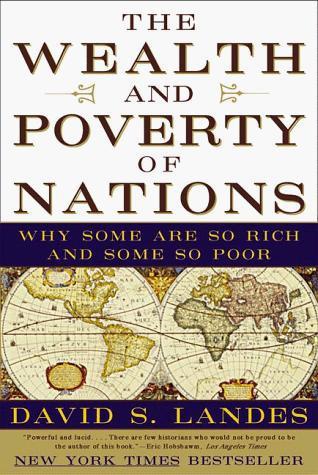
The Wealth and Poverty of Nations: Why Some Are So Rich and Some So Poor
by
David S. Landes
Published 14 Sep 1999
Journal of the Proceedings of the Late Embassy to China; Comprising a Correct Narrative of the Public Transactions…etc. London. Reviewed in the Quarterly Review, Vol. 17, No. 34 (July): 463-506. Ellis was Third Commissioner of the embassy. Eltis, David. 1987. Economic Growth and the Ending of the Transatlantic Slave Trade. New York: Oxford Univ. Press. Elvin, Mark. 1973. The Pattern of the Chinese Past: A Social and Economic Interpretation. Stanford: Stanford Univ. Press. Emmanuel, Arghiri. 1972. “White Settler Colonialism and the Myth of Investment Imperialism,” New Left Rev., 73 (May-June), 35-57. —————. 1974.
…
The East-Indian and Chinese markets, the colonisation of America, trade with the colonies, the increase in the means of exchange and in commodities generally, gave to commerce, to navigation, to industry, an impulse never before known, and thereby, to the revolutionary element in the tottering feudal society, a rapid development. —MARX and ENGELS, Manifesto of the Communist Party The turn of the eighteenth century was both end and beginning. It saw the liquidation of the Dutch East India Company; the prohibition of the British Atlantic slave trade (but not the end of slavery);* the peak and decline of the sugar bonanza (including revolution and the fall of planters and plantations in Saint-Domingue [now Haiti]); an end to the Old Regime in France; an end to the period of Old Empire. The new era would see Europe lose formal control of territory overseas (Spain would be the big loser) but gain wider economic dominance.
…
In a review in the American Sociological Review, Wilson Gee criticized Williams for exaggerating the role of slavery “by claiming that it was almost the indispensable foundation stone in the establishment of modern capitalism.” Cited by Sheridan, “Eric Williams,” p. 320. 17. Anstey, “Capitalism and Slavery” also his Atlantic Slave Trade. Anstey goes on to estimate the part of slave profits in British capital formation at 0.11 percent—“derisory.” Stanley Engerman, “The Slave Trade and British Capital Formation,” plays with the numbers “under some implausible assumptions” and comes up with hypothetical figures, strongly and knowingly biased upward, ranging from 2.4 percent to 10.8 percent over the period 1688-1770, which he says “should give some pause to those attributing to the slave trade a major contribution to industrial capital formation in the period of the Industrial Revolution.”
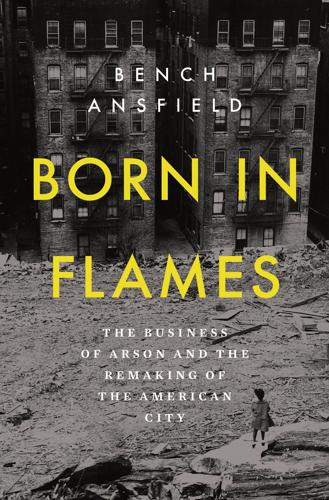
Born in Flames
by
Bench Ansfield
Published 15 Aug 2025
Such periodic bursts of activism and visibility notwithstanding, the long campaign against insurance redlining has remained, in the words of one scholar and activist, “the ugly duckling of the fair housing movement.”63 After the killing of George Floyd by Minneapolis police in the late spring of 2020, calls to end redlining practices again echoed—however faintly—across the insurance world. Lloyd’s of London, for its part, took the occasion to officially apologize for its “shameful” role underwriting the transatlantic slave trade. The insurance behemoth made no mention of reparations, or of its more recent triangular trade in risk brought to light by the Sasse scandal. Though long absent from public discourse, the related issue of riot reinsurance—now available from the private market, rather than a federal fund—appears likely to become salient again.64 The age of brownlining may have passed, but the conditions that brought it into being—the inviolable rights of property, the actuarial discretion of insurers, the political power of the FIRE industries, the state sanction of anti-Black violence, and the mass uprisings that insistently follow—still prevail.
…
For the “ugly duckling” quote, see Squires, Insurance Redlining: Disinvestment, Reinvestment, and the Evolving Role of Financial Institutions, vii. 64Matthew Kahn, “Insurance Redlining Needs to End,” Risk & Insurance, June 25, 2020. Guy Faulconbridge and Kate Holton, “Lloyd’s of London Apologizes for Its ‘Shameful’ Role in Atlantic Slave Trade,” Insurance Journal, June 18, 2020, accessed November 26, 2020. “The New, New Black Swan,” Risk Market News, May 31, 2020. Epilogue: The Ashes of History 1Robin D. G. Kelley, Freedom Dreams: The Black Radical Imagination (Boston: Beacon Press, 2002), 196. 2Thomas Frank, “Climate Change Is Destabilizing Insurance Industry,” Scientific American, March 23, 2023.
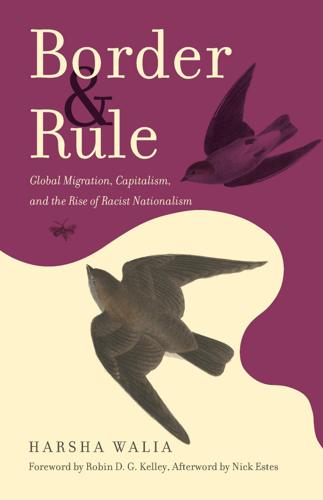
Border and Rule: Global Migration, Capitalism, and the Rise of Racist Nationalism
by
Harsha Walia
Published 9 Feb 2021
Nicholas De Genova probes, “If there were no borders, there would be no migration—only mobility.”9 Most ironic, the migration crisis is declared a new crisis with Western countries positioned as its victims, even though for four centuries nearly eighty million Europeans became settler-colonists across the Americas and Oceania, while four million indentured laborers from Asia were scattered across the globe and the transatlantic slave trade kidnapped and enslaved fifteen million Africans. Colonialism, genocide, slavery, and indentureship are not only conveniently erased as continuities of violence in current invocations of a migration crisis, but are also the very conditions of possibility for the West’s preciously guarded imperial sovereignty.
…
Outside the Jungle: hatred.”102 Disrupting white European innocence requires refusing selective amnesia and shifting the gaze away from migrants and refugees, and toward the enduring project of Europe. Migration is treated as a recent phenomenon, even though the genocide, displacement, and movement of millions of people was unequally structured by European colonialism for three centuries, with European emigrant settlers in the Americas and Oceania, the transatlantic slave trade from Africa, and imported indentured laborers from Asia. As Paul Gilroy writes on the intimacies of these histories, “The reflexive cultures and consciousness of the European settlers and those of the Africans they enslaved, the ‘Indians’ they slaughtered, and the Asians they indentured were not, even in situations of the most extreme brutality, sealed off hermetically from each other.”103 But these ongoing colonial encounters are conveniently erased in the constitution of Europe’s migration crisis.
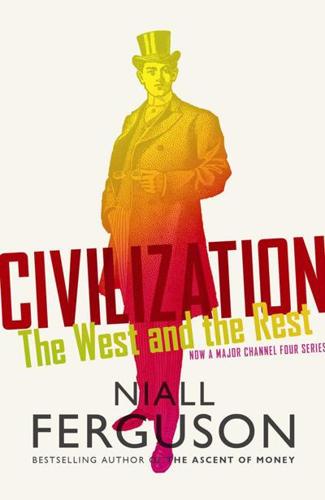
Civilization: The West and the Rest
by
Niall Ferguson
Published 28 Feb 2011
Van Woodward (ed.), The Comparative Approach to American History: Slavery (New Jersey, 1969), pp. 121–35 Egnal, M., New World Economies: The Growth of the Thirteen Colonies and Early Canada (New York/Oxford, 1998) Elkins, Stanley, Slavery: A Problem in American Institutional and Intellectual Life (Chicago, 1968) Elliott, J. H., Empires of the Atlantic World (New Haven, 2006) Eltis, David, ‘The Volume and Structure of the Transatlantic Slave Trade: A Reassessment’, William and Mary Quarterly, 58, 1 (January 2001), 17–46 Emmer, P. C. (ed.), Colonialism and Migration: Indentured Labour before and after Slavery (Dordrecht, 1986) Engerman, Stanley L. and Kenneth L. Sokoloff, ‘Once upon a Time in the Americas: Land and Immigration Policies in the New World’, working paper (2008) Fage, J.
…
A., ‘Earthquakes during the Colonial Period’, ReVista: Harvard Review of Latin America (2007): http://www.drclas.harvard.edu/revista/articles/view/907 Pomeranz, Kenneth, The Great Divergence: China, Europe and the Making of the Modern World Economy (Princeton, 2000) Poppino, Rollie E., Brazil: The Land and the People (Oxford, 1968) Prado, C., The Colonial Background of Modern Brazil (Berkeley/Los Angeles/London, 1969) Reid, James J., Crisis of the Ottoman Empire: Prelude to Collapse, 1839–1878 (Stuttgart, 2000) Rostworowski, María, Doña Francisca Pizarro (Lima, 1989) Sato, A., Legal Aspects of Landownership in Colonial Spanish America (Tokyo, 1976) Schaefer, Christina, Genealogical Encyclopaedia of the Colonial Americas (Baltimore, 1998) Schwartz, Stuart B., ‘The Colonial Past: Conceptualizing Post-Dependentista Brazil’, in Jeremy Adelman (ed.), Colonial Legacies: The Problem of Persistence in Latin American History (New York/London, 1999), 175–92 ———, Slaves, Peasants, and Rebels: Reconsidering Brazilian Slavery (Champaign, IL, 1995) Thomas, Hugh, The History of the Atlantic Slave Trade 1440–1870 (London, 1997) Thornton John and Linda Heywood, Central Africans, Atlantic Creoles, and the Foundation of the Americas, 1585 (Cambridge, 2007) Tomlins, C., ‘Indentured Servitude in Perspective: European Migration into North America and the Composition of the Early American Labour Force, 1600–1775’, in Cathy Matson (ed.), The Economy of Early America: Historical Perspectives and New Directions (Philadelphia, 2007), 146–82 Ullrick, Laura F., ‘Morillo’s Attempt to Pacify Venezuela’, Hispanic American Historical Review, 3, 4 (1920), 535–65 Walvin, J., Black Ivory: Slavery in the British Empire (Oxford/Malden, MA, 2001) Wang S., N.
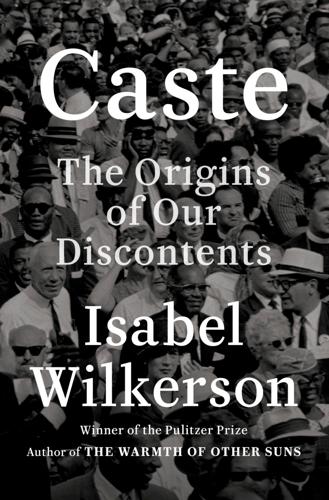
Caste: The Origins of Our Discontents
by
Isabel Wilkerson
Published 14 Sep 2020
The idea of linking disparate groups together on the basis of an arbitrary shared characteristic of being extremely tall or short sounds farcical to us, but only because this characteristic is not the one that has been used to divide humans into seemingly immutable “races.” The idea of race is a recent phenomenon in human history. It dates to the start of the transatlantic slave trade and thus to the subsequent caste system that arose from slavery. The word race likely derived from the Spanish word raza and was originally used to refer to the “ ‘caste or quality of authentic horses,’ which are branded with an iron so as to be recognized,” wrote the anthropologists Audrey and Brian Smedley.
…
Anyone with the least exposure had to follow an elaborate hazmat protocol virtually out of science fiction and still fear that the exposed tip of a finger cut might condemn them to a virus that assured an agonizing death and for which there was then no widely proven vaccine. It raged through West Africa as the Western world looked on mostly with pity and detachment. What a continent of sorrow, through the Western lens. These were countries siphoned of their populations during the transatlantic slave trade, then conquered and colonized and now still recovering from the destabilization and wars that these upheavals had wrought. To those at a distance, the sad circumstances of these countries, from primeval health systems to ancient burial rites, had brought this plague upon them. The virus spread through contact with the bodily fluids of an infected person who was showing symptoms, and people infected were to be quarantined in isolation wards.

The Better Angels of Our Nature: Why Violence Has Declined
by
Steven Pinker
Published 24 Sep 2012
Moreover, modern human trafficking, as heinous as it is, cannot be equated with the horrors of the African slave trade. As David Feingold, who initiated the UNESCO Trafficking Statistics Project in 2003, notes of today’s hotbeds of trafficking: The identification of trafficking with chattel slavery—in particular, the transatlantic slave trade—is tenuous at best. In the 18th and 19th centuries, African slaves were kidnapped or captured in war. They were shipped to the New World into life-long servitude, from which they or their children could rarely escape. In contrast, although some trafficking victims are kidnapped, for most . . . , trafficking is migration gone terribly wrong.
…
Ellis, B. J. 1992. The evolution of sexual attraction: Evaluative mechanisms in women. In J. Barkow, L. Cosmides, & J. Tooby, eds., The adapted mind: Evolutionary psychology and the generation of culture. New York: Oxford University Press. Eltis, D., & Richardson, D. 2010. Atlas of the transatlantic slave trade. New Haven, Conn.: Yale University Press. Ember, C. 1978. Myths about hunter-gatherers. Ethnology, 27, 239–48. English, R. 2005. The sociology of new thinking: Elites, identity change, and the end of the Cold War. Journal of Cold War Studies, 7, 43–80. Ericksen, K. P., & Horton, H. 1992.
…
Note that the estimates are not scaled by the duration of the war or atrocity. Circled dots represent selected events with death rates higher than the 20th-century world wars (from earlier to later): Xin Dynasty, Three Kingdoms, fall of Rome, An Lushan Revolt, Genghis Khan, Mideast slave trade, Timur Lenk, Atlantic slave trade, fall of the Ming Dynasty, and the conquest of the Americas. Two patterns jump out of the splatter. The first is that the most serious wars and atrocities—those that killed more than a tenth of a percent of the population of the world—are pretty evenly distributed over 2,500 years of history.
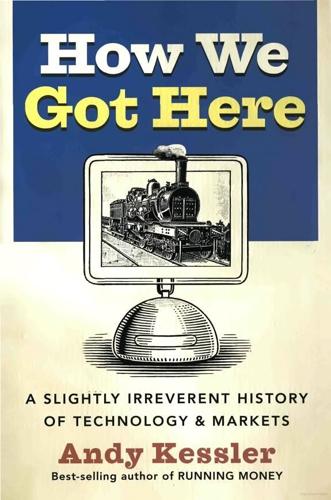
How We Got Here: A Slightly Irreverent History of Technology and Markets
by
Andy Kessler
Published 13 Jun 2005
Growth protected, and created, by its own declining price elasticity. Put that in your pipe and smoke it. We’ll see it again with semiconductors and integrated circuits in another couple of hundred years. Transportation Elasticity, Sea and Rail Even in the early 1800’s, the British Empire got off to a slow start. The transatlantic slave trade was abolished in 1807, but it wasn’t until another 20 years later that the British would declare the slave trade a form of piracy, punishable by death. In 1833, slavery was abolished in the entire British Empire, after a 5-year trial period, leading to the more commonly known date of abolishment in 1838.
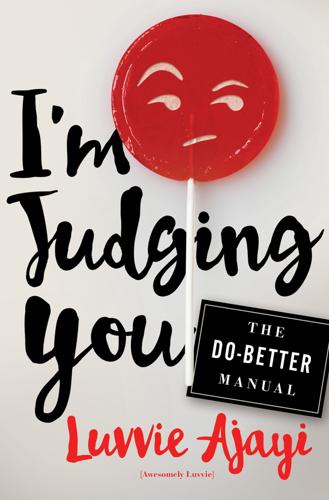
I'm Judging You: The Do-Better Manual
by
Luvvie Ajayi
Published 12 Sep 2016
I mean really, what in the ever-loving fuck? By the way, you’re welcome for this “too long; didn’t read” version of imperialism in America. This is why I should teach. Honestly, I wouldn’t do any worse than current textbooks. Like the ones in Texas that used the word “workers” instead of “slaves” in the section about the transatlantic slave trade. As if Black people were at a career fair in Africa where we submitted résumés and asked to be beaten and starved and have our families broken in exchange for a journey across the ocean and NO MONEY. At least I’d try to be a little bit accurate. My point is that the United States does not have a legitimate history of integrity and fairness.

Migrant City: A New History of London
by
Panikos Panayi
Published 4 Feb 2020
They initially received a positive response in the capital but subsequently endured hostility both because of their perceived economic threat and cultural distinctiveness, facing identification with Louis XIV and his foreign policy, from which they had fled.100 Late seventeenth- and eighteenth-century London witnessed the influx of four groups which would remain ever present in the capital and would play a large role in its ethnic diversity. The smallest group consisted of people of African origin, mostly slaves, stemming from the capital’s central role in the development of the transatlantic slave trade. The majority of the 10,000 to 15,000 Africans in Britain at this time lived in London. Most remained slaves who worked as servants, valets and butlers for the upper classes. Free black people, meanwhile, worked in a variety of occupations including road sweeping, fruit vending and street entertainment, while some tried to survive through begging.
…
Black slaves, the Victorian underclass, foreign sailors and the twenty-first-century deregulated migrants all have in common the fact that they remain outside mainstream London employment without regular pay, while also playing a central part in driving the metropolitan economy. Black people began to arrive from the sixteenth century with the development of the transatlantic slave trade and by the eighteenth century between 10,000 and 15,000 may have lived in Britain. They were concentrated especially in London but also in other major slave ports such as Bristol and Liverpool.12 West Indian and American planters brought their slaves back with them because they would not have to pay them (in contrast to white servants), and they also became a status symbol.
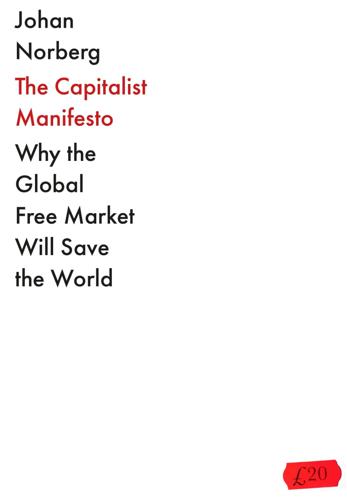
The Capitalist Manifesto
by
Johan Norberg
Published 14 Jun 2023
Thirty years later, two other World Bank economists concluded that these seven countries had since registered negative growth.21 Sub-Saharan Africa is not the poorest part of the world because the region lacks the economic conditions needed for growth but because it has lacked freedom. Its economy is based on a centuries-old development. Long before colonialism, many Africans suffered from despotism and conflict, and before the transatlantic slave trade, they suffered from the indigenous slave trade and the trans-Saharan one. But as Ghanaian economist George Ayittey has shown, there is also a strong African tradition of private property and markets with free pricing. Most parts of the continent were integrated into vast trade networks where merchants, goods and currencies moved about freely.22 European colonizers undermined these markets in two ways: partly by dividing the continent and isolating the populations from each other, partly by creating centralized structures in each colony, where farmers and workers were plundered to enrich robber barons thousands of miles away.
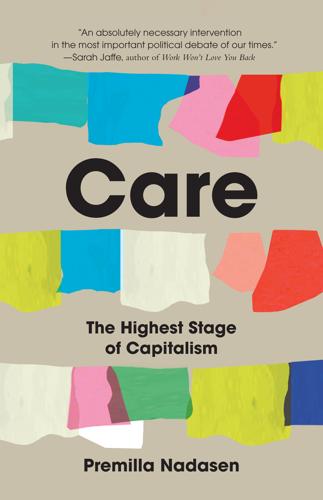
Care: The Highest Stage of Capitalism
by
Premilla Nadasen
Published 10 Oct 2023
The gendered characteristics of nurture, leisure, and cleanliness that came to define nineteenth-century white middle-class womanhood were only possible when the most difficult and backbreaking household tasks, what historian Phyllis Palmer calls “dirty work,” were outsourced to other women.7 Because of labor market segregation, even white working-class families could hire Black domestic workers. Outsourcing this work both eased the labor and signaled a higher social status. Women’s household labor was not the only way capital reproduced its workforce. Slavery was another. During the transatlantic slave trade, systemic theft of human bodies from the African continent coupled with brutal violence enabled capitalists to enslave people to work in the booming sugar, rice, cotton, and tobacco industries.8 Slavery was essential for the rise of an industrial economy. In addition to growing products destined for industry, enslaved people also worked in mining and manufacturing and in the homes of slave owners to care for children, clean, wash clothes, cook, and keep the fires going.
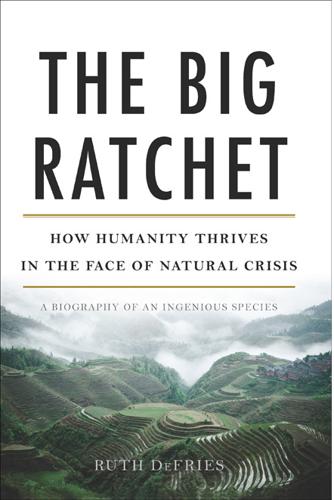
The Big Ratchet: How Humanity Thrives in the Face of Natural Crisis
by
Ruth Defries
Published 8 Sep 2014
But human labor to produce the commodity was in short supply in the tropical Americas, and native populations succumbed too readily to disease to be a reliable source for coerced labor. Africans had built up more resistance to Old World diseases. The trade winds that had brought Columbus also carried roughly 12 million Africans to the New World during the transatlantic slave trade between the sixteenth and nineteenth centuries. The energy subsidy from coerced human labor, at a cost of feeding, transporting, and purchasing the slaves, earned sugar growers heavy profits during this dark time in human history. The brief period of the Age of Discovery, powered by sails harnessing the sun’s energy in the form of wind, ranks as one of the most pivotal eras of all in the history of humanity’s twists of nature.

This Is Your Country on Drugs: The Secret History of Getting High in America
by
Ryan Grim
Published 7 Jul 2009
By the late 1800s, levies on alcohol, tobacco, and tea made up almost half of all British government revenue. They financed the country’s imperialist aspirations and, along the way, cost it the American colonies—which financed their own war for independence with tobacco proceeds. The role of opium in furthering British colonial ambitions is well known. Rum propped up the transatlantic slave trade. “With these psychoactive products [colonial powers] paid their bills, bribed and corrupted their native opponents, pacified their workers and soldiers, and stocked their plantations with field hands,” writes David Courtwright in Forces of Habit: Drugs and the Making of the Modern World.
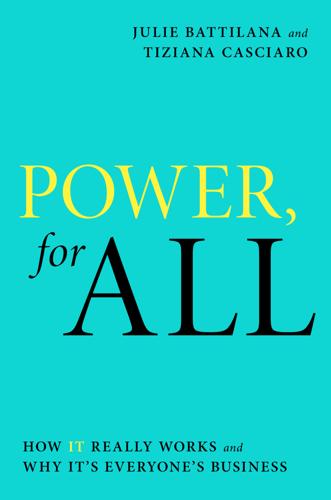
Power, for All: How It Really Works and Why It's Everyone's Business
by
Julie Battilana
and
Tiziana Casciaro
Published 30 Aug 2021
Some will argue that markets are the solution to difficult decisions about whether a technology should be used. Yet the mere demand for a product does not warrant its existence. Investors lining up to get their share of a bustling surveillance technology market is no justification for its widespread use. Such unrestrained markets—free from political and moral oversight—powered the transatlantic slave trade that deported more than ten million Africans to America over three hundred years.83 Undiscerning reliance on markets also prompted the corporate world’s radical shift to the mantra of shareholder profit maximization. Corporate leaders and investors lost sight of the environmental and societal implications of their activities, exacerbating environmental destruction and socioeconomic inequalities.

QI: The Second Book of General Ignorance
by
Lloyd, John
and
Mitchinson, John
Published 7 Oct 2010
Although slavery was abolished all over the world many years ago, in many countries the reality only changed when laws were introduced to punish slave owners. You might think slavery is a thing of the past and isn’t relevant to modern Britain, but there are more slaves in the world now – 27 million of them – than were ever seized from Africa in the 400 years of the transatlantic slave trade. And forced labour, using migrant workers effectively as slaves (and also outlawed by the Act), is widespread in Britain today. Under the Criminal Law Act 1967, a number of obsolete crimes were abolished in England including scolding, eavesdropping, being a common nightwalker and challenging someone to a fight.
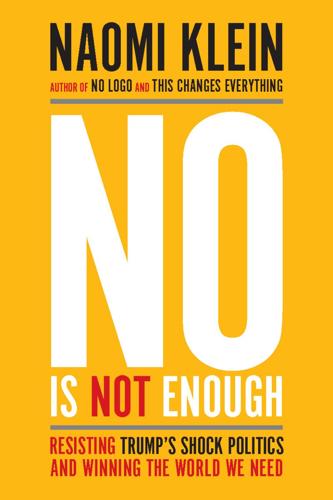
No Is Not Enough: Resisting Trump’s Shock Politics and Winning the World We Need
by
Naomi Klein
Published 12 Jun 2017
Trump is the product of powerful systems of thought that rank human life based on race, religion, gender, sexuality, physical appearance, and physical ability—and that have systematically used race as a weapon to advance brutal economic policies since the earliest days of North American colonization and the transatlantic slave trade. He is also the personification of the merger of humans and corporations—a one-man megabrand, whose wife and children are spin-off brands, with all the pathologies and conflicts of interest inherent in that. He is the embodiment of the belief that money and power provide license to impose one’s will on others, whether that entitlement is expressed by grabbing women or grabbing the finite resources from a planet on the cusp of catastrophic warming.
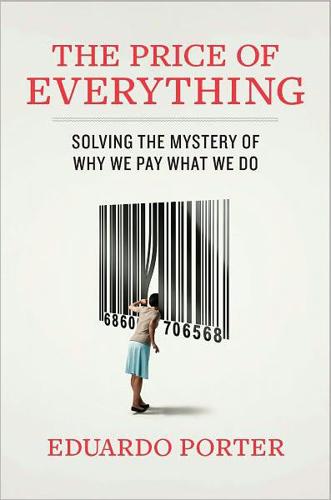
The Price of Everything: And the Hidden Logic of Value
by
Eduardo Porter
Published 4 Jan 2011
And ended:The nation then too late will find, Computing all their cost and trouble, Directors’ promises but wind, South Sea, at best, a mighty bubble. A REGULARITY THAT stands out in these spurts of overenthusiastic invention is the exuberance of the institutions providing finance. This can be prompted by newly discovered investment opportunities—like the Internet or the transatlantic slave trade. But it can also be fueled by changes in the rules governing financial institutions. During the housing boom, financial inventions like floating rate and reverse amortization mortgages were instrumental in bringing less solvent buyers into the American housing market, creating a whole new class of financial product—the subprime loan.
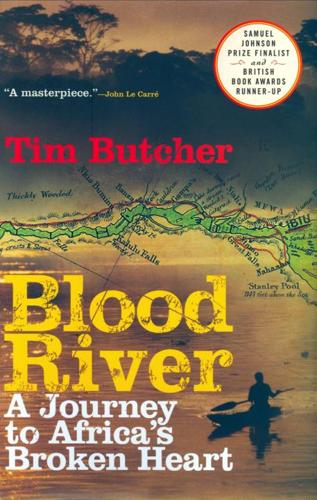
Blood River: A Journey to Africa's Broken Heart
by
Tim Butcher
Published 2 Jul 2007
By the time he died in the late sixteenth century his kingdom was close to collapse, and the region around the mouth of the Congo River turned into a wasteland, plundered by slavers and their ruthless, well-armed African agents. The Portuguese had been followed by slavers from other European nations, including Britain and Holland, who roamed up and down the coastline of west Africa filling the holds of their ships with human cargo. Between the late sixteenth century when the transatlantic slave trade began and the late nineteenth century when European nations finally banned it, the best estimate is that twelve million Africans were forced on board ships and the Congo River mouth was, throughout that entire period, one of the principal sources of slaves. Centuries after it all began, when I visited Sierra Leone, I found evidence of the dominant role played by the Congo in the slave trade.

Sorrowland: A Novel
by
Rivers Solomon
Published 4 May 2021
Their debut novel, An Unkindness of Ghosts, appeared on the Stonewall Honor Books list, won a Firecracker Award, and was a finalist for Lambda Literary, Hurston/Wright Legacy, and Locus awards. Solomon’s second book, The Deep, based on the song by the Daveed Diggs–fronted hip-hop group clipping., was the winner of a 2020 Lambda Literary Award and was short-listed for Nebula, Locus, Hugo, and numerous other awards. A refugee of the transatlantic slave trade, Solomon was born on Turtle Island but currently resides on an isle in an archipelago off the western coast of the Eurasian continent. You can sign up for email updates here. Thank you for buying this Farrar, Straus and Giroux ebook. To receive special offers, bonus content, and info on new releases and other great reads, sign up for our newsletters.
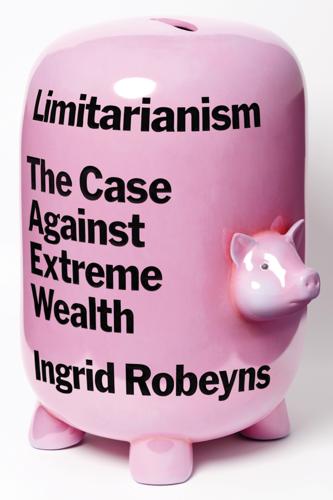
Limitarianism: The Case Against Extreme Wealth
by
Ingrid Robeyns
Published 16 Jan 2024
This should be more than just some PR operation. It is a moral imperative if you want to have a clean conscience. Much the same goes for the second case, which has produced the wealth of many people alive today: slavery. This is especially important in the US, though fortunes generated by the transatlantic slave trade proliferate across the UK, Portugal, Spain, France, and the Netherlands. In America today, racial inequality in the possession of wealth is directly related to the systematic exploitation of Black people for the profit of white slave-owners. Just before abolition, in around 1860, about four million enslaved men, women, and children were living and working on American soil.

Heaven Is a Place on Earth: Searching for an American Utopia
by
Adrian Shirk
Published 15 Mar 2022
When the Black Plague decimated the continent’s population, European recovery saw a brief period where the worker—male or female—retained a great deal of economic and social power, narrowing the class divisions that had once separated the lords from the serfs. Then the ruling class doubled down. During this same period, we saw the rise of the transatlantic slave trade, which included poor European whites and Indigenous South American people, and in those Caribbean plantations where all of these people converged, complex multiracial alliances and families formed. Then the English Civil War raged for thirty years. By the 1650s, however, the diminished ruling class had done a variety of things to thwart the development of the communalisms that were emerging both in Europe and in the Caribbean: In Europe, the creation of private property essentially eradicated any idea of “the commons” and de-collectivized the peasant class into nuclear units; waged labor did a similar thing, increasing the value of the individual laborer into a fiscal unit; and with the disappearance of “the commons,” women, and more specifically the womb, became the commons, the site of “primitive accumulation,” the source of producing new, future laborers who could accrue wealth.
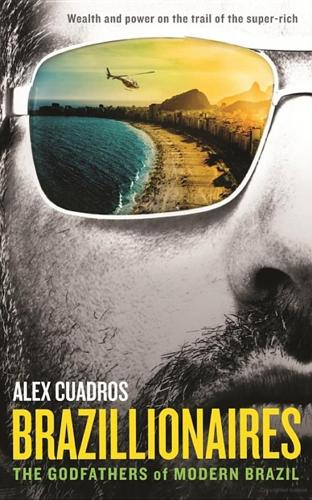
Brazillionaires: The Godfathers of Modern Brazil
by
Alex Cuadros
Published 1 Jun 2016
As the biographer Jorge Caldeira tells it, Mauá was early in sensing a point of inflection in Brazil. Well into the nineteenth century, the country had an antebellum South-style economy with no industry to speak of. But in 1850 Emperor Pedro II bowed to pressure from England and enforced a ban on the transatlantic slave trade, Brazil’s most profitable business. Forced to liquidate their affairs, Rio’s slave traffickers found themselves with a lot of idle cash on their hands. And Mauá was ready to leap on the opportunity. A prosperous Rio merchant, he had recently wound down his import-export firm and raised European capital to invest in ventures that few Brazilians had ever tried before.
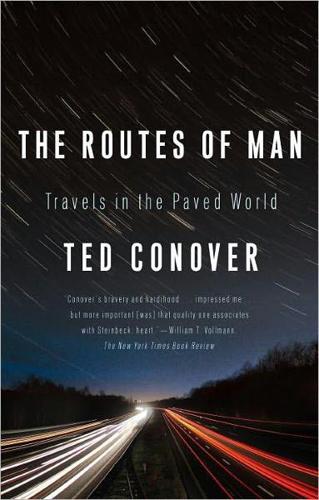
The Routes of Man: How Roads Are Changing the World and the Way We Live Today
by
Ted Conover
Published 15 Jan 2010
Named by Portuguese slave traders after Lagos, Portugal, the port on the Algarve through which many slaves were brought to Europe, the settlement on Lagos Island had an active slave market for at least two hundred years. Three and one-half million slaves are estimated to have been taken from pre-colonial Nigeria, of a total of 15 million taken from all of West Africa. Britain shipped more slaves than any other country until 1807, when it declared the transatlantic slave trade illegal and set out to quash it. The tribal rulers of Lagos Island who profited from the trade were slow to conform to the new law, which Britain cited as a justification for annexing Lagos in 1861, making the city a British colony. Southern Nigeria, including Lagos, was joined to the Muslim north in a loose affiliation in 1914.
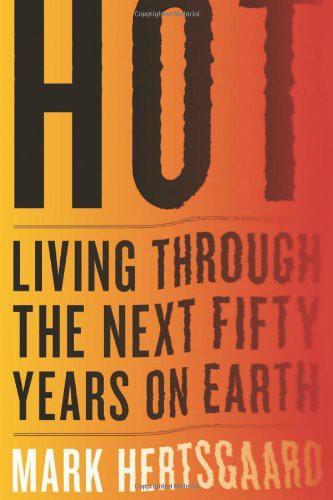
Hot: Living Through the Next Fifty Years on Earth
by
Mark Hertsgaard
Published 15 Jan 2011
Of course, abandoning New Orleans would also mean abandoning an irreplaceable jewel of America's history and culture. Founded in 1718 by French Canadian explorer Jean Baptiste Le Moyne, Sieur de Bienville, New Orleans is in fact older than the United States. Its riverside market had been a headquarters of the transatlantic slave trade that shaped so much of U.S. history; its musicians gave birth to jazz, America's most original art form. Most infuriating about outsiders' reluctance to help rebuild New Orleans, locals said, was that it was based on misinformation. "It wasn't Hurricane Katrina that put 80 percent of New Orleans underwater, it was the inexcusable failure of our levees," said Sandy Rosenthal, a city resident who cofounded the citizens group Levees.org.
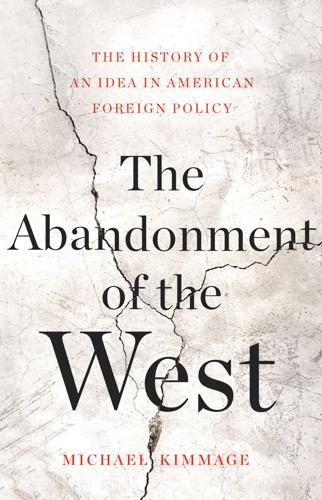
The Abandonment of the West
by
Michael Kimmage
Published 21 Apr 2020
It is not a museum of American foreign policy, but foreign policy and international affairs are a part of it. The Columbian themes of navigation and exploration occupy the first of the three history galleries. They are what enabled the fifteenth-century European encounter with Africa, which in turn fostered the transatlantic slave trade and the horrors of the Middle Passage, all of the history that the 1893 Chicago World’s Fair deliberately ignored. Another exhibition room depicts African American participation in American wars, “Double Victory: The African American Military Experience.” Most striking of all is the museum’s juxtaposition of two historical objects.
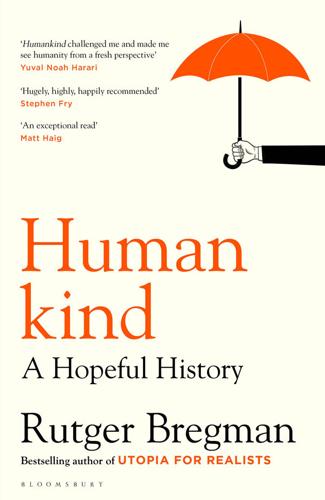
Humankind: A Hopeful History
by
Rutger Bregman
Published 1 Jun 2020
‘They would make fine servants … With fifty men we could subjugate them all and make them do whatever we want.’1 Christopher Columbus – the traveller in question – lost no time putting his plan into action. The following year he returned with seventeen ships and fifteen hundred men, and started the transatlantic slave trade. Half a century later, less than 1 per cent of the original Carib population remained; the rest had succumbed to the horrors of disease and enslavement. It must have been quite a shock for these so-called savages to encounter such ‘civilised’ colonists. To some, the very notion that one human being might kidnap or kill another may even have seemed alien.
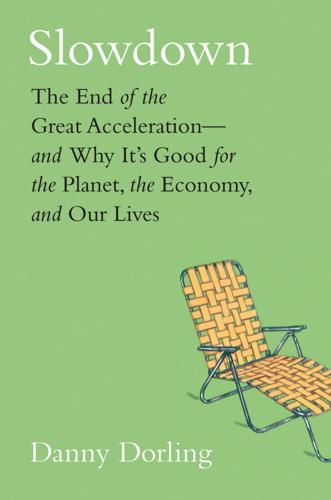
Slowdown: The End of the Great Acceleration―and Why It’s Good for the Planet, the Economy, and Our Lives
by
Danny Dorling
and
Kirsten McClure
Published 18 May 2020
The decline is so great that overall worldwide human population slowdown occurs. Look carefully at the decade prior to 1850 to see proof of this. The “scramble for Africa” took place long after the rise of the European slave trade, which was established to populate the Americas with free labor (free in terms of not wage-paid). The transatlantic slave trade devastated Africa. After the initial shock and destruction, the social structures and norms that had developed over centuries across the continent (and everywhere else in the world that was invaded and colonized), norms that had before produced relatively stable populations, broke down. Then acceleration set in.
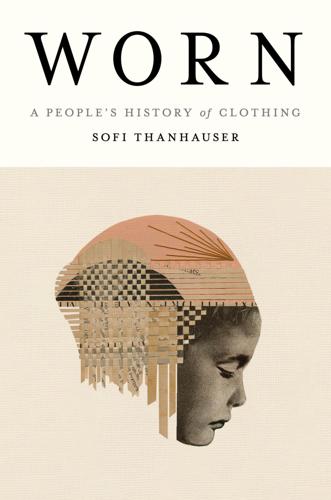
Worn: A People's History of Clothing
by
Sofi Thanhauser
Published 25 Jan 2022
In 1820 it grew 167.5 million pounds. During the thirty years following the invention of the gin, the internal slave trade in the U.S. moved one million slaves to the Deep South to grow cotton, and by 1830, one thirteenth of all Americans, mostly slaves, were engaged in growing this single crop. The transatlantic slave trade was abolished in 1807, but in the United States slavery flourished. Plantation owners treated their slaves with the same ruthlessness that they applied to the land itself. Monocropping cotton exhausts land. Over the course of America’s history as a major cotton producer, wherever the land gave out, planters simply moved on: first to the South, and then the West.

Open: The Story of Human Progress
by
Johan Norberg
Published 14 Sep 2020
Skin colour and other traits associated with race might seem like a stable division by which we judge people. However, our evaluation of their meaning shifts and changes. In the late eighteenth century, European racial attitudes began to harden, and became an obsession, with terrible consequences. One reason was the need to rationalize the transatlantic slave trade and colonial projects. It was not easy to subject, enslave and sometimes exterminate whole populations while also sleeping well at night and thinking of yourself as a decent family father – unless you could convince yourself that they were some sort of inferior beings. But such views are not inevitable.

Money: Vintage Minis
by
Yuval Noah Harari
Published 5 Apr 2018
Capitalism has killed millions out of cold indifference coupled with greed. The Atlantic slave trade did not stem from racist hatred towards Africans. The individuals who bought the shares, the brokers who sold them, and the managers of the slave-trade companies rarely thought about the Africans. Nor did the owners of the sugar plantations. Many owners lived far from their plantations, and the only information they demanded were neat ledgers of profits and losses. It is important to remember that the Atlantic slave trade was not a single aberration in an otherwise spotless record. The Great Bengal Famine was caused by a similar dynamic – the British East India Company cared more about its profits than about the lives of 10 million Bengalis.
…
If there is a single corporation controlling all shoe factories in a country, or if all factory owners conspire to reduce wages simultaneously, then the labourers are no longer able to protect themselves by switching jobs. Even worse, greedy bosses might curtail the workers’ freedom of movement through debt peonage or slavery. At the end of the Middle Ages, slavery was almost unknown in Christian Europe. During the early modern period, the rise of European capitalism went hand in hand with the rise of the Atlantic slave trade. Unrestrained market forces, rather than tyrannical kings or racist ideologues, were responsible for this calamity. When the Europeans conquered America, they opened gold and silver mines and established sugar, tobacco and cotton plantations. These mines and plantations became the mainstay of American production and export.
…
In 8500 BC one could cry bitter tears over the Agricultural Revolution, but it was too late to give up agriculture. Similarly, we may not like capitalism, but we cannot live without it. The second answer is that we just need more patience – paradise, the capitalists promise, is right around the corner. True, mistakes have been made, such as the Atlantic slave trade and the exploitation of the European working class. But we have learned our lesson, and if we just wait a little longer and allow the pie to grow a little bigger, everybody will receive a fatter slice. The division of spoils will never be equitable, but there will be enough to satisfy every man, woman and child – even in the Congo.
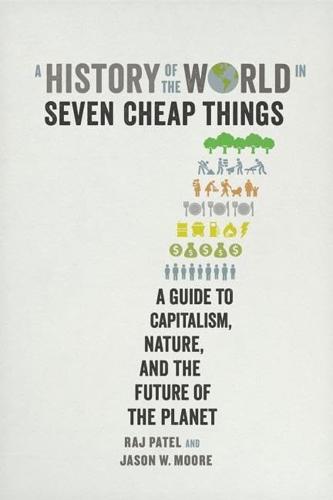
A History of the World in Seven Cheap Things: A Guide to Capitalism, Nature, and the Future of the Planet
by
Raj Patel
and
Jason W. Moore
Published 16 Oct 2017
After sugar came wine, grown in the ashes of the cane industry. Grapes demand less labor, water, and fuel than cane. But wine needs casks, so for centuries the wood for Madeira barrels was brought from the most economical source: the cheap forests of the New World. Commodities flowed the other way too, as Madeira was a conduit for the Atlantic slave trade until the eighteenth century.58 In a more recent act of reinvention, the island today uses that grim history as a source of revenue through tourism.59 Yet as the sugar frontier closed in Madeira, new frontiers opened elsewhere, and forces less obvious than a craving for sweetness shaped the island, and soon the planet.60 FRONTIERS AND CHEAPNESS This sketch of a colonial frontier gives us a glimpse of how capitalism was to work beyond Madeira.
…
Although we know little about slave rebellion in Madeira, we do know that by the end of the sugar boom, the technologies of slavery and plantation had been refined and were being exported across the Atlantic, first to São Tomé, where runaway slaves called Angolares scorched the island’s sugar mills and besieged its capital for two weeks in 1596.89 We also know, as we discuss in chapter 3, that it is in workers’ opposition to their exploitation that some of the most potent challenges to capitalism can be found. Slavery remains, as does resistance to it. There are more humans in forced labor in the twenty-first century than were transported by the Atlantic slave trade.90 The International Labor Organization found than there were nearly 21 million people in forced labor in 2012, of whom 2.2 million were in labor forced upon them by the state (prison work) or rebel military groups. Of the remaining 18.7 million, 4.5 million were involved in commercial sexual exploitation and 14.2 million in forced economic exploitation.91 For comparison, 12.5 million Africans were enslaved and transported through the Middle Passage.
…
Kino-nda-niimi Collective, ed. 2014. The Winter We Danced: Voices from the Past, the Future, and the Idle No More Movement. Winnipeg: ARP. Kinsbruner, Jay. 2005. The Colonial Spanish-American City: Urban Life in the Age of Atlantic Capitalism. Austin: University of Texas Press. Klein, Herbert. 2004. “The Atlantic Slave Trade to 1650.” In Tropical Babylons: Sugar and the Making of the Atlantic World, 1450–1680, edited by Stuart B. Schwartz, 201–36. Chapel Hill: University of North Carolina. Klein, Naomi. 2007. The Shock Doctrine: The Rise of Disaster Capitalism. New York: Metropolitan Books / Henry Holt. ———. 2014.
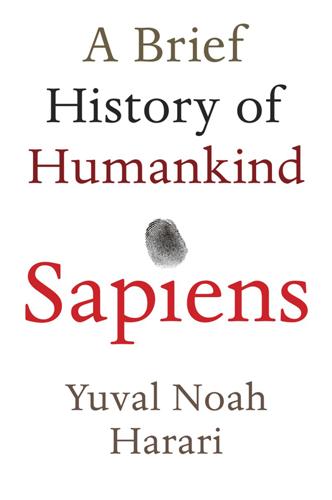
Sapiens: A Brief History of Humankind
by
Yuval Noah Harari
Published 1 Jan 2011
Capitalism has killed millions out of cold indifference coupled with greed. The Atlantic slave trade did not stem from racist hatred towards Africans. The individuals who bought the shares, the brokers who sold them, and the managers of the slave-trade companies rarely thought about the Africans. Nor did the owners of the sugar plantations. Many owners lived far from their plantations, and the only information they demanded were neat ledgers of profits and losses. It is important to remember that the Atlantic slave trade was not a single aberration in an otherwise spotless record. The Great Bengal Famine, discussed in the previous chapter, was caused by a similar dynamic – the British East India Company cared more about its profits than about the lives of 10 million Bengalis.
…
Doctors alleged that blacks live in filth and spread diseases – in other words, they are a source of pollution. These myths struck a chord in American culture, and in Western culture generally. They continued to exert their influence long after the conditions that created slavery had disappeared. In the early nineteenth century imperial Britain outlawed slavery and stopped the Atlantic slave trade, and in the decades that followed slavery was gradually outlawed throughout the American continent. Notably, this was the first and only time in history that slaveholding societies voluntarily abolished slavery. But, even though the slaves were freed, the racist myths that justified slavery persisted.
…
If there is a single corporation controlling all shoe factories in a country, or if all factory owners conspire to reduce wages simultaneously, then the labourers are no longer able to protect themselves by switching jobs. Even worse, greedy bosses might curtail the workers’ freedom of movement through debt peonage or slavery. At the end of the Middle Ages, slavery was almost unknown in Christian Europe. During the early modern period, the rise of European capitalism went hand in hand with the rise of the Atlantic slave trade. Unrestrained market forces, rather than tyrannical kings or racist ideologues, were responsible for this calamity. When the Europeans conquered America, they opened gold and silver mines and established sugar, tobacco and cotton plantations. These mines and plantations became the mainstay of American production and export.
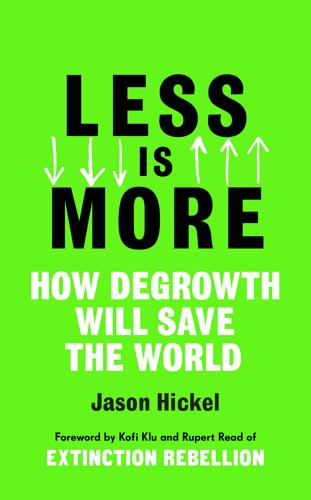
Less Is More: How Degrowth Will Save the World
by
Jason Hickel
Published 12 Aug 2020
During the colonial period, the peoples of the global South were routinely cast as ‘nature’: as ‘savages’, as ‘wild’, as less-than-human. Tellingly, the Spaniards referred to Indigenous Americans as naturales. Dualism was recruited in order to justify the appropriation not only of land in the colonies, but of the bodies of the colonised themselves. So too with the Atlantic slave trade. After all, in order to enslave someone, you first have to deny their humanity. Dualism served this purpose brilliantly: Africans and Indigenous Americans were cast as objects in the European imagination, and exploited as such. As the Martiniquan writer Aimé Césaire put it, colonisation is, at base, a process of thingification.42 But there was also something else going on.
…
In the nineteenth and twentieth centuries, this process was accelerated by the large-scale discovery of fossil fuel reserves – first coal and then oil – and the invention of technologies (like the steam engine) to extract and use them. A single barrel of crude oil can perform about 1700kWh of work. That’s equivalent to 4.5 years of human labour. From the perspective of capital, tapping into underground oceans of oil was like colonising the Americas all over again, or a second Atlantic slave trade – a bonanza of appropriation. But it also supercharged the process of appropriation itself. Fossil fuels are used to power giant drills for deeper mining, trawlers for deep-sea fishing, tractors and combines for more intensive farming, chainsaws for faster logging, plus ships and trucks and aeroplanes to move all of these materials around the world at staggering speeds.
…
Every time capital bumps up against barriers to accumulation (say a saturated market, a minimum-wage law, or environmental protections), then like a giant vampire squid it writhes in a desperate attempt to whip those barriers out of the way and plunge its tentacles into new sources of growth.3 This is what is known as a ‘fix’.4 The enclosure movement was a fix. Colonisation was a fix. The Atlantic slave trade was a fix. The Opium Wars against China were a fix. The western expansion of the United States was a fix. Each one of these fixes – all of them violent – opened up new frontiers for appropriation and accumulation, all in service of capital’s growth imperative. In the nineteenth century the global economy was worth a little more than $1 trillion, in today’s money.
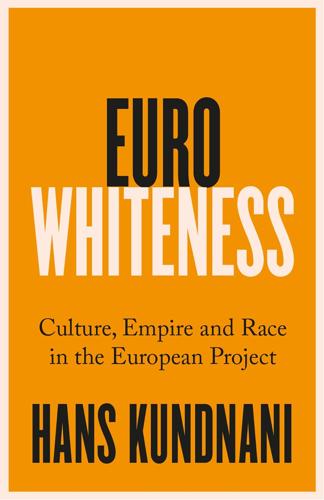
Eurowhiteness: Culture, Empire and Race in the European Project
by
Hans Kundnani
Published 16 Aug 2023
Yet, at this time, Europeans still saw the differences between them and the indigenous populations of the Americas in terms that were more religious than racial—the early accounts of Columbus’s voyages refer to the settlers as “the Christians”.17 Over the next several centuries, however, the racial would take up the narrativising, self-identifying work previously played by the religious, as Goldberg puts it. The shift from a more religious conception of European identity to a more racial one took place in the context of wider shifts in European colonialism in the Americas and in particular the emergence of the Atlantic slave trade. During the seventeenth century, England and France replaced Spain as the dominant European powers in the Americas, especially in north America and the Caribbean. This in turn was linked to a shift in the economies of European colonies. The focus of Spanish colonialism in the Americas had been on the discovery and acquisition of gold.
…
However, Spain retained the tiny enclaves of Ceuta (“the exact site where European imperialism commenced”, as Peo Hansen puts it) and Melilla on the Moroccan coast.62 With Spain’s accession to the EC in 1986—the year before Morocco was told that it could not join the EC because it was in Africa rather than Europe—the bloc also reacquired territory in Africa. Portugal was Europe’s oldest colonial power and had played a leading role in the development of the Atlantic slave trade and in colonialism in Africa. It also maintained a significant colonial presence longer than any other European power; even after the humiliating loss of Goa to India in 1961, it kept fighting what was known as the Overseas War in Angola, Guinea-Bissau and Mozambique until 1974. As in the case of the UK, its imperial history was over before it joined the EC.
…
See Alternative für Deutschland (AfD) Africa, 31, 43, 49, 51, 59, 62–3, 71–6, 79, 80, 93, 162 Age of Discovery or Exploration, 49–50, 59 Al-Andalus, 45 Algeria, 70, 71, 73, 74, 76, 110 EEC agreement with (1976), 86 Algerian War of Independence (1954–1962), 72–3 Allen, Theodore, 51 Alliot-Marie, Michèle, 128 Alternative für Deutschland (AfD, German political party), 133, 141–2 American nationalism, 22–3 Americas European colonialism in, 50, 51 slavery in, 51, 52 See also United States (US) Amsterdam Treaty (1997), 119 Anderson, Benedict, 24–6, 28, 47 anti-Semitism, 45, 58, 94 Apartheid, 53 Arab Spring, 128 Arendt, Hannah, 27–8, 35, 77, 93 Aristotle, 55 Ashton, Catherine, 128–9 al-Assad, Bashar, 147 asylum seekers. See migration Atlantic slave trade, 50 Attlee, Clement, 165 Austro-Hungarian empire, 115 Austria, 142 Azov Battalion, 149 Baltic states, 129, 130, 147 Banks, Arron, 156 barbarians, 43, 44, 55–6 “barbarism”, 43, 44, 64, 77 Barroso, José Manuel, 13–14, 107 Bataclan massacre (Nov 2015), 140 Battle of Tours (732), 44 BBC, 149, 163, 176 Beck, Ulrich, 17–18, 69, 113, 115 Begum, Neema, 161 Belarus, 145 Belgian Congo, 62, 76 Belgium, 71, 74, 75, 76 Ben Ali, Zine El Abidine, 110, 128 Berlin Conference (1884–5), 59, 75 Betts, Paul, 77, 79 Bhambra, Gurminder, 170, 171, 173, 177 Bickerton, Chris, 99–100 Blair government, 168 Bolkestein, Frits, 112, 142 Bonaparte, Napoleon, 55 Böröcz, József, 117–18 Borrell, Josep, 148, 150, 151 Braudel, Fernand, 50 Brexit, 8–11, 153–79 “Breaking Point” poster, 156 decolonial project, 170–4 expression of racism, 153, 156, 158, 160–4 Macron’s view, 136 memory of empire, 156–7 “postcolonial melancholia”, 174–9 race and, 9–10 referendum (2016), 11, 155–6, 158, 167 rejection of immigration, 156, 158, 161, 165–9 sovereignty concerns, 159 Vote Leave campaign, 156 British immigration policy, 10, 165, 178 Brown, Megan, 72, 75, 86 Brubaker, Rogers, 36–7 Buck-Morss, Susan, 56 Bulgaria, 109 Bundesbank, 101 Calhoun, Craig, 23 Campbell, Sol, 163 Camus, Renaud, 37 capitalism, 81 Castle, Barbara, 87, 167 central Europe idea, 105–6, 107–8 “return to Europe” idea, 113–18 Césaire, Aimé, 93 Chakrabarty, Dipesh, 97 Charlemagne, 47 Charlemagne Prize, 47, 63, 79, 111, 166 Chatterjee, Partha, 28–9 China, 25, 130, 138 “Christian civilisation”, 78–80 Christian Democrats, 78–9, 82, 135 Christianity, 36, 116–17 in Cold War context, 78–9 Medieval Europe and, 44–8 Churchill, Winston, 78 civic regionalism, 3–4, 20–2, 23–4, 34, 48, 81–6, 126 “civilian power”, 120–1 Clash of Civilisations, The (Huntington), 142 Code Noir, 52, 56 Cold War, 10, 14, 16, 17, 27, 77–9, 80, 81, 89, 95, 104, 105, 106, 121, 150, 167 post-Cold War period, 97–8, 99, 100, 102, 117, 118–19 Colley, Linda, 32 Columbus, Christopher, 50, 55 Commission for Racial Equality, 9 Common Agricultural Policy, 162 Common Security and Defence Policy (CSDP), 122 Commonwealth Immigrants Act (1962), 166 Commonwealth, 87, 154, 161, 164–8, 169, 178 Constantinople, 46 “constitutive outsiders”, 33 Convention on the Future of the European Union, 103 “cosmopolitan Europe”, 13, 15–19, 56, 97–8 Coudenhove-Kalergi, Richard von, 62–3, 80 COVID-19 pandemic, 29 Crete, 43 Crimea, annexation of (2014), 129 Crusades, 45, 46 CSDP.

The Relentless Revolution: A History of Capitalism
by
Joyce Appleby
Published 22 Dec 2009
These were the War of the League of Augsburg (1689–1697), War of the Spanish Succession (1702–1713), War of Jenkins’s Ear (1739–1741), War of the Austrian Succession (1740–1748), Seven Years’ War (1756–1763), War of the American Revolution (1777–1783), War of the French Revolution (1792–1800), Napoleonic Wars (1803–1815). 2. David Brion Davis, Inhuman Bondage: The Rise and Fall of Slavery in the New World (Oxford, 2006), 80; David Eltis, “The Volume and Structure of the Transatlantic Slave Trade: A Reassessment,” William and Mary Quarterly, 58 (2001). 3. Peter Bakewell, A History of Latin America, 2nd ed. (2004), 153–57. 4. Kenneth Pomeranz and Steven Topik, The World That Trade Created: Society, Culture, and the World Economy, 2nd ed. (Armonk, NY, 2006), 88–89. 5. Arnold Pacey, Technology in World Civilization: A Thousand-Year History (Cambridge, 1991), 100. 6.
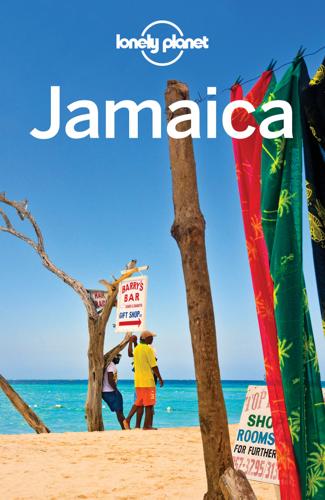
Lonely Planet Jamaica
by
Lonely Planet
In rare instances they might save enough money to buy their freedom, which masters could also grant as they wished. By 1800, however, the slave population of 300,000 outnumbered the free population 20 to one. Matthew Parker's The Sugar Barons is a gripping account of the founding of Britain's Caribbean slave empire, with Jamaica taking center stage. THE ATLANTIC SLAVE TRADE The Atlantic slave trade was dubbed 'the triangular trade.' European merchants sailed to West Africa with goods to exchange for slaves. Although domestic slavery had long been an established part of many African societies, European demand (and trade goods such as firearms) turned African states into asset-strippers, sucking in captives in insatiable numbers, often from tribes living hundreds of miles from African slave ports.
…
oNational Museum WestMUSEUM ( MAP GOOGLE MAP ; %940-6402; http://museums-ioj.org.jm/; Sam Sharpe Sq, Montego Bay Cultural Centre; J$400; h9am-5pm Tue-Sun) This well-curated, revamped museum, peppered with period objects, takes you through the history of western Jamaica, from the Cohaba ceremonies of the indigenous Taínos and the arrival of the Spanish, followed by the English, to the trans-Atlantic slave trade, the advent of king sugar, Maroon rebellions, emancipation and the development of 20th-century Montego Bay as a tourist destination. A separate room introduces you to the rise of Rastafarianism, the alleged divinity of Haile Selassie and the back-to-Africa movement. Montego Bay Cultural CentreCULTURAL CENTRE ( MAP GOOGLE MAP ; %940-6402; Sam Sharpe Sq; h9am-5pm Tue-Sun) At the southwest corner of Sam Sharpe Sq you’ll find the copper-domed Civic Centre, an elegant colonial-style, cut-stone building on the site of a ruined colonial courthouse where trials were held in the wake of the Christmas Rebellion of 1831 and where Sam Sharpe was sentenced to death.
…
On the corner of Market St and Main St, an upturned cannon sprouting a stop sign harks back to Black River's days as a British military garrison. North along Market St is the Zong Massacre memorial ( MAP GOOGLE MAP ; Market St), commemorating the 1781 event in which 133 African slaves were thrown overboard by the crew of the Zong slave ship, with the subsequent legal case contributing to the abolition of the trans-Atlantic slave trade. Two blocks west of the parish church are the porticoed courthouse ( MAP GOOGLE MAP ; 58 High St) and the town hall ( MAP GOOGLE MAP ), with lofty pillars, and beyond that, a simple Roman Catholic church ( MAP GOOGLE MAP ; Main St). Also along this section of Main St are three houses that are splendid examples of the Jamaican vernacular style, with jalousies, decorative fretwork and shady verandas: stately 1890s Magdala House ( MAP GOOGLE MAP ; Main St), which once belonged to Thomas Leyden, from the town's most powerful family at the time; the 1894 Invercauld Great House ( MAP GOOGLE MAP ; High St), which belonged to the other powerful family, the Farquharsons; and Waterloo Great House ( MAP GOOGLE MAP ; Main St), the first private house in Jamaica to get electricity.
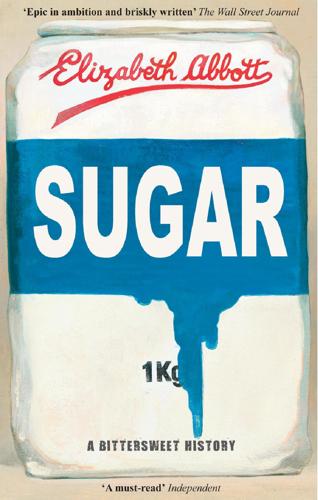
Sugar: A Bittersweet History
by
Elizabeth Abbott
Published 14 Sep 2011
(Italics in original.) This is a comprehensive and dramatic account and analysis of Granville Sharp’s legal battle on behalf of English slaves. 394. Quoted in Wise, Though the Heavens May Fall, p. 209. 395. Quoted in ibid., p. 194. 396. Shyllon, Black Slaves in Britain, p. 188. 397. Quoted in Anstey, The Atlantic Slave Trade and British Abolition, p. 103. 398. Ibid., pp. 114–15. 399. Ibid., p. 127. 400. Codrington College now serves as the religion department of the University of West Indies and an internationally recognized Anglican divinity school. 401. Quoted in Goveia, Slave Society in the British Leeward Islands, p. 268. 402.
…
Cugoano, Narrative of the Enslavement of a Native of Africa. 414. “Valuable Articles for the Slave Trade,” unknown date, www.discoveringbristol.org.uk/showImageDetails.php?sit_id=1&img_id=716. 415. James Gillray, 1792, “Barbarities in the West Indies,” www.discoveringbristol.org.uk/showImageDetails.php?sit_id=1&img_id=2388. 416. Quoted in Anstey, The Atlantic Slave Trade and British Abolition, p. 289. 417. Quoted in Hochschild, “Against All Odds,” p. 10. 418. Anonymous, Remarkable Extracts and Observations on the Slave Trade with Some Considerations on the Consumption of West India Produce, 1792, quoted in Williams, Capitalism and Slavery, p. 183. 419. Quoted in Kitson, “‘The Eucharist of Hell.’” 420.
…
Rogers Albert, The House of Bondage or Charlotte Brooks and Other Slaves, Original and Life-like, as They Appeared in Their Old Plantation and City Slave Life; Together with Pen-pictures of the Peculiar Institution, with Sights and Insights into Their new Relations as Freedmen, Freemen, and Citizens. New York: 1890, http://docsouth.unc.edu/neh/albert/albert.html. Anton Allahar, Class, Politics, and Sugar in Colonial Cuba. Lewiston, N.Y.: Edwin Mellon Press, 1990. Roger Anstey, The Atlantic Slave Trade and British Abolition, 1760–1810. London: Macmillan, 1975. Donald W. Attwood, Raising Cane: The Political Economy of Sugar in Western India. Toronto: HarperCollins, 1991. F. R. Augier et al., The Making of the West Indies. London, Trinidad and Tobago: Longman, 1976. Elisabeth Ayrton, The Cookery of England.

More: The 10,000-Year Rise of the World Economy
by
Philip Coggan
Published 6 Feb 2020
They moved to escape flood, or drought; they moved to find new lands to farm, or seas to fish; they moved to find new opportunities away from their clans or tribes; they moved to escape conquering armies and oppressive states; they moved unwillingly, in the case of the 10 to 12 million Africans subjected to the Atlantic slave trade; they moved as invaders, like the European colonial powers or the Mongol empire; and they moved, as was the case with most immigrants at Ellis Island, in search of a fresh start in a new world. All humans are immigrants, or are descended from them, differing only in the date when we, or our ancestors, arrived at our current home.
…
The Romans and Greeks had large numbers of slaves, and owning slaves was a mark of wealth in China in the early 12th century.9 The Muslim conquerors of Spain took slaves from the local population, and between 850 and 1000CE perhaps as many as 2.5 million Africans were shipped from south of the Horn of Africa, which was dubbed the “Cape of Slaves”.10 And Viking raiders made slaves from the peoples of eastern Europe. (This was so common that “Slav” became the basis of the word slave.) The Atlantic slave trade was different in terms of its sheer scale; it was the industrialisation of brutality. From the start of the trade in the 1440s to its final abolition in the mid-19th century, around 12 million Africans may have been transported to the Americas. Such was their inhumane treatment on the ships that transported them that perhaps 1.5 million died en route.
…
Each slave was given a space around 63 inches (1.6m) high and 52 inches (1.32m) wide. In these crowded conditions, sickness was inevitable. Around a third of the deaths on board were from dysentery, with smallpox the second-biggest killer.11 In one notorious case, 132 sick slaves were thrown overboard to drown so that the owner could claim on the insurance.12 The Atlantic slave trade was driven by economics, not conquest. The European Christians who invaded Palestine in the course of the Crusades came across sugar cane (sugar beets were not cultivated until the 18th century),13 and they took a taste for the crop back with them. The Islamic empire had spread sugar cultivation around the Mediterranean, including North Africa and Spain, and Europeans took over sugar planting as they reconquered some of these territories, initially using forced peasant labour.
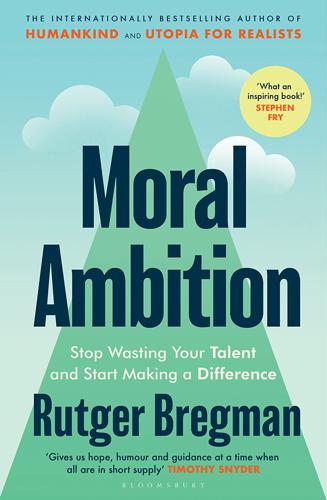
Moral Ambition: Stop Wasting Your Talent and Start Making a Difference
by
Bregman, Rutger
Published 9 Mar 2025
They were referred to in jest as the ‘Saints’ at the time and later dubbed the ‘Clapham Sect’. 19 Adam Hochschild, Bury the Chains: The British Struggle to Abolish Slavery, Houghton Mifflin (2005), p. 97. 20 Chaim D. Kaufmann and Robert A. Pape, ‘Explaining Costly International Moral Action: Britain’s Sixty-Year Campaign against the Atlantic Slave Trade’, International Organization (Fall 1999), pp. 631 and 634. See also: Christopher Leslie Brown, ‘Abolition of the Atlantic Slave Trade’, in Gad Heuman and Trevor Burnard (eds), The Routledge History of Slavery, Routledge (2011), p. 292. 21 Yes, a cult leader like Elon Musk sparked a revolution in the auto industry and aerospace (that is, before taking over Twitter/X, spreading conspiracy theories, and joining forces with Donald Trump).
…
But the more time he spent with the archives, the more he realised some individuals did indeed have outsized influence – Thomas Clarkson in particular. Brown: ‘As far as the movement goes, I just think that Thomas Clarkson is really essential to what ends up emerging.’ 32 One in ten Atlantic crossings saw an uprising on board. Christopher Leslie Brown, ‘Abolition of the Atlantic Slave Trade’, Gad Heuman and Trevor Burnard (eds), The Routledge History of Slavery, Routledge (2011), p. 283. 33 Clarkson, The History of the Rise: Volume I, pp. 210–211. 34 They were primarily Quakers, but Clarkson also met lawyer Granville Sharp, who argued against slavery for more than twenty years, minister James Ramsey, who had recently penned a shocking account of conditions in the Caribbean, and the formerly enslaved writer Olaudah Equiano (see Chapter 4). 35 Clarkson, The History of the Rise: Volume I, p. 225. 36 Christopher Leslie Brown, Moral Capital: Foundations of British Abolitionism, University of North Carolina Press (2006), p. 442. 37 Brown, Moral Capital, p. 441. 38 That was Samuel Taylor Coleridge, quoted in: Ellen Gibson Wilson, Thomas Clarkson, Palgrave Macmillan (1990), p. x. 39 Quoted in: Hochschild, Bury the Chains, p. 237. 40 Thomas Clarkson, The History of the Rise, Progress and Accomplishment of the Abolition of the African Slave-Trade by the British Parliament: Volume II, R.
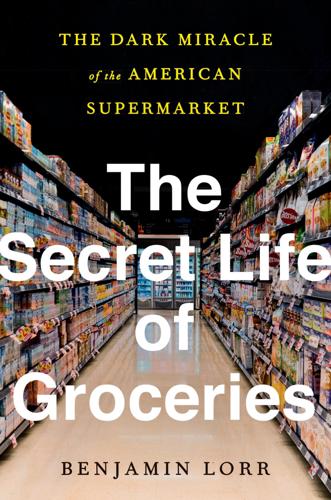
The Secret Life of Groceries: The Dark Miracle of the American Supermarket
by
Benjamin Lorr
Published 14 Jun 2020
* Important, if morally tricky, point here: There is no legitimate way to compare modern slavery with the Atlantic slave trade, the latter of which is perhaps the single most destructive institution in the history of humanity, and so what I did up there was wrong and misleading and mostly designed to get your eyes down here. I have elected to use the word “slave” liberally in this text because I think no other word hits with the appropriate impact when describing a person who has been simultaneously bought, sold, imprisoned, and forced to work under the threat of violence. But the Atlantic slave trade with its basis in skin color, with its dynastic heritability—whereby humans born from slaves are born enslaved—and most critically by the fact that it was legal and upheld by the state, is unique and distinct and should not be used as some gauge point for the awfulness described.
…
The more they looked, the more they were stunned. Slavery, debt bondage, and forced labor were not extinct in our world, nor were they limited vestiges enabled by the chaos of war; they were vital forces underpinning the global economy. Over 35 million people per year work under coercion, more than in the entire history of the Atlantic slave trade,* and their labor is responsible for some $150 billion in profits per year. Sex slaves, like the women in Darfur, represent less than a quarter. In many ways, the horror is so vast that it risks overwhelming anyone who learns about it. And so Humanity United did something unusual. Rather than plow in and fund direct action, it began to strategize.
…
See Albrecht Discount (ALDI) alienation, 268 Al Jazeera, 313–14n allergens, 193–94n39 “all natural” identity, 129 almond butter, 36, 64, 287n almonds, 64 Alpha Beta, 284n Amazon, 5, 128–29n25, 259–65, 266 Amazon Prime, 264 Andaman Sea, 214–15 Andy (trainer at Whole Foods), 158–61, 164, 168–69, 184, 261 animal rights groups, 198–200 animal welfare, 77, 193–94n39, 198, 199–200, 199n42 antitrust laws, 96 Apple Store, 36 aquaculture, 213–23, 225–29, 308–9nn assault, 106 assembly lines in automobile industry, 174–77 inverted, 29–30, 177 Associated Press, 251, 253–54 Atkinson, Edward, 282n Atlantic slave trade, 249–50, 249–50n48 auditing industry, 192–95, 193–94n39, 305–6nn. See also audits audits, 191–95, 193–94n39, 305–6nn accuracy of, 196 “audit fatigue,” 305–6n difficulty of, 192–93, 193–94n39 ethical, 191–95, 193–94n39 faulty, 211 of food quality, 193–94n39 of food safety, 193–94n39, 196–97 fraud and, 195, 196–97 social, 191–92, 196–97 suppliers and, 194–95 authenticity, 115 authorities, 91–92 automation, 5, 270 automobile industry, 174–77, 176n36, 178 in Japan, 174–77, 178 in United States, 175–77, 176n36 avian influenza, 197–98, 197n40 Baker, I.
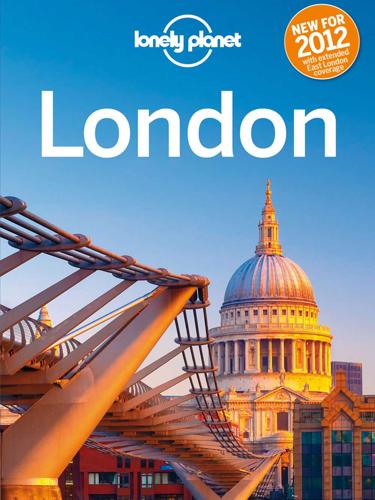
Lonely Planet London
by
Lonely Planet
Published 22 Apr 2012
Keep an eye out for the scale model of old London Bridge. Other highlights include Sailortown, a re-creation of the cobbled streets, bars and lodging houses of a mid-19th-century dockside community and nearby Chinatown, and more detailed galleries such as London, Sugar & Slavery, which examines the capital’s role in the transatlantic slave trade. There’s lots for kids here, including the hands-on Mudlarks gallery, where children can explore the history of the Thames, tipping the clipper, trying on old-fashioned diving helmets and even constructing a simple model of Canary Wharf. The museum has special exhibitions every few months, for which there is usually a charge.

Money Changes Everything: How Finance Made Civilization Possible
by
William N. Goetzmann
Published 11 Apr 2016
The costs were high, but clearly the British saw it as a vector into the lucrative South America trade. Although the principal business of the South Sea Company was slavery, Defoe—and perhaps his benefactor and governor of the company, Robert Harley—envisioned it as a means to extend Britain’s commercial presence in the Atlantic. The asiento not only gave the transatlantic slave trade to the company, it provided cover to set up factories in South America that could become colonies. The award of the asiento must have been particularly painful to Britain’s Dutch allies in the war. The Dutch West India Company (WIC) had colonies in Surinam and forts in West Africa, where they procured slaves.
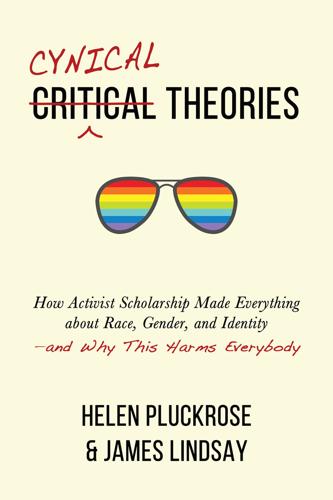
Cynical Theories: How Activist Scholarship Made Everything About Race, Gender, and Identity―and Why This Harms Everybody
by
Helen Pluckrose
and
James A. Lindsay
Published 14 Jul 2020
In late medieval England, references to “black” people often simply described the hair color of Europeans now regarded as “white.” While other factors may have contributed, race and racism as we understand them today probably arose as social constructions, made by Europeans to morally justify European colonialism and the Atlantic Slave Trade. European historians have tracked the rise of color-based prejudice over the early modern period, from roughly 1500 to 1800, and argued that prejudice on the grounds of religious difference gave way to racism—a belief in the superiority of some races over others—over the course of the seventeenth century.1 In order to justify the abuses of colonialism and the kidnapping, exploitation, and abuse of slaves, their victims had to be regarded as inferior or subhuman (even if they had converted to Christianity).
…
Before then, it was generally assumed that traits like skin color were determined largely environmentally, rather than genetically, although the related concepts in ancient Greek (genos) and Latin (genus) along with records from the Chinese and elsewhere indicate that descent wasn’t wholly neglected.2 Secondly, the constructed ideas of race were specifically used to justify the atrocities of European colonialism and the Atlantic Slave Trade. Third—and perhaps most importantly—this was done by emerging forms of scholarship in what we would now call the social sciences and natural sciences although they had neither separated clearly into the disciplines we would now call “anthropology,” “sociology,” and “biology” nor formed what we would now consider rigorous methods.
…
This is important because naturalism and science were rapidly becoming a knowledge-production, thus idea-legitimizing, methodology the likes of which the world had never seen. It is the legitimatizing authority of science that, ultimately, postmodernism rails against most vigorously. The rise of the sciences—and of an intellectual and political culture that accepted science as legitimate—together with the horrors of colonialism and the Atlantic Slave Trade, led to new social constructions of race. This, we hear from Theorists today, is the “scientific origin” of racism, which can be taken to mean that these discourses that misapplied very preliminary results from science allowed the first socially constructivist racists to come into existence.
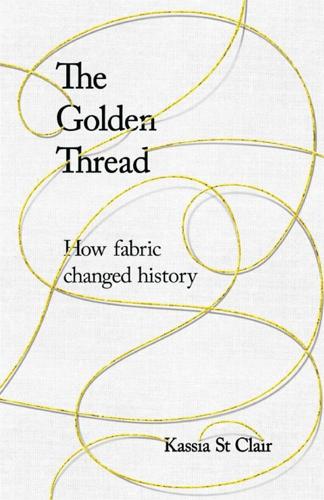
The Golden Thread: How Fabric Changed History
by
Kassia St Clair
Published 3 Oct 2018
From the workaday T-shirt and jeans of the beatniks to the most inflated thread-count sheets in luxury Tokyo hotels, cotton is a default fabric choice and one of the most common mediums through which we materially express our status and identity. This was also the case for the people taken from Africa to the Americas to be slaves: it gave them a means to claw back some measure of self-respect and individuality. Cotton – one of the cornerstones of the Atlantic slave trade – was simultaneously a medium through which identities were crafted and asserted.7 Cotton was a common crop throughout Africa. The great Andalusian Arab traveller Al-Bekri, who visited Mali as early as 1068, wrote that ‘Every house had its cotton bush . . . [and] cloths of fine cotton’ were traded by locals for salt, millet, fish, butter, indigo and meat.
…
By the time of the Civil War, many plantations had begun to turn their own cotton crop directly into textiles, rather than exporting it and letting British mills reap the profits. Planters-turned-mill owners could sell finished cloth far cheaper than that shipped over from England. Soon enough, as the domestic market began to grow and flourish, American cotton gained its own independence from British merchants and the Atlantic slave trade.42 The Canadian Tuxedo I wish I could invent something like blue jeans. Something to be remembered for. Andy Warhol, 1975 The city of Elko, Nevada held their fourth annual Silver State Stampede rodeo on 30 June 1951. It was a boisterous affair. The breeze carried competing scents of sugar, hot oil, horse sweat and bravado.
…
(ed.), The Library of Original Sources (Milwaukee: University Research Extension Co., 1907), 1: The Ancient World <http://sourcebooks.fordham.edu/ancient/hymn-nile.asp> [accessed 5 June 2017] ‘This Is Nike’s First Flyknit Apparel Innovation’, Nike News <https://news.nike.com/news/nike-flyknit-sports-bra> [accessed 9 January 2018] Thomas, Hugh, The Slave Trade: The History of the Atlantic Slave Trade 1440–1870 (London: Phoenix, 2006) Tillotson, Jason, ‘Eight Years Later, the Super Suit Era Still Plagues the Record Books’, Swimming World, 2018 <https://www.swimmingworldmagazine.com/news/eight-years-later-the-super-suit-era-still-plagues-the-record-books/> [accessed 10 January 2018] Tocqueville, Alexis de, Alexis de Tocqueville on Democracy, Revolution, and Society, ed. by John Stone and Stephen Mennell (Chicago: The University of Chicago Press, 1980) ‘Tombs of Meketre and Wah, Thebes’, The Metropolitan Museum of Art <http://www.metmuseum.org/met-around-the-world/?
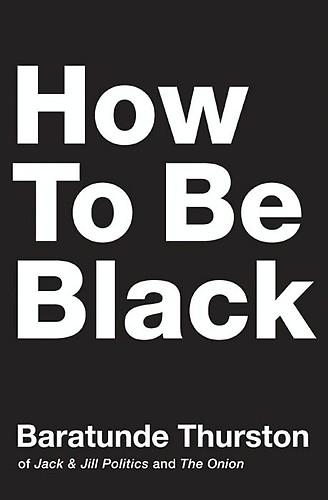
How to Be Black
by
Baratunde Thurston
Published 31 Jan 2012
These were the height of cool at the time. The baba, referring to the team logo on the front of the jacket, pointedly asked him, “Brother, why are you wearing that white man over your heart?” None of us thought of Starter jackets that way. We then all got a lecture on economic self-determination, trans-Atlantic slave trading, and the importance of symbolism. As I mentioned, I was in this program at the same time as I was enrolled at Sidwell Friends. I think my mother loved the idea of combining two extreme educational influences that would, in fact, check each other. Too much exposure to Sidwell’s culture, and I might forget where I came from, start to value things foreign to my upbringing, and end up a total disappointment to my community by joining the Republican Party—this was unlikely, given Sidwell’s Quaker origins, but still.
…
Senghor is also well known for creating the cultural-historical concept of Negritude, which sought to elevate the cultural history of Africa to the same level as that of Europe. In his own way, perhaps Senghor was living the tenets of a book we’d call How to Be African. The trip had more than met my expectations. I did buy a crapload of kente cloth at amazing prices. I ate local foods. I purchased “African art.” I returned to a site of the trans-Atlantic slave trade. I dodged aggressive street vendors who were so persistent as to follow us for a mile. But the absolute moment of magic occurred while my friends and I were swimming in the Atlantic Ocean. The waves were smooth and massive. I was in Africa looking west back to America, and I thought to myself, “I could die now, and be so very happy.”

There Is Nothing for You Here: Finding Opportunity in the Twenty-First Century
by
Fiona Hill
Published 4 Oct 2021
These were primarily clashes between residents and the police after heavy-handed arrests and stop-and-search operations that disproportionately targeted the Black and Afro-Caribbean communities. They erupted in large cities like London, Liverpool, and Bristol, which had once been tied to the Atlantic slave trade. The civic fabric of these British metropolises was shaped by the fortunes that prominent men and a wide range of investors made from centuries of trafficking in people. Private British companies, often under royal license, exported more than three million slaves from Africa (and initially poor white British men and women as indentured servants) to British colonies between 1640 and 1807.
…
They would never be British, even though they had once been subjects of the empire. Powell’s speech set the tone for a contentious decade ahead. The 1980s clashes were a major jolt to UK politics, similar to the paroxysms that sparked the movement against racial injustice in the United States in 2020. They highlighted mounting frustration with the legacy of the Atlantic slave trade and decades of entrenched racist attitudes in British society on top of the sharp uptick in national unemployment and the decline in public services. Everyone seemed to be competing for the UK’s ever-diminishing returns and taking it out on those perceived to be lower in the social pecking order.
…
Floyd’s death, his neck pressed beneath the knee of a police officer during a heavy-handed arrest, sparked nationwide protests against police brutality and highlighted the continued persecution of Black Americans decades after the civil rights movement. The United Kingdom was also swept up in the Black Lives Matter protests, as a younger generation of Brits contemplated the integral role the UK had played in the Atlantic slave trade and its own history of racism and heavy-handed policing. Again I was struck by how inadequate the government-level responses were to address this painful and complex issue, especially against the backdrop of the coronavirus, which hit Black and other minority communities hard in both countries.
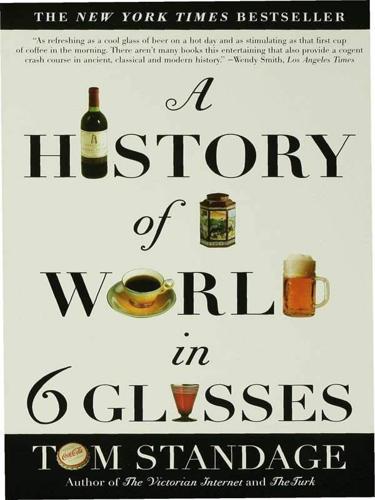
A History of the World in 6 Glasses
by
Tom Standage
Published 1 Jan 2005
The story of Charles the Bad is taken from Froissart, Chronicles of England, France, Spain and the Adjoining Countries. The account of the spread of distilled drinks into western Europe follows Forbes, A Short History of the Art of Distillation; Lichine, New Encyclopedia of Wines and Spirits; Braudel, Civilization and Capitalism; and Roueche, "Alcohol in Human Culture." For the origins of the Atlantic slave trade and its relationship to sugar cultivation, see Mintz, Sweetness and Lower; Thomas, The Slave Trade; Hobhouse, Seeds of Change; and Landes, The Wealth and Poverty of Nations. The role of spirits in the slave trade is discussed in Thomas, The Slave Trade; Mintz, Sweetness and Power; Harms, The Diligent; and Smith, "Spirits and Spirituality."
…
Le vin de ITtalie romaine. Rome: Ecole Franchise de Rome, 1986. Tchernia, Andre, and Jean-Pierre Brun. Le vin romain antique. Grenoble: Glenat, 1999. Tedlow, Robert. New and Improved: The Story of Mass Marketing in America. New York: Basic Books, 1990. Thomas, Hugh. The Slave Trade: The Story of the Atlantic Slave Trade, 1440-1870. New York : Simon & Schuster, 1997. Thompson, Peter. Rum Punch and Revolution. Philadelphia: University of Pennsylvania Press, 1999. Toussaint-Samat, Maguelonne. A History of Food. Cambridge, Mass.: Blackwell, 1992. Trager, James. The Food Chronology. New York: Owl Books, 1997.

Progress: Ten Reasons to Look Forward to the Future
by
Johan Norberg
Published 31 Aug 2016
Dick Harrison, a Swedish historian who has written a landmark history of slavery, says that he has yet to find an example of a civilization that did not at some point practise slavery. In academia and in popular debate we tend to focus on particular, modern varieties of slavery, such as the Atlantic slave trade, as I do here, but slavery has always been with us. Between thirty and sixty per cent of Africans were slaves before the Europeans took control of the slave trade there, taken by Arabs or other African tribes.3 In the Bible, slavery is considered a natural, established institution. In the Old Testament, we learn that ‘You may treat them as your property, passing them on to your children as a permanent heritance’ (Leviticus 25:45), and in the New Testament slaves are told to ‘obey your earthly masters with deep respect and fear.
…
He came to regret this, and concluded that Africans had the same individual rights as the Indians, but this horrible system survived him by more than 300 years. Unlike the indigenous population, African slaves could be continuously replaced by new slaves from Africa as they died, and they became an integral part of the American economy. Perhaps as many as ten million people were taken in the Atlantic slave trade, and the conditions were as brutal as the world had ever seen. Africans were kidnapped and marched to the coast, where they were imprisoned for a long time until a slave ship arrived. Some ten to twenty per cent died in overpacked ships on their way to America, chained by leg irons, handcuffs and neck collars.

England
by
David Else
Published 14 Oct 2010
Crumbling docks have been prettified, cutting-edge restaurants have sprung up, and hotels and designer bars occupy sites that were, until recently, derelict. But despite her new-found swagger, Bristol is also a city with a complex past; here you can explore the legacies of engineering genius Isambard Kingdom Brunel as well as those of the transatlantic slave trade. Mix in the work of guerrilla graffiti artist Banksy and a cutting-edge club scene and you get something real, and just a little rough around the edges. But there’s also a sense that this little sister’s time has come. HISTORY A small Saxon village at the confluence of the Rivers Frome and Avon became the thriving medieval Brigstow (later Bristol) as the city began to develop a European trade in cloth and wine.
…
Religious houses were established on high ground (now the suburb of Temple) above the marshes, and it was from here that celebrated ‘local hero’ John Cabot (actually a Genoese sailor called Giovanni Caboto) sailed to discover Newfoundland in 1497. Over the following centuries, Bristol became one of Britain’s major ports, and grew fat on the proceeds of the transatlantic slave trade (see boxed text), as well as from dealing in cocoa, sugar and tobacco. By the 18th century the city was suffering from competition, from Liverpool in particular. With large ships having difficulty reaching the city-centre docks, some trade moved to new ports at Avonmouth and Portishead instead.
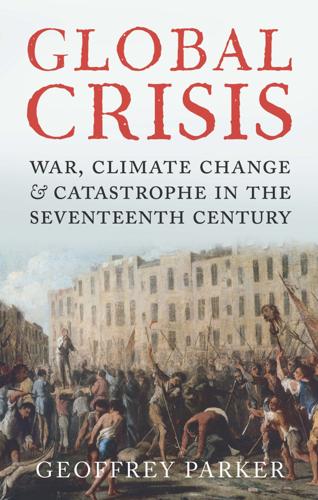
Global Crisis: War, Climate Change and Catastrophe in the Seventeenth Century
by
Geoffrey Parker
Published 29 Apr 2013
Unlike Americans and Europeans, however, African states did not engage in their ‘continual wars’ for land, but for people: African legal systems did not regard land as private property, so that ‘ownership of slaves in Africa was virtually equivalent to owning land in western Europe or China’.85 Until the mid-seventeenth century, when the ITCZ migrated southwards and the climate of West Africa deteriorated, most of these conflicts for slaves remained small scale and involved elite warriors who fought with javelins and clubs; but thereafter, rulers began to create much larger armies of slaves and mercenaries, armed first with bows and then with muskets, who fought over far larger areas and took far more captives. This change, seen by some subsequent historians as a ‘military revolution’, triggered an arms race in which rulers eager to acquire firearms for their defence traded them for slaves, feeding the dramatic expansion in the transatlantic slave trade as European demand for slaves to work their American sugar plantations escalated. Forced Migration: The African Slave Trade African slavery, which existed long before the Europeans arrived, took two forms. First, rulers used enslavement to remove troublemakers from society: those found guilty of (for example) adultery, witchcraft or theft might be fined more than they could pay and, if their kin-group would not help them, the offenders were sold as slaves (the sale price paid their fine).
…
A., From philosophy to philology: Intellectual and social aspects of change in Late Imperial China (Cambridge, MA, 1985) Elman, B. A., A cultural history of civil examinations in Late Imperial China (Berkeley, 2000) Elphick, R., Kraal and castle: Khoikhoi and the founding of white South Africa (New Haven and London, 1977) Eltis, D. and D. Richardson, Atlas of the transatlantic slave trade (New Haven and London, 2010) Elvin, M., The pattern of the Chinese past (Stanford, 1973) Elvin, M., ‘Market towns and waterways: the county of Shanghai from 1480 to 1910’, in G. W. Skinner, ed., The city in late imperial China (Stanford, 1977), 441–73 Elvin, M., ‘Female virtue and the state in China’, P&P, CIV (1984), 111–52 Elvin, M., ‘The man who saw dragons: science and styles of thinking in Xie Zhaozhe's Fivefold Miscellany’, Journal of the Oriental Society of Australia, XXV–XXVI (1993–4), 1–41 Elvin, M., ‘Unseen lives: the emotions of everyday existence mirrored in Chinese popular poetry of the mid-seventeenth to the mid-nineteenth century’, in R.
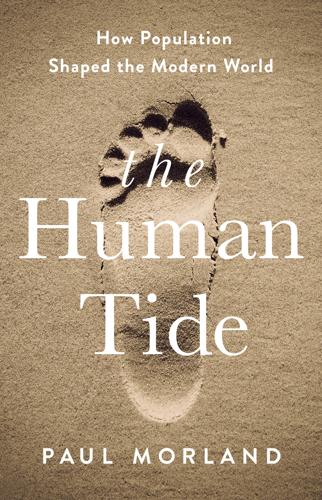
The Human Tide: How Population Shaped the Modern World
by
Paul Morland
Published 10 Jan 2019
Many of its critics would not be alive today, and certainly not enjoying rich, educated lives, were it not for scientific and technical advances from pharmaceuticals and fertilisers to soap and sewage systems. Yet this awesome achievement should not lead us to overlook the marginalisation and genocide perpetrated against non-European peoples, the decimation of indigenous populations from the Americas to Tasmania, the industrial-scale Atlantic slave trade which treated black people as disposable commodities. The rise in nineteenth-century life expectancy in Britain was a great achievement but the Irish famine should not be forgotten. The fall of child mortality across Europe in the early decades of the twentieth century is to be celebrated but does not compensate for the barbarity of two world wars and the Holocaust.
…
It is true that slavery had been part of almost every society, and true too that the British were pioneers in abolishing the slave trade and driving it out of the Atlantic. It is true that the Arab slave trade long pre-dated that of the Europeans and outlived it. Yet the sheer industrial scale of the Atlantic slave trade, not only to the US but also to the Caribbean and Brazil, continues to stagger. The value of the lives of those transported was callously disregarded, and in the US slavery lived on and was not abolished until 1865. Thirty years later, black labourers in Alabama still received barely 60% of the nutrition they required.38 The legacy survives, manifest in racial tensions in the US, and until recently in the underpopulation of Africa, although this is now fast reversing.
…
Sub-Saharan Africa has more than quintupled its population since the 1950s, from around 180 million to close on a billion. There is powerful evidence that at the earlier date Africa was under-populated, the victim not only of a difficult geography but of centuries of Arab slave-trading and a shorter but more intense period of European and American slaving, which left it denuded. The Atlantic slave trade alone is estimated to have taken 12 million people.32 The Islamic slave trade may have taken as many as 14 million, although some estimates are much lower.33 It is certainly striking to realise that in the continent as a whole in 1950 there were far less than half as many people as there were in Europe, a fact all the more striking when you realise that Africa is three times the size of Europe.

Lonely Planet London City Guide
by
Tom Masters
,
Steve Fallon
and
Vesna Maric
Published 31 Jan 2010
The tour begins on the 3rd floor (take the lift to the top) with the Roman settlement of Londinium – don’t miss the delightful Roman blue-glass bowl discovered in pieces at a building site in Prescot St E1 in 2008 – and works its way downwards through the ages. Keep an eye open for the scale mode of the old London Bridge and the Rhinebeck Panorama (1805–10), a huge mural of the upper Pool of London. An excellent new gallery called London, Sugar & Slavery examines the capital’s role in the transatlantic slave trade. Kids adore such exhibits as Sailortown (an excellent re-creation of the cobbled streets, bars and lodging houses of a mid-19th-century dockside community and nearby Chinatown) and the hands-on Mudlarks gallery, where five- to 12-year-olds can explore the history of the Thames, tipping the clipper, trying on old-fashioned diving helmets, learning to use winches and even constructing a simple model of Canary Wharf.

This Changes Everything: Capitalism vs. The Climate
by
Naomi Klein
Published 15 Sep 2014
Much of that money went directly into the coal-powered infrastructure of the now roaring Industrial Revolution—from factories to railways to steamships. These, in turn, were the tools that took colonialism to a markedly more rapacious stage, with the scars still felt to this day.48 Coal didn’t create structural inequality—the boats that enabled the transatlantic slave trade and first colonial land grabs were powered by wind, and the early factories powered by water wheels. But the relentless and predictable power of coal certainly supercharged the process, allowing both human labor and natural resources to be extracted at rates previously unimaginable, laying down the bones of the modern global economy.
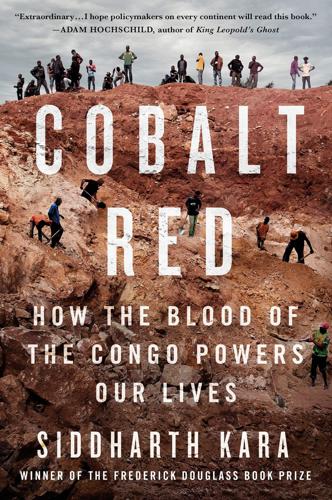
Cobalt Red: How the Blood of the Congo Powers Our Lives
by
Siddharth Kara
Published 30 Jan 2023
Within a few years, the Portuguese had built a slave-trading mission at Loango Bay. From the early 1500s until the end of the slave trade in 1866, one-fourth of the 12.5 million slaves stolen from Africa and shipped across the Atlantic would depart from Loango Bay. Throughout the entire period of the Atlantic slave trade, Europeans remained largely restricted to the coasts of Africa and had virtually no knowledge of the interior. The one person most responsible for opening pathways into the interior of Africa was David Livingstone. Born in Scotland in 1813, Livingstone traveled to Cape Town in 1841 to preach Christianity to the natives.
…
See also specific miners alternatives lacking for brute force used by CDM site interviews of cooperatives protecting dreams of equal humanity for exploitation of foreign mining companies and KCC entered by Lualaba Province production of money and death served to at Mutoshi model site négociants buying cobalt from in open-air pit mines Philippe’s concern for raffia sacks filled by at Shabara mine soul-wrenching misery of TFM digging by Tilwezembe production of Tilwezembe toiling by tunnel collapses suffered by wages of wall collapse injuries of women as working conditions of artisanal mining children injured in under COMAKAT in mining industry Tilwezembe system of ASM. See artisanal and small-scale mining Association Internationale du Congo (AIC) Atlantic slave trade Augustin (translator) Awilo (child miners) Balumuene, François Nkuna batteries Baudouin (king of Belgium) Beko (Muteba’s brother) Belgian Congo Benz, Karl Berlin Conference birth defects Bisette (Raphael’s mother) border fence Boss Chen (mining boss) Boss Chu (mining boss) Boss Peng (mining boss) Boss Xi (mining boss) Bredenkamp, John Bronze Age budget, DRC’s national buried alive California gold rush Cameron, Verney Lovett cancer capital expenditures capitalists, enterprising cargo trucks minerals transported by for mining activity riots blocking Casement, Roger The Casement Report (Casement) cathodes CATL Co.

Globish: How the English Language Became the World's Language
by
Robert McCrum
Published 24 May 2010
Chapter 7: ‘The Audacity of Hope’ 125 the worst possible circumstances: Randall Kennedy, Nigger: The Strange Career of a Troublesome Word (New York, 2003), p. 3. 125 I couldn’t have the assumptions’: V.S. Naipaul, Reading and Writing: A Personal Account (New York, 2000), p. 37. 126 out of this horrifying traffic: See J. L. Dillard, Black English (New York, 1973). 127 Hawkins enjoyed the approval of the queen: Hugh Thomas, The Slave Trade: The History of the Atlantic Slave Trade, 1440-1850 (London, 1997), p. 156. 128 Caliban, the demonic slave: The Tempest, Act 2, scene 2, line 197, and Act 1, scene 2, line 363. 129 ‘by having some of every Sort on board’: Dillard, Black English, pp. 73-93. See also Dwight Bolinger, Language: The Loaded Weapon (London, 1980). 129 ‘not a house in Boston’: Thomas, Slave Trade, p. 207. 129 a sought-after prize, the Asiento: ibid., p. 237. 130 Defoe had been imprisoned for debt: ibid, p. 236. 130 the conventions of pidgin and creole: Dillard, Black English p. 125. 130 Pope asked the essential question: Thomas, Slave Trade, p. 452. 131 She helped prepare literary people’s minds: ibid., pp. 452-3. 131 ‘compass the earth and seas’: Linda Colley, The Ordeal of Elizabeth Marsh (London, 2007), pp. 134-6. 131 used to read prayers twice a day: Thomas, Slave Trade, p. 307. 131 was taken up by the king: ibid., p. 465. 132 years of legal wrangling: Simon Schama, Rough Crossings: Britain, the Slaves and the American Revolution (London, 2005), p. 46. 132 200 people at a London tavern: ibid., p. 63. 132 Until 1807, when slavery was abolished: Thomas, Slave Trade, p. 488. 133 Benjamin Franklin attempted a version: Dillard, Black English, pp. 86-9. 133 the true liberators: Schama, Rough Crossings, p. 65. 133 ‘have a wonderful art of communicating intelligence among themselves’: quoted ibid., p. 74. 133 Black preachers were already telling their congregations: ibid., p. 95. 134 ‘the greatest exodus from bondage’: ibid., p. 108. 134 ‘we should beware how we forfeited’: quoted in Linda Colley, Britons: Forging the Nation 1707-1837 (London, 2005), p. 353. 135 ‘a negro becomes a freeman’: ibid., p. 354. 135 ‘What to the slave is the Fourth of July?’
…
The CIA and the Cultural Cold War (London, 1999). Robert and Isabelle Tombs, That Sweet Enemy: The French and the British from the Sun King to the Present (London, 2006). A. J. P. Taylor, English History 1914–1945 (Oxford, 1965). —, The Origins of the Second World War (New York, 1961). Hugh Thomas, The Slave Trade: The History of the Atlantic Slave Trade, 1440–1870 (London, 1997). Barbara Tuchman, The Proud Tower (New York, 1965). —, A Distant Mirror (New York, 1978). Edward Vallance, A Radical History of England (London, 2009). Nury Vittachi, Mr Wong Goes West (Crows Nest, NSW, 2008). James Walvin, A Short History of Slavery (London, 2007).
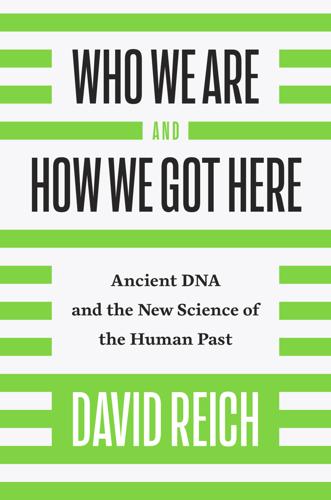
Who We Are and How We Got Here: Ancient DNA and the New Science of the Human Past
by
David Reich
Published 22 Mar 2018
Most were sold in South America or the Caribbean, where they were often worked to death. Around 5 to 10 percent were brought to what became the United States. Following the first recorded sale of slaves by Portuguese traders in 1526, the rate of importation into the New World increased, plateauing at around seventy-five thousand per year until the trans-Atlantic slave trade was outlawed—in the British colonies in 1807, in the United States in 1808, and in Brazil in 1850. Today there are hundreds of millions of people in the Americas with African ancestry, the largest numbers in Brazil, the Caribbean, and the United States. The mixing of three highly divergent populations in the Americas—Europeans, indigenous people, and sub-Saharan Africans—that began almost five hundred years ago continues to this day.
…
Tishkoff et al., “Convergent Adaptation of Human Lactase Persistence in Africa and Europe,” Nature Genetics 39 (2007): 31–40. 44. Ralph and Coop, “Parallel Adaptation.” 10 The Genomics of Inequality 1. Peter Wade, Race and Ethnicity in Latin America (London and New York: Pluto Press, 2010). 2. Trans-Atlantic Slave Trade Database, www.slavevoyages.org/assessment/estimates. 3. K. Bryc et al., “The Genetic Ancestry of African Americans, Latinos, and European Americans Across the United States,” American Journal of Human Genetics 96 (2015): 37–53. 4. Piers Anthony, Race Against Time (New York: Hawthorn Books, 1973). 5.
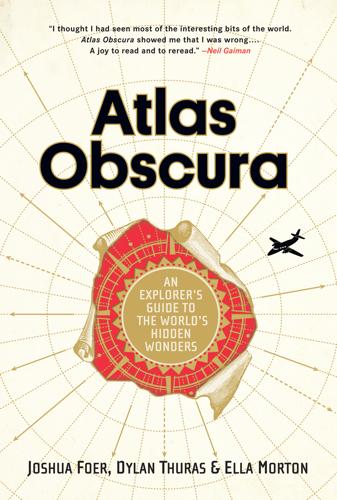
Atlas Obscura: An Explorer's Guide to the World's Hidden Wonders
by
Joshua Foer
,
Dylan Thuras
and
Ella Morton
Published 19 Sep 2016
Dougga Twenty temples, an amphitheater, and a chariot-racing circle are among the highlights at this well-preserved ancient Roman town. West Africa BENIN Ganvie GANVIE, ATLANTIQUE In the 17th and 18th centuries, a portion of present-day Benin was known as the Kingdom of Dahomey. Established by the Fon people, a West African ethnic group, Dahomey became a major part of the Atlantic slave trade following the arrival of the Portuguese. Fon hunters worked with Portuguese slave traders, traveling around the region hunting for people to sell. One of the ethnic groups they targeted was the Tofinu, who lived in what is now central Benin. Knowing that the Fon’s religious beliefs prevented them from venturing into bodies of water, the Tofinu fled their homes and established Ganvie, a community of bamboo huts built atop stilts on Lake Nakoué.
…
SIERRA LEONE Bunce Island SOUTHERN PROVINCE During the 18th century, the castle at Bunce Island in the Sierra Leone River was a thriving trade hub. European and African traders visited the island to stock up on guns, gold, ivory, and beeswax, but all these products were peripheral to the main activity: the buying and selling of people. Bunce Island was one of about 40 human trading posts in West Africa during the Atlantic slave trade. From 1668 until 1807, its castle served as a warehouse for tens of thousands of West Africans awaiting transport to America and the West Indies. Rice plantation owners in South Carolina and Georgia favored slaves from Bunce Island due to its location on West Africa’s “Rice Coast,” which stretched from what is now Senegal to Liberia.
…
Historic Voodoo Museum NEW ORLEANS Though all its offerings are crammed into just two dusty rooms and a hallway, the New Orleans Historic Voodoo Museum leaves a lasting impression. Founded in 1972 by local artist Charles Gandolfo, the museum focuses on Louisiana voodoo, which evolved from traditional West African vodun. West Africans brought voodoo to Louisiana during the trans-Atlantic slave trade of the early 18th century. By the mid-19th century, the culture of New Orleans had begun to transform the spiritual practice. Voodoo spirits merged with Catholic saints, rituals gave way to processions, and Creole voodoo queens like Marie Laveau rose to prominence. In 1932, a poorly acted, hastily shot horror movie—White Zombie—featured Bela Lugosi as an evil Haitian voodoo master with a crew of murderous zombies.
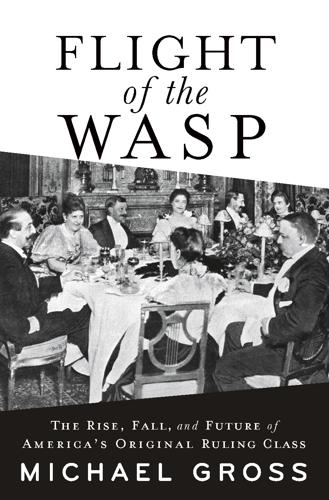
Flight of the WASP
by
Michael Gross
He told the son of a friend that whenever “two distinct races have occupied the [same] soil,” they would divide into “master and slave.”98 He considered the continued oppression of enslaved Africans a matter of life and death for his fellow southern planters, at least so long as it remained profitable.99 The founders didn’t go that far, but they had made huge concessions to ensure the approval of the Constitution by the slaveholders of the South, starting with its never mentioning the practice of slavery. In addition to the three-fifths rule, the document required that runaway slaves be returned to their owners, enshrined the electoral college as a pro-slavery mechanism, prohibited Congress from outlawing the Atlantic slave trade for two decades, and gave the government the power to suppress slave rebellions. Though the delegates to the Constitutional Convention (almost half of whom owned slaves) felt, with some justification, that they had crafted a deliberately ambiguous document in order to win agreement, their Constitution both acknowledged and approved of the continuation of human bondage.h Perhaps in part because it was so protected, Randolph felt he could oppose the slave trade.
…
Though the plan’s model had been developed by his fellow Virginian Jefferson, Randolph feared that the ability to represent the common interest of constituents would inevitably be lost as the country grew. But again, he was on the losing side of history. A month after that apportionment bill passed, he left for a trip to England, where he spoke against the Atlantic slave trade, and stayed through much of 1822. After joining Madison’s cabinet, James Monroe had become a proponent of all the policies Randolph despised, but when Monroe eventually succeeded Madison as president, Randolph wouldn’t oppose him in any sustained way for many years, despite the fifth president’s support for internal improvements and tariff increases.
…
When it was renegotiated on terms slightly more favorable to the Creek, other nations in Georgia and Mississippi were inspired to take a harder line against the white usurpers. The difficulty of moving a mass of people—some sixty thousand Native Americans in the South alone—was immense. Unlike slaves, Native Americans weren’t profitable to anyone, so the cost of their relocation would be borne by government, not plantation owners. But after the Atlantic slave trade ended in 1808, domestic slavers had developed a robust business in moving their human goods. In the 1820s, nearly a hundred thousand Blacks were trafficked into the Deep South plantation belt, so clearly a forced migration could be accomplished. And many southerners would brook no interference from the hypocritical North, where, they argued, the indigenous population had been mostly exterminated and was otherwise the subject of harsh mistreatment and legal discrimination.

Age of Discovery: Navigating the Risks and Rewards of Our New Renaissance
by
Ian Goldin
and
Chris Kutarna
Published 23 May 2016
.* Beginning in the 1520s, the rest of Europe experienced another flow of displaced people—this time, as the result of Luther’s Reformation. That violent division of Christendom into Catholics and Protestants produced migration on a scale that Europe had not seen since the fall of the western Roman Empire in the fifth century, and would not see again until the First World War.52 The most infamous mass migration was the Atlantic slave trade, which began within a few years of Columbus’s discovery of the New World and which transplanted over 11 million Africans to the Americas by the mid-nineteenth century. As with the seaborne goods trade, this grim business started off modestly. Some 400,000 Africans had been delivered by the year 1600, forced to join some 250,000 Europeans in their New World colonies.53 But the inhumanity had begun and would balloon in the centuries to come.
…
United Nations Department of Economic and Social Affairs, Population Division (2014). World Urbanization Prospects: The 2014 Revision. New York: United Nations. 51. Ibid. 52. MacCulloch, Diarmaid (2003). Reformation: Europe’s House Divided, 1490–1700. London: Allen Lane, pp. 60, 648–649. 53. Frankel, Neil A. (2008). “Facts and Figures.” The Atlantic Slave Trade and Slavery in America. Retrieved from www.slaverysite.com/Body/facts%20and%20figures.htm. 54. World Bank (2013). “Bilateral Migration Matrix 2013.” Migration & Remittances Data. Retrieved from econ.worldbank.org. 55. Manyika, James, Jacques Bughin, et al. (2014). Global Flows in a Digital Age.
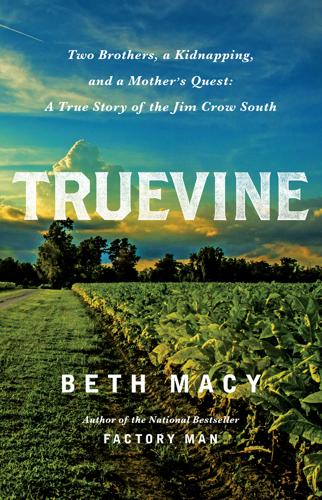
Truevine: Two Brothers, a Kidnapping, and a Mother's Quest: A True Story of the Jim Crow South
by
Beth Macy
Published 17 Oct 2016
As Barnes tells it, an early manager—Stokes, perhaps—had been traveling with the Muse brothers in a small midwestern town, exhibiting them under timeworn names that didn’t adequately cash in on the public’s fascination with all things exotic and savage, from the Monkey Men to the Ministers from Dahomey, an African kingdom (now Benin) that had been an important location in the Atlantic slave trade. Cast as albinos from Africa, the Muses did nothing but stand there blankly while a lecturer made up wild stories about them, punctuated with a few kernels of geographic truth. When spoken to, they replied in gibberish, as instructed. Shelton “didn’t know how to exploit them,” Barnes declared.
…
Shelton’s life after circus: Author interviews, George Nicely and Bob Shelton, and city directories for Petersburg, VA, 1952 and 1955; Candy and Lillian Shelton lived in Centralia, VA, in the early to mid-1950s. Shelton lost touch with extended family: Author interviews, Don Nicely and Bob Shelton, May 10, 2015. Ministers from Dahomey: A major center in the Atlantic slave trade, Dahomey was taken over by the French in 1894 and, after independence, was renamed Benin. the sideshow has mostly come and gone: Robert Bogdan, Freak Show: Presenting Human Oddities for Amusement and Profit (Chicago: University of Chicago Press, 1988), 2, 280. Shelton’s death: Florida Death Index, 1877–1998, ancestry.com.
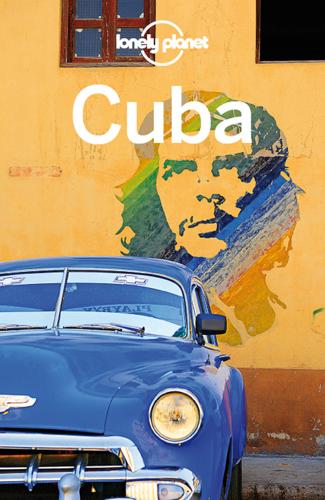
Cuba Travel Guide
by
Lonely Planet
El Barrio Chino NEIGHBORHOOD One of the world’s more surreal Chinatowns, Havana’s Barrio Chino is notable for its gaping lack of Chinese people, most of whom left as soon as a newly inaugurated Fidel Castro uttered the word ‘socialismo.’ Nevertheless, it’s worth a wander on the basis of its novelty and handful of decent restaurants. The first Chinese arrived as contract laborers on the island in the late 1840s to fill in the gaps left by the decline of the transatlantic slave trade. By the 1920s Havana’s Chinatown had burgeoned into the biggest Asian neighborhood in Latin America, a bustling hub of human industry that spawned its own laundries, pharmacies, theaters and grocery stores. The slide began in the early 1960s when thousands of business-minded Chinese relocated to the US.
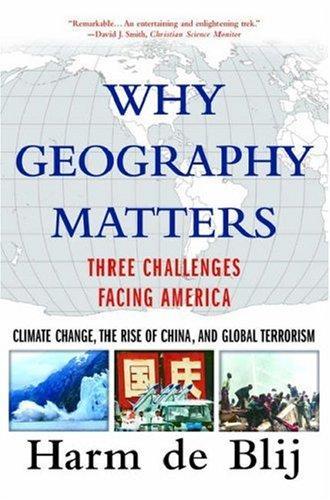
Why geography matters: three challenges facing America : climate change, the rise of China, and global terrorism
by
Harm J. De Blij
Published 15 Nov 2007
Anthropologists reckon that the impact of this terrible, catastrophic event can still be read in Africa's cultural landscapes. Not only were entire areas depopulated by the slave raiders as well as through the fighting that attended the campaign, but the price put on human heads set African against African and WHY GEOGRAPHY MATTERS THE ATLANTIC SLAVE TRADE VOLUME AND DESTINATIONS 1701-1810 Fig. 12-1 rekindled ethnic animosities. Children were orphaned or abandoned by the hundreds of thousands, crops lay unharvested, villages stood deserted if they were not burned. West Africa's forest-to-desert trade collapsed, the Islamized interior states broke up, and everywhere the social order disintegrated.
…
J. de Blij, 1977. African Survey. New York: Wiley. Charlemagne, 2003. "Europe's Population Implosion." Economist, 7/19: 42. Clarke, R. A., 2004. Against All Enemies. New York: Free Press, 40. Cohen, J. E., 2003. "Human Population: The Next Half Century." Science, 302: 14, 1172. Curtin, P., 1969. The Atlantic Slave Trade. Madison: University of Wisconsin Press. Cutter, S. L., D. B. Richardson, T. J. Wilbanks, Eds., 2003. The Geographic Dimensions of Terrorism. New York: Routledge. Davis, C. S., 2004. Middle East for Dummies. Hoboken: John Wiley & Sons. Davis, S., 2002. The Russian Far East: The Last Frontier.
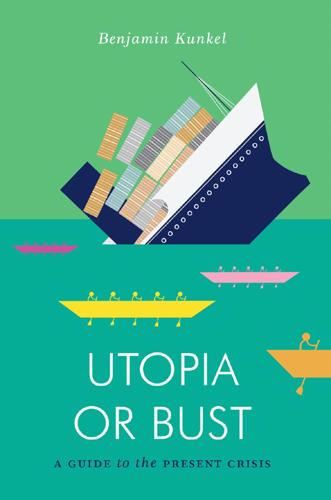
Utopia or Bust: A Guide to the Present Crisis
by
Benjamin Kunkel
Published 11 Mar 2014
In Graeber’s book, a certain literalism about money, an unblushing faith in its capacity to determine or discover genuinely equivalent values, is the mark—or blemish—of commercial economies. The most extreme example is slavery. The buying and selling of people is an ancient practice, yet in the Atlantic slave trade Graeber sees the collision of several of his human economies with a late-model commercial one. Long before trade in human chattel, the Tiv and the Lele possessed the concepts, respectively, of “flesh-debts” and “debt pawns.” A bridegroom might owe his in-laws a sister, or a man who had escaped death owe his rescuer a future son.
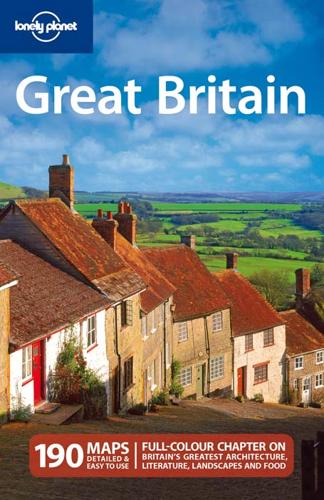
Great Britain
by
David Else
and
Fionn Davenport
Published 2 Jan 2007
Crumbling docks have been prettified, cutting-edge restaurants have sprung up, and hotels and designer bars occupy sites that were, until recently, derelict. But despite her newfound swagger, Bristol is also a city with a complex past; here you can explore the legacies of engineering genius Isambard Kingdom Brunel as well as those of the transatlantic slave trade. Mix in the work of guerrilla graffiti artist Banksy and a cutting-edge club scene and you get something real, and just a little rough around the edges. But there’s also a sense that this little sister’s time has come. Return to beginning of chapter HISTORY A small Saxon village at the confluence of the Rivers Frome and Avon became the thriving medieval Brigstow (later Bristol) as the city began to develop its trade in cloth and wine with mainland Europe.
…
Return to beginning of chapter HISTORY A small Saxon village at the confluence of the Rivers Frome and Avon became the thriving medieval Brigstow (later Bristol) as the city began to develop its trade in cloth and wine with mainland Europe. Over the following centuries Bristol became one of Britain’s major ports, and grew wealthy on the proceeds of the transatlantic slave ‘trade’. By the time these shipments of human cargo were finally abolished in the British Empire in 1807, it’s thought 500,000 Africans had been enslaved by Bristol merchants – one fifth of all people kidnapped and sold into slavery by British vessels. During the 18th and 19th centuries Bristol became first an important hub for shipbuilding, then of the Great Western Railway – you can still see that legacy in the creations of Victorian engineering genius, Isambard Kingdom Brunel (look out for his ships, bridges and train lines).
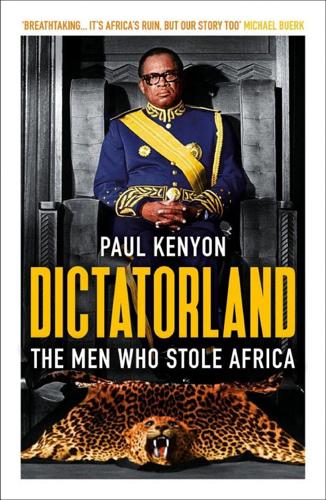
Dictatorland: The Men Who Stole Africa
by
Paul Kenyon
Published 1 Jan 2018
At glittering ceremonies in Stockholm, London and the US, emissaries of Saro-Wiwa had accepted human rights awards on his behalf, reading out acceptance speeches he had composed in his prison cell. No, he wouldn’t be able to attend personally, due to the murder charge, but he was humbled nevertheless. ‘We are face to face with a modern slave trade,’ he wrote to one, ‘similar to the Atlantic slave trade in which European merchants armed African middlemen to decimate their people and destroy their societies… As in the Atlantic slave trade, the multinational companies reap huge profits.’ At 9.30 a.m., a Black Maria arrived at the Bori military camp, and Saro-Wiwa, together with his co-defendants, climbed inside. The streets were unusually quiet for that time in the morning.
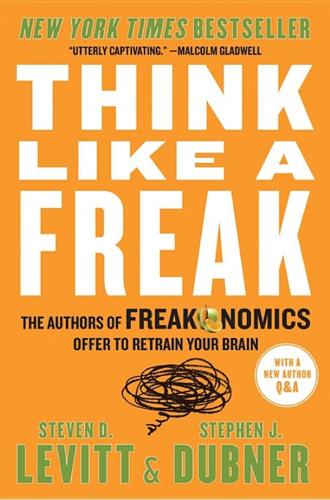
Think Like a Freak
by
Steven D. Levitt
and
Stephen J. Dubner
Published 11 May 2014
O’Donnell et al., “Urinary Sodium and Potassium Excretion and Risk of Cardiovascular Events,” The Journal of the American Medical Association 306, no. 20 (November 23/30, 2011); Michael H. Alderman, “Evidence Relating Dietary Sodium to Cardiovascular Disease,” Journal of the American College of Nutrition 25, no. 3 (2006); Jay Kaufman, “The Anatomy of a Medical Myth,” Is Race “Real”?, SSRC Web Forum June 7, 2006; Joseph E. Inikori and Stanley L. Engerman, The Atlantic Slave Trade: Effects on Economies, Societies and Peoples in Africa, the Americas, and Europe (Duke University Press, 1998); and F. C. Luft et al., “Salt Sensitivity and Resistance of Blood Pressure. Age and Race as Factors in Physiological Responses,” Hypertension 17 (1991). / 75 “An Englishman Tastes the Sweat of an African”: Courtesy of the John Carter Brown Library at Brown University.
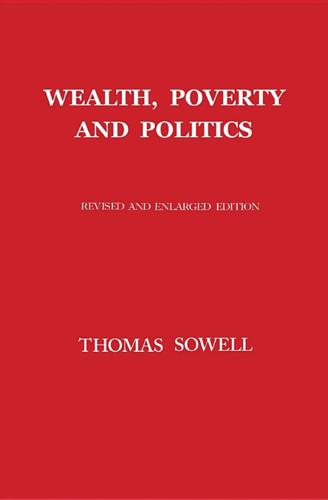
Wealth, Poverty and Politics
by
Thomas Sowell
Published 31 Aug 2015
Government Printing Office, 1982), p. 16; François Renault, “The Structures of the Slave Trade in Central Africa in the 19th Century,” The Economics of the Indian Ocean Slave Trade in the Nineteenth Century, edited by William Gervase Clarence-Smith, pp. 146–165; Paul E. Lovejoy and Jan S. Hogendorn, “Slave Marketing in West Africa,” The Uncommon Market: Essays in the Economic History of the Atlantic Slave Trade, edited by Henry A. Gemery and Jan S. Hogendorn (New York: Academic Press, 1979), pp. 221–223, passim; Martin A. Klein, “Introduction: Modern European Expansion and Traditional Servitude in Africa and Asia,” Breaking the Chains, edited by Martin A. Klein, p. 10; James F. Searing, West African Slavery and Atlantic Commerce: The Senegal River Valley, 1700–1860 (Cambridge: Cambridge University Press, 1993), p. 69. 29.
…
Alpers, Ivory and Slaves: Changing Pattern of International Trade in East Central Africa to the Later Nineteenth Century (Berkeley: University of California Press, 1975), pp. 191–193; R.W. Beachey, The Slave Trade of Eastern Africa, pp. 182, 183, 189. 30. Robert C. Davis, Christian Slaves, Muslim Masters: White Slavery in the Mediterranean, the Barbary Coast, and Italy, 1500–1800 (New York: Palgrave Macmillan, 2003), p. 23; Philip D. Curtin, The Atlantic Slave Trade: A Census (Madison: University of Wisconsin Press, 1969), pp. 72, 75, 87. 31. Jean W. Sedlar, East Central Europe in the Middle Ages, 1000–1500 (Seattle: University of Washington Press, 1994), p. 97. 32. Ehud R. Toledano, The Ottoman Slave Trade and Its Suppression: 1840–1890 (Princeton: Princeton University Press, 1982), pp. 18, 59, 168, 171, 188, 189. 33.
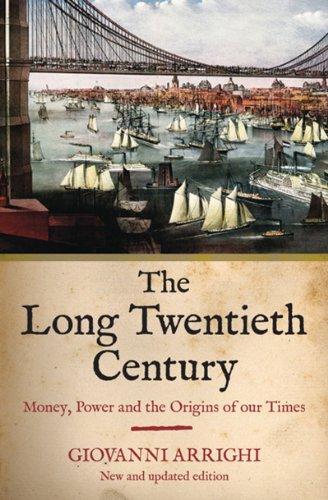
The Long Twentieth Century: Money, Power, and the Origins of Our Times
by
Giovanni Arrighi
Published 15 Mar 2010
“These companies,” we are told, though they may, perhaps, have been useful for the first introduction of some branches of commerce, by making, at their own expence, an experiment which the state might not think prudent to make, have in the long-run proved, universally, either burdensome or useless, and have either mismanaged or confined the trade. (Smith 1961: II, 255) Ironically, and tragically for the peoples of Africa, the earliest beginnings of the nineteenth-century free trade movement can be traced to the Atlantic slave trade. As previously noted, the WIC pioneered the triangular trade that boosted the slave trade to historically new heights, but could not forestall the entry of competitors as the VOC had been able to do in the East Indies trade in fine spices. By the late seventeenth century, an English company, the Royal African Company (chartered in 1672), had THE LONG TWENTIETH CENTURY 253 become the most powerful and most effective of all European companies formed exclusively for the African trade.
…
Index Page numbers Followed by “F” indicate figures. 9/1 1 terrorist attacks, 384 Abu-Lughod, Janet, 11, 35, 88, 117 accumulation: primitive accumulation, 14, 243, 373; processes 0F, 4; strategies and structures 0F, 224; See also regimes 0F accumulation; systemic cycles 0F accumulation Acheson, Dean, 288, 305 Adair, Serjeant, 268 Adam Smit/o in Beijing (Arrighi), 379, 382, 385 Afghanistan, 330-31, 333 AFrica, 11, 124, 152, 252, 341, 342 Age 0F Capital, 307 Age 0F Gen0ese (1557-1627), 128, 166, 173-74, 193-94 Age 0F the Rothschilds (1866-1931), 17374; See also Rothschild family agriculture, 183-84, 300-301 Akamatsu, Kaname, 344 Amboyna, 158 American Civil War (1860-65), 71, 300, 302-4 American Revolution (1776), 61, 66, 147, 163 Amin, Samir, 289-90, 342 Amsterdam: as central entrepot 0F world trade and commerce, 141, 143-44, 147, 155, 201-2, 206, 209, 215; commercial Fortunes 0F, 135; Enlightenment in, 139; population (1585-1622), 208; position in European world-economy, 141, 163, 167, 195; production and, 183 Amsterdam Bourse, 142, 144, 161-62 anarchy, 31, 32, 64 Anderson, Perry, 38, 180, 181, 202 Anglo-Dutch War (1781-84), 147 Anglo-French Hundred Years War (13371453)» 99, 130, 200, 222 Anglo-Saxon confrontation (1588), 191 Anti-Corn Law Bill (1846), 265 anti-imperialism, 71 anti—market, 21, 26 Antwerp, 83, 131, 134, 152, 195, 207 Aragon, 118-19 Arkwright, Richard, 268 Arrighi, Giovanni, 379, 381, 382, 383, 385 Asia, 36, 342, 358; See also East Asia; South Asia; Southeast Asia asientos, 134, 187 Atlantic slave trade, 252-53 Atlantic trade, triangular, 204, 206 Australia, 343 Baldridge, Malcom, 18 Balibar, Etienne, 32-33 Baltic trade, 135, 137, 155 Bandung,33l Bank 0F England, 216, 217, 322 banking networks, 169-70 banks, 323, 324; See also speczfic ban/es Bantan sultanate, 158-59 Bardi and Peruzzi (firms), 103, 107-8, 127 Barnet, Richard, 82 Barrat Brown, Michael, 180, 181 Batavian Revolution, 147 beautiful times (1896-1914), 178 belle epoques: Edwardian era, 277; European, 334-35; 0F finance capitalism, 373; US, 246, 325, 364, 384; Western, 334-35 Bengal, 257 Bergesen, Albert, 8 Bergsten, Fred, 366, 367 bills ofexchange, 131-32, 134, 156 Birnbaum, Eugene, 312 Bisenzone Fairs, 83, 134, 174, 217, 252 Bismark, Otto von, 273 Black Death, 103, 108 405 406 THE LONG TWENTIETH CENTURY Black Sea, 116-118 Blackburn, Robin, 50 Bloch, Marc, 42 Boli, John, 78 bourgeoisies, 122-23, 186, 187-88, 277 Bousquet, Nicole, 8 Boxer, Charles, 178 Boyer-Xambeau, M.
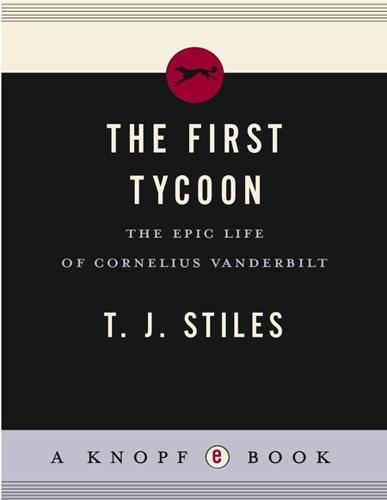
The First Tycoon
by
T.J. Stiles
Published 14 Aug 2009
In February 1820, it sealed shut New York's North River piers and prevented the tall-masted vessel from departing. No one could free it. On board, Dr. J. M. Scott McKnight tended to the shivering passengers: some fifty black men and women, all skilled artisans bound for Africa to prepare settlements for rescued slaves. Technically a federal expedition against the transatlantic slave trade, it was a thinly disguised project of the American Colonization Society which planned to ship freed slaves to Africa. Vanderbilt stepped forward and said he could cut the Elizabeth loose in one night, and he'd do it for $100. With the Mouse and the Bellona undergoing winter refitting, he had been spending much of his time in New York, where he and Sophia still lived (now in a low wooden building at 58 Stone Street, a twisting, crowded lane close to the waterfront).
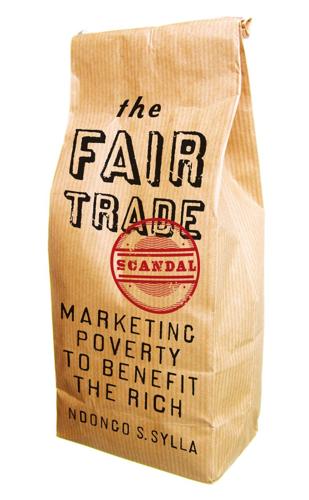
The Fair Trade Scandal: Marketing Poverty to Benefit the Rich
by
Ndongo Sylla
Published 21 Jan 2014
The Impact of Agricultural Trade Policies on Developing Countries (Washington, DC: International Food Policy Research Institute). Doussin, Jean-Pierre (2009) Le Commerce équitable [Fair Trade] (Paris: PUF, Que sais-je ?). Drescher, Seymour (1992) ‘The Ending of Slave Trade and the Evolution of European Scientific Racism’, in Inikori, Joseph E. and Engerman, Stanley L. (eds) The Atlantic Slave Trade: Effects on Economies, Societies and Peoples in Africa, the Americas and Europe (Durham, NC: Duke University Press, 361–96). Duménil, Gérard and Lévy, Dominique (2011) The Crisis of Neoliberalism (Cambridge, MA: Harvard University Press). Elliott, Kimberly A. ( 2010) Open Markets for the Poorest Countries: Trade Preferences that Work.
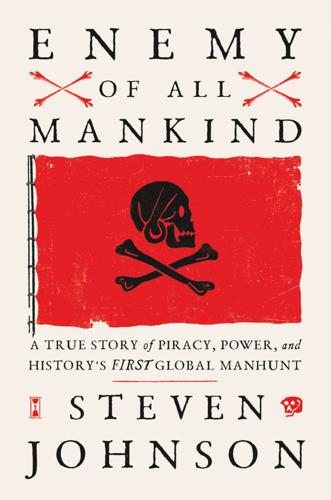
Enemy of All Mankind: A True Story of Piracy, Power, and History's First Global Manhunt
by
Steven Johnson
Published 11 May 2020
British history often conveniently neglects the sheer scale of the company’s involvement in the slave trade during this period, focusing instead on the fact that slavery was largely abolished in England itself—if not in her colonies—by the late 1700s. But as the historian David Olusoga observes, “the Royal African Company transported more Africans into slavery than any other British company in the whole history of the Atlantic slave trade . . . around a hundred and fifty thousand men, women and children passed through the company’s coastal fortresses on their way to lives of miserable slavery.” According to the RAC agent Phillips, Henry Every had built a career for himself in the early 1690s as an interloper, working outside the official monopoly of the RAC, sometimes capturing the English traders themselves along with their African captives.

Fully Automated Luxury Communism
by
Aaron Bastani
Published 10 Jun 2019
This, alongside the delivery of UBS, would underpin similar leaps forward in health, education and housing, enabling meaningful development like never before and helping sever the chains of economic dependence that have characterised centuries of plunder and exploitation. Amid recent calls for reparations to atone for the historic injustices of the Atlantic slave trade and European empires, a One World Tax would turn a timely idea into a concrete demand. Wealthier countries must pay for the clean energy of poorer ones. 11 Reforging the Capitalist State It measures everything, in short, except that which makes life worthwhile. Robert Kennedy Money for Nothing While the state guaranteeing the provision of certain goods has a long history, particularly in the twentieth century, it is the idea of a Universal Basic Income – the ‘UBI’ – which seems to have attracted greater curiosity in recent years.
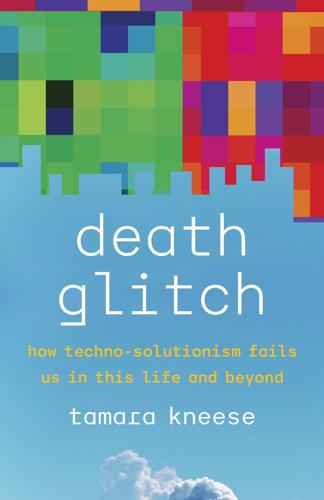
Death Glitch: How Techno-Solutionism Fails Us in This Life and Beyond
by
Tamara Kneese
Published 14 Aug 2023
For much of the late nineteenth and early twentieth centuries, the big names in American life insurance—Prudential, Metropolitan Life, John Hancock—negotiated death through a chain of bureaucrats, back-office workers (often women), and tabulator technologies.5 Insurance companies managed the dead as data through punch cards and massive physical storage facilities, using mortality tables and other pre-digital algorithmic instruments to predict death and subsequently profit. The insurance industry was inextricably linked to the trans-Atlantic slave trade and the eugenics movement; life insurance accounts for mortality, but it also categorizes some lives as riskier or more valuable than others.6 Portrayal of the Metropolitan Life Insurance Company Filing Section, circa late nineteenth century (Courtesy of MetLife Corporate Archives) Starting in the mid-nineteenth century, planning for one’s own death became a mark of virtue as the working classes adopted industrial insurance policies to protect their families from ruin after a breadwinner’s death.7 Insurance was associated not just with better life expectancies and maximized productivity but with spirituality.
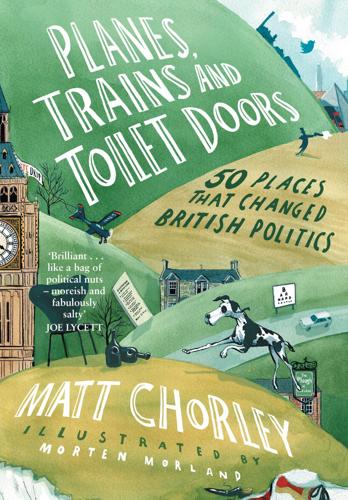
Planes, Trains and Toilet Doors: 50 Places That Changed British Politics
by
Matt Chorley
Published 8 Feb 2024
Unlike most of his contemporaries, the prime minister did not drink, gamble or hunt. Noted as a strong, if solid, leader, he was a staunch opponent of Catholic emancipation and slavery – the latter of which has given rise to conspiracy theories about whether his killing was a plot orchestrated by Liverpool traders angered by legislation abolishing the Atlantic slave trade and controversial government Orders in Council which created a naval blockade around Napoleon’s France. He was also deeply unpopular with the Luddites, who took to smashing up looms in protest at the pace of technology taking their jobs. Despite the idea of a shadowy network at play – as put forward by Andro Linklater in his highly seductive if low-evidence book Why Spencer Perceval Had to Die – Bellingham always insisted that he acted alone that May day in 1812.
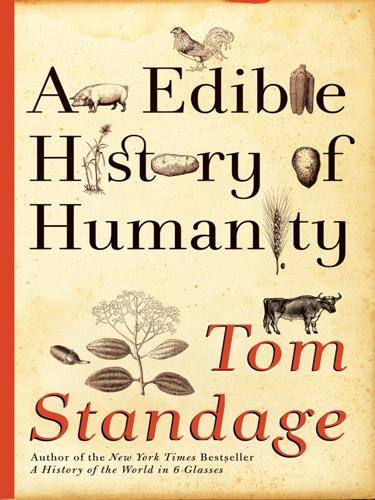
An Edible History of Humanity
by
Tom Standage
Published 30 Jun 2009
The Portuguese began production in Brazil around the same time, and the British, French, and Dutch established sugar plantations in the Caribbean during the seventeenth century. After attempts to enslave local people failed, chiefly because they succumbed to Old World diseases to which they had no immunity, the colonists began importing slaves directly from Africa. And so began the Atlantic slave trade. Over the course of four centuries, around eleven million slaves were transported from Africa to the New World, though this figure understates the full scale of the suffering, because as many as half of the slaves captured in the African interior died on the way to the coast. The vast majority of the slaves shipped across the Atlantic—around three quarters of them—were put to work making sugar, which became one of the main commodities in Atlantic trade.
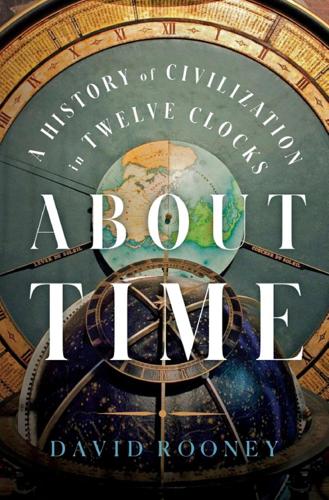
About Time: A History of Civilization in Twelve Clocks
by
David Rooney
Published 16 Aug 2021
Heavenly Clockwork: The Great Astronomical Clocks of Medieval China. 2nd edn. Cambridge: Cambridge University Press, 1986. Nomination of the Jantar Mantar, Jaipur, for Inclusion on World Heritage List. Paris: UNESCO, 2010. Pettigrew, William. Freedom’s Debt: The Royal African Company and the Politics of the Atlantic Slave Trade, 1672–1752. Chapel Hill: University of North Carolina Press, 2013. Ruggles, Clive, and Michel Cotte. Heritage Sites of Astronomy and Archaeoastronomy in the Context of the UNESCO World Heritage Convention: A Thematic Study (printed edn.). Paris: International Council on Monuments and Sites/International Astronomical Union, 2011.
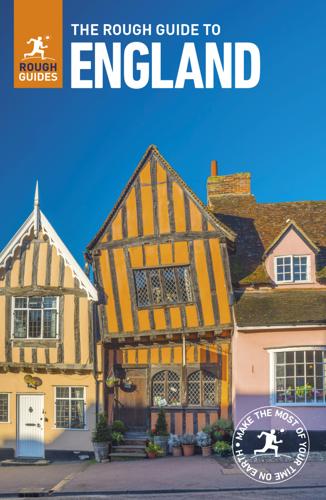
The Rough Guide to England
by
Rough Guides
Published 29 Mar 2018
On the ground floor, Bristol Places charts the city’s changing face, taking in its development as a port and the hardships of World War II. On the floor above, Bristol People and the adjoining Bristol Life look at the (often ordinary) folk who have shaped the city, with the former including a small display on Bristol’s links with the transatlantic slave trade (see box above). Afterwards, head out to the long terrace for fantastic harbour views. ss Great Britain Great Western Dockyard, BS1 6TY • Daily: April–Oct 10am–5.30pm; Nov–March 10am–4.30pm • £14 • 0117 926 0680, ssgreatbritain.org Harbourside’s major draw, and one of Bristol’s iconic sights, the ss Great Britain was the first propeller-driven, ocean-going iron ship in the world, built by Isambard Kingdom Brunel in 1843.
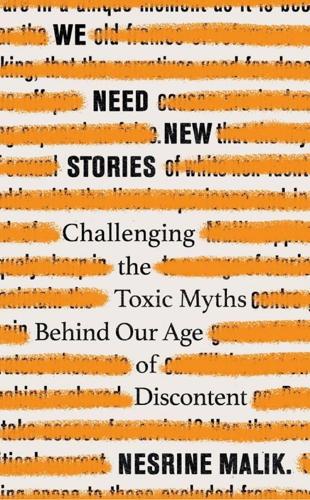
We Need New Stories: Challenging the Toxic Myths Behind Our Age of Discontent
by
Nesrine Malik
Published 4 Sep 2019
He said that the British should have ‘pride’ in their past and, that if they were taught to believe what the ‘strident anticolonialists’ said, that could lead to a feeling of guilt which makes the public ‘vulnerable to wilful manipulation’. The British empire, according to Biggar, was ‘morally mixed’; he asserted that ‘just like that of any nation state, pride can temper shame’. He continued: ‘Pride at the Royal Navy’s century-long suppression of the Atlantic slave trade, for example, will not be entirely obscured by shame at the slaughter of innocents at Amritsar in 1919. And while we might well be moved to think with care about how to intervene abroad successfully, we won’t simply abandon the world to its own devices.’ At the time, Biggar was leading a balance sheet project on ‘Ethics and the Empire’ with the purpose of analysing the impact of Britain’s imperial past.
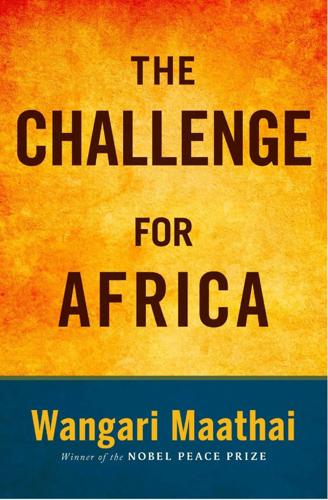
The Challenge for Africa
by
Wangari Maathai
Published 6 Apr 2009
The African leadership often failed to help its people deal with the impact of these experiences and instead tended to deny that they ever happened. Because Africa has not had a culture of writing, it has been easy to promote a culture of forgetting. For instance, few Africans fully understand the history of the Atlantic slave trade, because for many generations this period was kept out of oral or written history and is largely unspoken of in Africa, even though Africans were the victims. If history is not passed orally from generation to generation, and it is not written in history books so that it is deliberately taught to the next generation, it quickly disappears from memory.
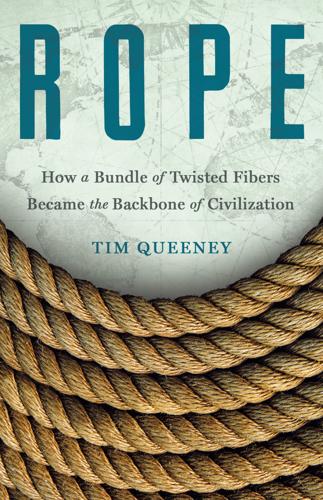
Rope: How a Bundle of Twisted Fibers Became the Backbone of Civilization
by
Tim Queeney
Published 11 Aug 2025
Evanston, IL: Northwestern University Press, 1970. Waldron, Arthur. The Great Wall of China: From History to Myth. Cambridge, UK: Cambridge University Press, 1990. Walliss, John. The Bloody Code in England and Wales, 1760–1830. Cham, Switzerland: Palgrave Macmillan, 2018. Walvin, James. Crossings: Africa, the Americas and the Atlantic Slave Trade. London: Reaktion Books, 2013. Wilkerson, Jeffrey K. El Tajín: A Guide for Visitors. Veracruz, Mexico: Veracruz Universidad Veracruzana, 1987. Yagoda, Ben. Will Rogers: A Biography. Norman, OK: University of Oklahoma Press, 2000. Zobel, Hiller B. The Boston Massacre. New York: W. W. Norton, 1970.
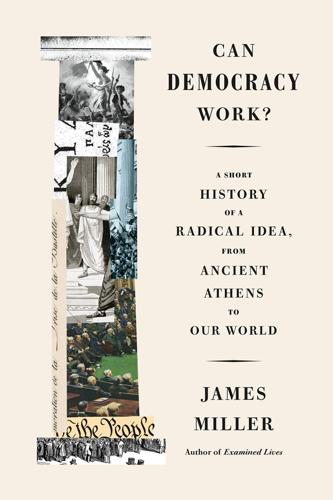
Can Democracy Work?: A Short History of a Radical Idea, From Ancient Athens to Our World
by
James Miller
Published 17 Sep 2018
The delegates would be selected at local meetings. The idea of a People’s Convention caught on. But it turned out that a great majority of the state’s most zealous democrats opposed extending the franchise to black men. Opposition was especially fierce in Newport, which in the eighteenth century had been a major hub of the Atlantic slave trade. When the People’s Convention met that fall, the delegates voted by an overwhelming majority to limit the franchise to white men. It is telling that the new People’s Constitution cast doubt on Thomas Jefferson’s famous assertion that “all men are created equal.” The events in Rhode Island gave a preview of the increasingly bitter American debate over slavery and race—a debate that would be provisionally resolved only by the Civil War, and the leadership of Abraham Lincoln, who almost single-handedly turned the opening lines of the Declaration of Independence into an inviolable set of core principles that guaranteed civil rights to all Americans, regardless of race.
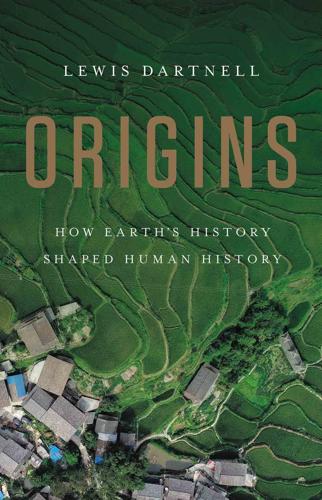
Origins: How Earth's History Shaped Human History
by
Lewis Dartnell
Published 13 May 2019
From these locations it is easier to cross to South America with the southeasterly trade winds and then south down the coast with the Brazil Current for the Brazilian coffee plantations; or follow the northeasterly trades and north equatorial current to the sugar plantations of the Caribbean islands, the cotton plantations of Alabama and Carolina, and tobacco plantations of Virginia. The Atlantic slave trade was banned in 1807, but continued by smugglers until the abolition of slavery with the conclusion of the American Civil War in 1865. By this time over 10 million Africans had been forcibly seized and transported to the Americas,63 many dying in the abysmal conditions on the way or in the first year or two on the plantations.
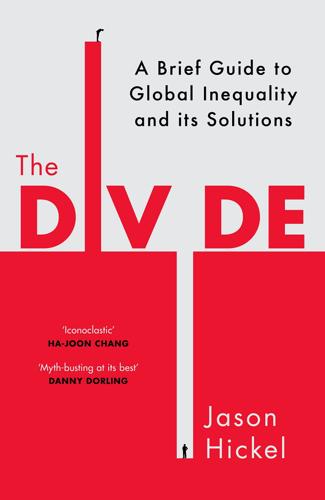
The Divide: A Brief Guide to Global Inequality and Its Solutions
by
Jason Hickel
Published 3 May 2017
As we will see, Latin America would be stuck in a relationship of economic dependency on Europe even into the 21st century, one marked by declining terms of trade, with the price of Latin America’s exports falling relative to the price of industrial imports from the West. Africa, for its part, suffered a serious loss of labour power to the Atlantic slave trade. What if the sum of the value produced by African slaves in the New World – worth the equivalent of hundreds of trillions of dollars today – was subtracted from Western wealth and added to the total wealth of Africa? Or even just a proportion of this sum, subtracting, for example, the gains that African kings made through the trade?
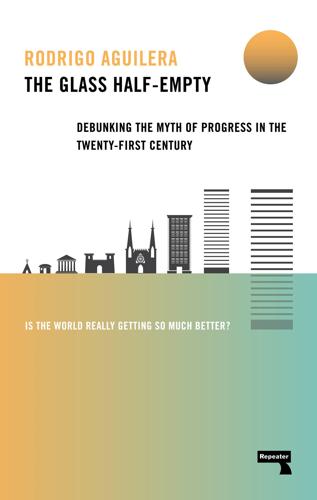
The Glass Half-Empty: Debunking the Myth of Progress in the Twenty-First Century
by
Rodrigo Aguilera
Published 10 Mar 2020
” — Edmund Stillman and William Pfaff, The Politics of Hysteria Of all the drivers of progress that the New Optimists get wrong, none carries more significant consequences for the future of humanity than the ones that involve violence and war. The belief that Enlightenment values are the formula for peace ignores that these values have been behind some of the most atrocious actions in human history, made worse by the fact that they were committed when Western “enlightened” civilization claimed to know better. The trans-Atlantic slave trade, for example, reached its peak in the eighteenth century, and the Abolitionist movement that ended it was led not by Enlightenment thinkers but by religious Quakers. Later, the nineteenth century had the prophets of Enlightenment justifying colonialism, on the grounds that the very liberties that should be afforded to the European race were not naturally applicable to the “barbarians” and “savages” that populated the rest of the world.46 The partitioning of Africa by the major European colonial powers during the 1884–1885 Berlin Conference took place almost exactly two hundred years after Britain’s Glorious Revolution of 1688, which is often seen as the beginning of liberal political enlightenment.
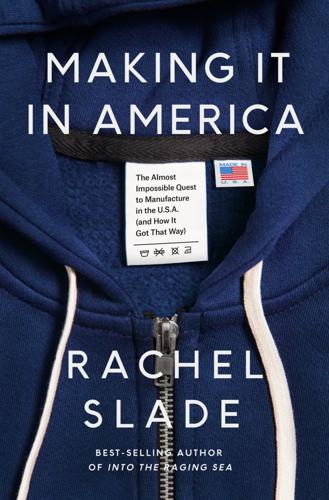
Making It in America: The Almost Impossible Quest to Manufacture in the U.S.A. (And How It Got That Way)
by
Rachel Slade
Published 9 Jan 2024
Trade Wars Are Class Wars: How Rising Inequality Distorts the Global Economy and Threatens International Peace. New Haven: Yale University Press, 2020. Klein, Naomi. The Shock Doctrine: The Rise of Disaster Capitalism. New York: Picador, 2008. Kobayashi, Kazuo. “Indian Cotton Textiles in the Eighteenth-Century Atlantic Economy.” Excerpt from “The British Atlantic Slave Trade and Indian Cotton Textiles: The Case of Thomas Lumley & Co.” Socio-Economic History 77, no. 3 (2011). Labor 411. “Making It Easy to Support Good Jobs.” http://labor411.org/. Ladenburg, Thomas. “The Causes of the American Revolution.” Digital History, 2007. Lazazzera, Milena.
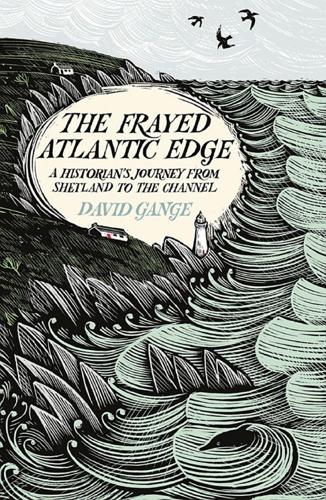
The Frayed Atlantic Edge: A Historian’s Journey From Shetland to the Channel
by
David Gange
Published 10 Jul 2019
Historians have made some headway in adapting their ideas, but much less than literary scholars, geographers or social scientists; Timothy Mitchell’s ‘Can the Mosquito Speak?’ remains one of the few convincing historical experiments towards this goal; in relation to this book’s themes, the closest thing yet written is perhaps Marcus Rediker, ‘History from the Below the Water Line: Sharks and the Atlantic Slave Trade’, Atlantic History (2008). 6 There have been several calls to end this situation and rethink the skill sets involved in historical practice, such as Mark Levene, ‘Climate Blues: Or How Awareness of the Human End might Re-instil Ethical Purpose to the Writing of History’, Environmental Humanities (2013), and Daniel Smail, On Deep History and the Brain (2007). 7 For the beginning of a new, more concerted, attempt to write ocean histories, see the volume mentioned above, David Armitage, Alison Bashford and Sujit Sivasundaram, Oceanic Histories (Cambridge, 2018); the work of Sverker Sörlin, on the Arctic ocean, is a particularly insightful contribution combining multiple kinds of history into a genuine study of ocean, not just the maritime movement of people.
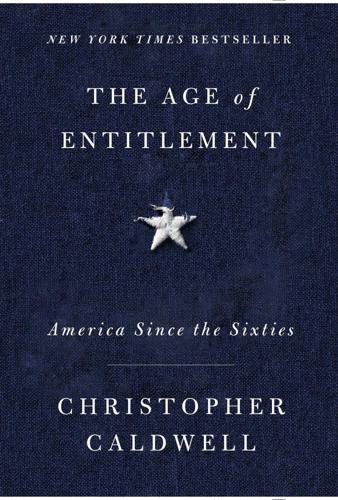
The Age of Entitlement: America Since the Sixties
by
Christopher Caldwell
Published 21 Jan 2020
“The bill will not aggravate”: Kennedy, Hearing of the Subcommittee on Immigration and Naturalization of the Committee on the Judiciary. In the three-and-a-half centuries: American Committee on Immigration Policies, “Our Immigration Laws Protect You, Your Job and Your Freedom” (pamphlet), Washington, D.C., 1965. including a quarter-million slaves: “Voyages,” Trans-Atlantic Slave Trade Database, online at slavevoyages.org/assessment/estimates. In the half-century that followed: Pew Research Center, “Modern Immigration Wave Brings 59 Million to U.S., Driving Population Growth and Change Through 2065,” September 28, 2015, 6. Kennedy proposed: Edward M. Kennedy, Selected Readings on U.S.
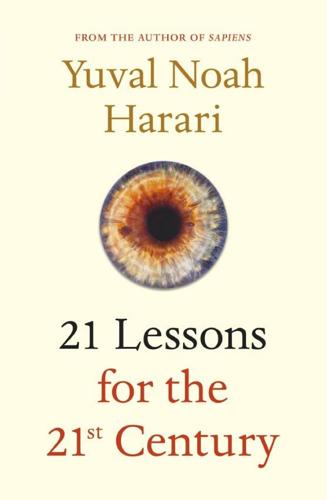
21 Lessons for the 21st Century
by
Yuval Noah Harari
Published 29 Aug 2018
What’s important is what I intend, not what I actually do or the outcome of what I do. However, in a world in which everything is interconnected, the supreme moral imperative becomes the imperative to know. The greatest crimes in modern history resulted not just from hatred and greed, but even more so from ignorance and indifference. Charming English ladies financed the Atlantic slave trade by buying shares and bonds in the London stock exchange, without ever setting foot in either Africa or the Caribbean. They then sweetened their four o’clock tea with snow-white sugar cubes produced in hellish plantations – about which they knew nothing. In Germany in the late 1930s, the local post-office manager might be an upright citizen looking after the welfare of his employees, and personally helping people in distress to find missing parcels.

City on the Verge
by
Mark Pendergrast
Published 5 May 2017
Sjoquist, ed., The Atlanta Paradox (2000); Curtis Snow, Snow on Tha Bluff (movie, 2011); Warren St. John, Outcasts United: An American Town, a Refugee Team, and One Woman’s Quest to Make a Difference (2009); Anne Steffani, Unlikely Dissenters: White Southern Women in the Fight for Racial Justice, 1920–1970 (2015); Hugh Thomas, The Slave Trade: The Story of the Atlantic Slave Trade, 1440–1870 (1997); B. Wardlaw, Coca-Cola Anarchist (2010); Isabel Wilkerson, The Warmth of Other Suns: The Epic Story of America’s Great Migration (2010). Useful Newspapers, Magazines, and Websites Atlanta BeltLine, Inc. (www.beltline.org); Atlanta Black Star; Atlanta Business Chronicle; Atlanta Daily World; Atlanta INtown; Atlanta Journal-Constitution; Atlanta Loop (www.atlantaloop.com); Atlanta Magazine; Atlanta Progressive News (www.atlantaprogressivenews.com); Atlanta Tribune; Atlanta Voice; Bitter Southerner (www.bittersoutherner.com); Creative Loafing; Curbed Atlanta (www.atlanta.curbed.com); Georgia State Signal; Georgia Trends; Saporta Report (www.saportareport.com); Sustainable Communities.
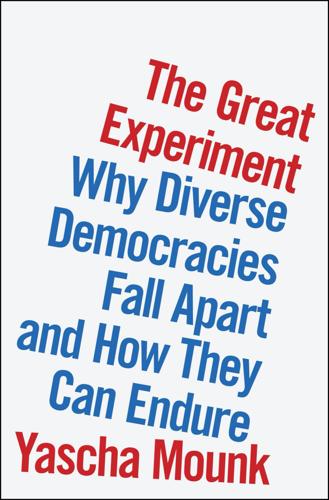
The Great Experiment: Why Diverse Democracies Fall Apart and How They Can Endure
by
Yascha Mounk
Published 19 Apr 2022
GO TO NOTE REFERENCE IN TEXT “They had hoisted American flags”: Rothman, “Anthony Burns and the Resistance to the Fugitive Slave Act.” GO TO NOTE REFERENCE IN TEXT Burns was put on a ship: Rothman, “Anthony Burns and the Resistance to the Fugitive Slave Act.” GO TO NOTE REFERENCE IN TEXT Southern states imported about three hundred thousand: “Trans-Atlantic Slave Trade: Estimates: 1501–1866,” Slave Voyages, accessed September 25, 2021, https://www.slavevoyages.org/assessment/estimates. GO TO NOTE REFERENCE IN TEXT As a result, black people in the United States: “On Views of Race and Inequality, Blacks and Whites Are Worlds Apart,” Pew Research Center, June 27, 2016, 18–26, https://www.pewresearch.org/social-trends/2016/06/27/1-demographic-trends-and-economic-well-being.
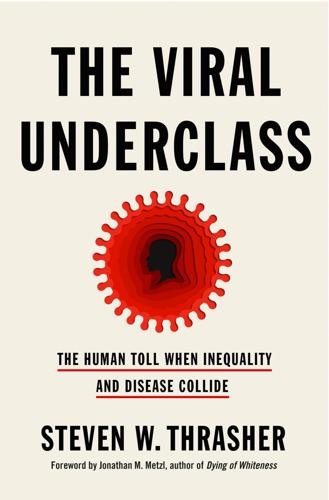
The Viral Underclass: The Human Toll When Inequality and Disease Collide
by
Steven W. Thrasher
Published 1 Aug 2022
HIV then likely hitched rides along routes of colonialism, as the European “Scramble for Africa” robbed the continent of its resources—which means that neocolonialism moved HIV in the twentieth century around the globe much as European classical colonialism moved pathogens to the Americas during the Atlantic slave trade. So much of why and how people come into contact with animals is economic; thus, the risk of humans encountering zoonotic viruses is very classed. It is not wealthy meat eaters who are in immediate danger, but the lower classes. Whether they are butchering meat in the bush or in a factory, those on a lower rung of the social ladder are the ones wielding machetes and factory saws.
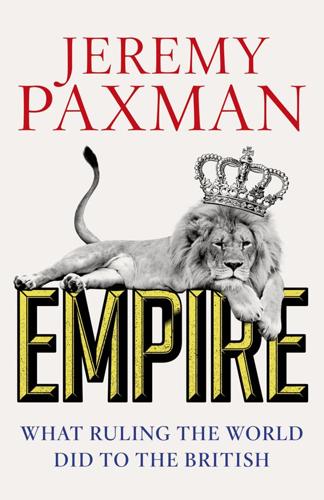
Empire: What Ruling the World Did to the British
by
Jeremy Paxman
Published 6 Oct 2011
Had him well flogged and pickled, then made Hector [another slave] shit in his mouth’, that he ‘rubbed Hazat with molasses and exposed him naked to the flies all day, and to the mosquitos all night’, and that he ‘flogged Punch well, and then washed and rubbed in salt pickle, lime juice and bird pepper; made Negro Joe piss in his eyes and mouth’. The horrors of the Atlantic slave trade are now part of school history lessons, the cruelties the British inflicted on fellow human beings rightly taught as a cause of shame. The mechanics of the business, in which tribal chiefs collected captives from further and further into the interior of Africa for sale to the traders, the British creation of marshalling forts on the ‘slave coast’ between the Niger and Volta rivers, the disgusting conditions of the packed slaves on the ‘Middle Passage’ of the triangular trade and, at journey’s end, the presentation of men, women and children like beasts in a market, should all be engraved on the national conscience.
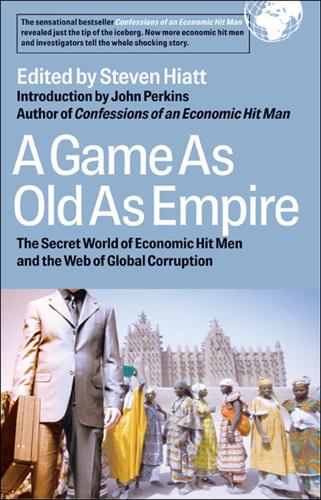
A Game as Old as Empire: The Secret World of Economic Hit Men and the Web of Global Corruption
by
Steven Hiatt; John Perkins
Published 1 Jan 2006
The role he was playing had changed little from that of an English mariner in the 1660s. Then soldiers were employed by the Royal Navy and sent to protect the ships of the Royal African Company, which were transporting slaves from the creeks of the Delta to the American colonies. For 150 years Britain played a pivotal role in the Atlantic slave trade. After slavery came palm oil plantations. Now the exploited resources are oil and gas. The security liaison officer was about to be caught up in the vortex of violence that has swirled over the Niger Delta for the past four decades. The heart of the crisis is oil—who controls it, who benefits, and who suffers as a result.
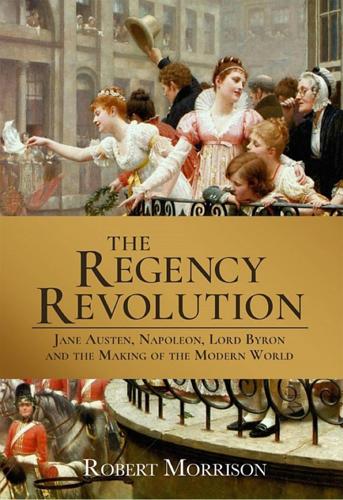
The Regency Revolution: Jane Austen, Napoleon, Lord Byron and the Making of the Modern World
by
Robert Morrison
Published 3 Jul 2019
The Sierra Leone Company, a commercial enterprise sponsored by a group of wealthy abolitionists, ran the colony from 1792 until 1808, when the British government took direct control and quickly transformed Freetown into the center of British missionary and political power in the region as well as a base from which the Royal Navy suppressed the Atlantic slave trade. Britain extended its reach in West Africa even further in 1816 when its soldiers moved from Sierra Leone north to The Gambia, purchased St. Mary’s Island from the chief of Kombo, and founded the town of Bathurst (Banjul). Named after the colonial secretary, Henry Bathurst, third Earl Bathurst, it became for Britain another power base from which its ships checked the slave trade, its merchants explored trade routes and opportunities, and its missionaries promulgated European ideals and the Christian faith.
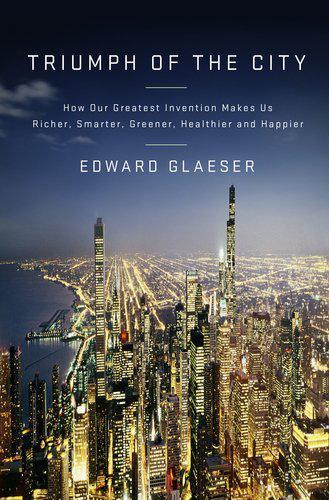
Triumph of the City: How Our Greatest Invention Makes Us Richer, Smarter, Greener, Healthier, and Happier
by
Edward L. Glaeser
Published 1 Jan 2011
Taylor, George Rogers. The Transportation Revolution, 1815-1860. New York: Rinehart, 1951. Taylor, Philip M. Munitions of the Mind: A History of Propaganda from the Ancient World to the Present Day. Manchester, UK: Manchester University Press, 2003. Thomas, Hugh. The Slave Trade: The Story of the Atlantic Slave Trade 1440-1870. New York: Simon & Schuster, 1997. Thomas, June Manning. “Planning and Industrial Decline: Lessons from Postwar Detroit.” Journal of the American Planning Association 56, no. 3 (Sept. 1990): 297-310. Thomas, Lately. Delmonico’s: A Century of Splendor. Boston: Houghton Mifflin, 1967.
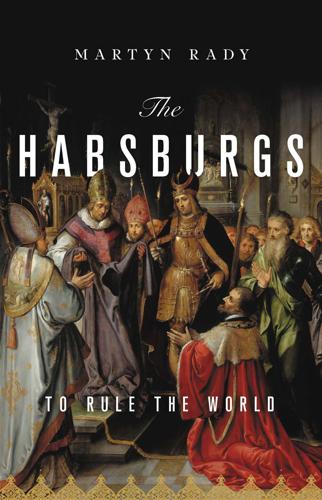
The Habsburgs: To Rule the World
by
Martyn Rady
Published 24 Aug 2020
Dudík, Schweden in Böhmen und Mähren 1640–1650 (Vienna, 1879), 294–5. 18. For the extent of anti-Habsburg gains, see Konrad Repgen, ‘Ferdinand III.’, in Die Kaiser der Neuzeit 1519–1918, ed. Anton Schindling and Walter Ziegler (Munich, 1990), 142–67 (151). 19. Johannes Postma, The Dutch in the Atlantic Slave Trade, 1600–1815 (Cambridge, 1990), 33–45. The text of the peace treaty is given in Latin and German in Tractatus Pacis, Trigesimo Januarii, anno supra millesimum sexcentesimo quadragesimo octavo, Monasterii Westfalorum (1648). For modern verdicts, see Johannes Arndt, ‘Ein europäisches Jubiläum: 350 Jahre Westfälische Frieden’, Jahrbuch für Europäische Geschichte, 1 (2000), 133–58.
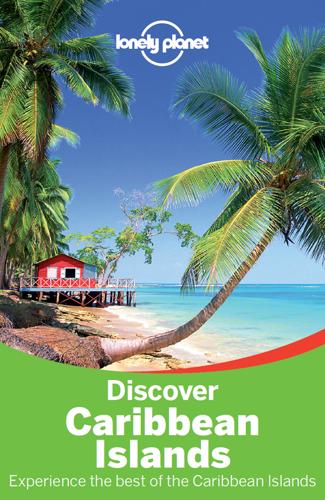
Discover Caribbean Islands
by
Lonely Planet
Slaves were forced to learn the language of the plantation owners, but they blended their own use of it into a hybrid Creole language that was liberally spiced with African terms. To this day, islanders throughout the Caribbean still slip into Creole. Much West Indian music takes its roots from a spirit of rebellion – most prominent is calypso, a sharp, raplike music that was developed by slaves poking fun at their masters. Origins of Slavery The Atlantic slave trade had a scale so overwhelming that it depopulated vast tracts of western Africa. From its origins, starting with Portuguese and Spanish colonists in the 1500s, to the final abolition on Cuba in 1886, an estimated 10 million enslaved African people were brought to the Americas. For the British, who held about 2.3 million slaves, the trade was a lucrative triangular route.
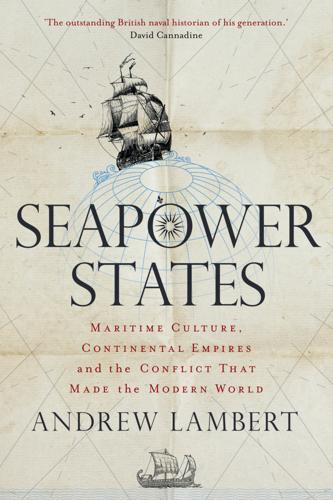
Seapower States: Maritime Culture, Continental Empires and the Conflict That Made the Modern World
by
Andrew Lambert
Published 1 Oct 2018
The only territories Britain retained were offshore island bases, Malta, Corfu, Heligoland and Mauritius; the latter, once linked to Cape Town, controlled the trade between Europe and Asia. Britain had no desire to extend its occupation into the interior of Africa. Instead it compelled Algiers to end the enslavement of European sailors, and crushed the Atlantic slave trade. Britain exploited technology, money and power to create the first globalised economy. It knocked down trade barriers, by force or by finance, pioneered new forms of capital movement, invented and laid the first global communications network, the submarine telegraph cable, and used it to build new markets.

Empire of Things: How We Became a World of Consumers, From the Fifteenth Century to the Twenty-First
by
Frank Trentmann
Published 1 Dec 2015
At a time when the price of wheat and other domestic foods was rising, tea became cheaper and cheaper. In Amsterdam, the wholesale price of coffee plummeted from 10 gulden per kilo at the beginning of the eighteenth century to 1 gulden at its end. In the same period, Britain increased its sugar consumption almost ten times, to 20 pounds per person a year. This was the peak of the Atlantic slave trade that was so crucial for coffee and sugar plantations. On the eve of the abolition of the slave trade, in 1807, the West Indies supplied a quarter of Britain’s total imports. Never again would the colonial world play such a large role in the imperial centre. Malachy Postlethwayt, who worked as a publicist for the Walpole government and the Royal Africa Company, acutely perceived the architecture of the British empire: it was, he wrote in the 1750s, ‘a magnificent superstructure of American commerce and naval power on an African foundation’.36 By the late eighteenth century, the human cost of slave sugar started to cause public outrage, as we shall see in the next chapter.
…
Alpern, ‘What Africans Got for their Slaves: A Master List of European Trade Goods ’, History in Africa 22, 1995: 5–43; David Eltis, ‘Trade between Western Africa and the Atlantic World before 1870’, Research in Economic History 12, 1989: 197–239; A. G. Hopkins, An Economic History of West Africa (London, 1973); and Herbert S. Klein, ‘Economic Aspects of the Eighteenth-century Atlantic Slave Trade’, in: The Rise of Merchant Empires, ed. James D. Tracy (Cambridge 1990), 287–310. Eltis’s figures for West Africa show a smaller share for iron than Curtin’s but a similar declining trend. 10. Johann Krapf, quoted in Jeremy Prestholdt, ‘East African Consumerism and the Genealogies of Globalization’, PhD thesis, Northwestern University (Evanston, IL) 2003, 93.
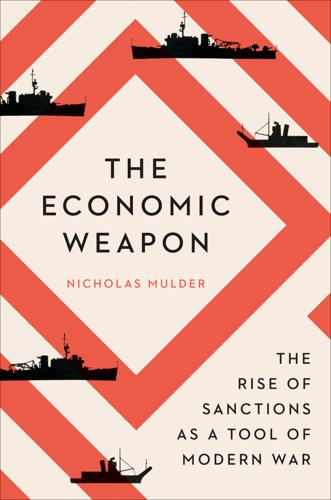
The Economic Weapon
by
Nicholas Mulder
Published 15 Mar 2021
At the Congress of Vienna in 1814–1815, Foreign Secretary Lord Castlereagh proposed to give weight to the conference’s international declaration against the slave trade by organizing a non-purchase campaign against goods made with slave labor. Spain, Portugal, and France could thereby be forced to phase out the trans-Atlantic slave trade. Although the proposal did not come to fruition, it demonstrated a growing awareness that trade restriction could be used for humanitarian objectives.30 On the whole, however, severing nations from worldwide exchange went against the grain of the greater freedom of flows that accompanied nineteenth-century capitalist expansion.
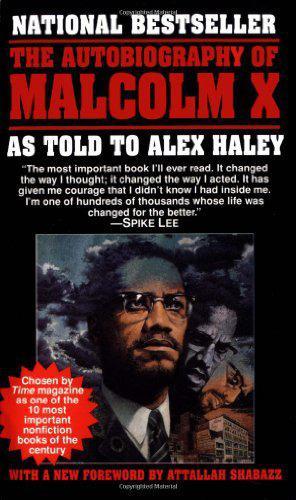
The autobiography of Malcolm X
by
Malcolm X; Alex Haley
Published 15 Aug 1999
“_Before_ we could find our self-esteem and self-respect-there was Malcolm X. ”And we owe him so dearly in ways our young must never be allowed to forget. "Where we have now the very possibility of courage-we _owe_ Malcolm X. "Where we have the wisdom to search for our history before the Atlantic slave trade-we _owe_ Malcolm X. "Where we have the political integrity to simply stand for something because it is right-we _owe_ Malcolm X. “It is not often that an American government institution honors those who embody a whole and uncompromised truth. But today is one such rare occasion. And I will keep it in my heart for the rest of my life.” *** At that moment, Brother Robinson spoke for all of us, and I will forever carry in my heart the sincerities of that ceremony.
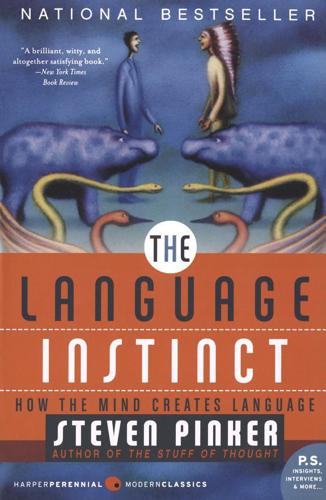
The Language Instinct: How the Mind Creates Language
by
Steven Pinker
Published 1 Jan 1994
Although historical linguists can trace modern complex languages back to earlier ones, this just pushes the problem back a step; we need to see how people create a complex language from scratch. Amazingly, we can. The first cases were wrung from two of the more sorrowful episodes of world history, the Atlantic slave trade and indentured servitude in the South Pacific. Perhaps mindful of the Tower of Babel, some of the masters of tobacco, cotton, coffee, and sugar plantations deliberately mixed slaves and laborers from different language backgrounds; others preferred specific ethnicities but had to accept mixtures because that was all that was available.

Owning the Earth: The Transforming History of Land Ownership
by
Andro Linklater
Published 12 Nov 2013
The contradiction led Pennsylvania to legislate in 1780 for the gradual abolition of slavery. “We rejoice that it is in our power to extend a portion of that freedom to others,” ran the preamble, “which hath been extended to us; and a release from that state of thraldom to which we ourselves were tyrannically doomed.” Despite actively promoting the Atlantic slave trade themselves, the British also targeted the contradiction. “How is it that we hear the loudest yelps for liberty among the drivers of negroes?” demanded Dr. Samuel Johnson. In 1779, Sir Henry Clinton, in command of British forces, offered freedom “to every Negro that shall desert the rebel standard,” and the following year the British switched their strategy from the original sources of rebellion in New England and Pennsylvania to focus on the South, with the same offer of liberty to the enslaved.

Power and Progress: Our Thousand-Year Struggle Over Technology and Prosperity
by
Daron Acemoglu
and
Simon Johnson
Published 15 May 2023
Estimates of profits from the slave trade and Caribbean plantation economies indicate that this form of human trafficking and exploitation did contribute resources to industrialization, but this direct effect is not large enough to explain what happened. In addition, while Britain was a major participant in the Atlantic slave trade, Portugal, Spain, France, the Netherlands, and Denmark were just as active, and some of these countries generated much larger profits over the centuries than did Britain. There was no conscious British strategy or government policy supporting industrialization. In any case, such ideas were a long way from being plausible when no one understood the nature of what could be invented and how profound its effects could be.

Slouching Towards Utopia: An Economic History of the Twentieth Century
by
J. Bradford Delong
Published 6 Apr 2020
The centurion stops, turns to the tribune, and says, “This man is a Roman citizen,” and the beating that Saint Paul is about to receive is immediately prevented—never mind that he has citizenship because his father did some favor for or paid some bribe to a Roman magistrate, and that none of his ancestors had ever seen Rome. As time passed, and the Imperial-Commercial Age progressed, Europe increasingly chose violence: the Atlantic slave trade grew, and perhaps seventeen million people were kidnapped from Africa and brought to the Americas to be enslaved and, mostly, to be worked to death or near death. We think life expectancy for a Black slave in the Caribbean before 1800 was perhaps seven years once they arrived and were put to work.
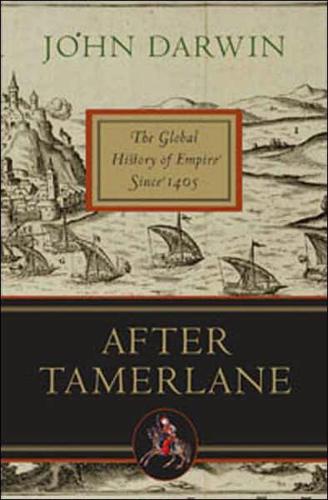
After Tamerlane: The Global History of Empire Since 1405
by
John Darwin
Published 5 Feb 2008
These features can be briefly summarized as follows: 1. the appearance of a single global market – not for all but for most widely used products, and also for the supply of capital, credit and financial services; 2. the intense interaction between states that may be geographically very distant but whose interests (even in the case of very small states) have become global, not regional; 3. the deep penetration of most cultures by globally organized media, whose commercial and cultural messages (especially through the language of ‘brands’) have become almost inseparable; 4. the huge scale of migrations and diasporas (forced and free), creating networks and connections that rival the impact of the great European out-migration of the nineteenth century or the Atlantic slave trade; 5. the emergence from the wreck of the ‘bipolar age’ (1945–89) of a single ‘hyperpower’, whose economic and military strength, in relation to all other states, has had no parallel in modern world history; 6. the dramatic resurgence of China and India as manufacturing powers. In hugely increasing world output and shifting the balance of the world economy, the economic mobilization of their vast populations (1.3 billion and 1 billion respectively) has been likened to the opening of vast new lands in the nineteenth century.
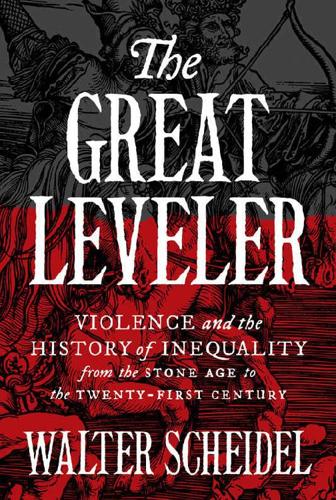
The Great Leveler: Violence and the History of Inequality From the Stone Age to the Twenty-First Century
by
Walter Scheidel
Published 17 Jan 2017
After colonial rule succumbed to local risings triggered by Napoleon’s invasion of Spain in 1808, the newly formed states soon passed emancipation laws. In chapter 6 I discussed the violent destruction of slavery in the American Civil War, in which the uncompensated expropriation of slave owners was partly offset by collateral damage to non-elite groups that reduced the overall extent of leveling. Meanwhile, the British suppression of the Atlantic slave trade, essentially an act of state violence, had contributed to the decline of what remained of Latin American slavery. Brazil and Cuba were the main holdouts. In the case of Cuba (and Puerto Rico), it was once again violent conflict that prompted policy change. Revolution in Cuba in 1868 led to emancipation in part of the island during a war that lasted a decade.
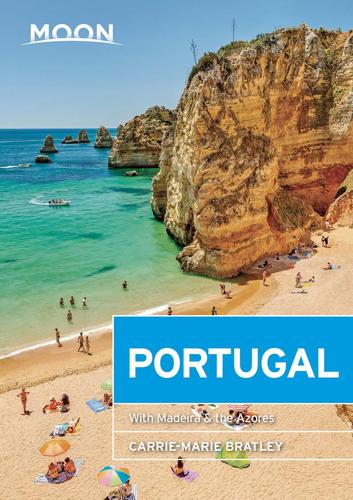
Moon Portugal
by
Carrie-Marie Bratley
Published 15 Mar 2021
Setting up Atlantic trade routes brought Portugal considerable wealth and established Lisbon as Europe’s main trading center for spices, silk, and precious gems like pearls and diamonds. It also brought historic tragedies, namely the damage inflicted to Indigenous peoples by colonialism, and the country’s role in the Atlantic slave trade. Having also been used as a lighthouse, a customs house, and a prison, the fortification is today one of Portugal’s most visited tourist sites. Its elaborate exterior belies the starkness inside: Entering the tower over an ancient drawbridge, visitors access a bulwark housing artillery, in the middle of which is a small courtyard flanked by Gothic arches.
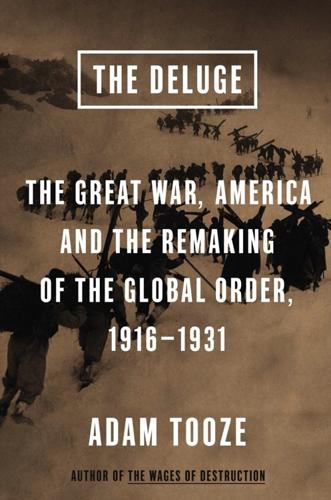
The Deluge: The Great War, America and the Remaking of the Global Order, 1916-1931
by
Adam Tooze
Published 13 Nov 2014
The third key point to establish is that America’s own entry into modernity, presumed in such a simple way by most accounts of twentieth-century international politics, was every bit as violent, unsettling and ambiguous as that of any of the other states in the world system. Indeed, given the underlying fissures within a formerly colonial society, originating in the triangular Atlantic slave trade, expanded by means of the violent appropriation of the West, peopled by a mass migration from Europe, often under traumatic circumstances, and then kept in perpetual motion by the surging force of capitalist development, America’s problems with modernity were profound. Out of the effort to come to terms with this wrenching nineteenth-century experience emerged an ideology that was common to both sides of the American party divide, namely exceptionalism.58 In an age of unabashed nationalism, it was not Americans’ belief in the exceptional destiny of their nation that was the issue.

A Pipeline Runs Through It: The Story of Oil From Ancient Times to the First World War
by
Keith Fisher
Published 3 Aug 2022
Dion, Mark, ‘Sumatra through Portuguese Eyes: Excerpts from João de Barros’ “Decadas da Asia”’, Indonesia 9 (April 1970). Dixon, Donald F., ‘Petrol Distribution in the United Kingdom, 1900–1950’, Business History Review 6, no. 1 (December 1963). Doel, H. W. van den, ‘Military Rule in the Netherlands Indies’, in Cribb, ed., Late Colonial State in Indonesia (1994). Domingues da Silva, Daniel B., ‘The Atlantic Slave Trade from Angola: A Portby-Port Estimate of Slaves Embarked, 1701–1867’, International Journal of African Historical Studies 46, no. 1 (2013). Dominian, Leon, ‘Fuel in Turkey’, Transactions of the American Institute of Mining Engineers 56 (1917). Earle, Edward Mead, ‘The Secret Anglo-German Convention of 1914 Regarding Asiatic Turkey’, Political Science Quarterly 38, no. 1 (March 1923). ——, ‘The Turkish Petroleum Company – A Study in Oleaginous Diplomacy’, Political Science Quarterly 39, no. 2 (June 1924).

Behave: The Biology of Humans at Our Best and Worst
by
Robert M. Sapolsky
Published 1 May 2017
When deaths are expressed as a percentage of total population, World War II is the only twentieth-century event cracking the top ten, behind An Lushan, the Mongol conquests, the Mideast slave trade, the fall of the Ming dynasty, the fall of Rome, the deaths caused by Tamerlane, the annihilation of Native Americans by Europeans, and the Atlantic slave trade. Critics have questioned this—“Hey, stop using fudge factors to somehow make World War II’s 55 million dead less than the fall of Rome’s 8 million.” After all, 9/11’s murders would not have evoked only half as much terror if America had 600 million instead of 300 million citizens. But Pinker’s analysis is appropriate, and analyzing rates of events is how you discover that today’s London is much safer than was Dickens’s or that some hunter-gatherer groups have homicide rates that match Detroit’s.

Bourgeois Dignity: Why Economics Can't Explain the Modern World
by
Deirdre N. McCloskey
Published 15 Nov 2011
Better: a long dry spell, the city’s wooden buildings, a strong wind from the southwest, and, if you disdain Irish immigrants, Mrs. O’Leary’s cow. The modern world cannot be explained, I show in the second volume, Bourgeois Dignity: Why Economics Can’t Explain the Modern World, by routine brick-piling, such as the Indian Ocean trade, English banking, canals, the British savings rate, the Atlantic slave trade, natural resources, the enclosure movement, the exploitation of workers in satanic mills, or the accumulation in European cities of capital, whether physical or human. Such routines are too common in world history and too feeble in quantitative oomph to explain the thirty- or hundredfold enrichment per person unique to the past two centuries.
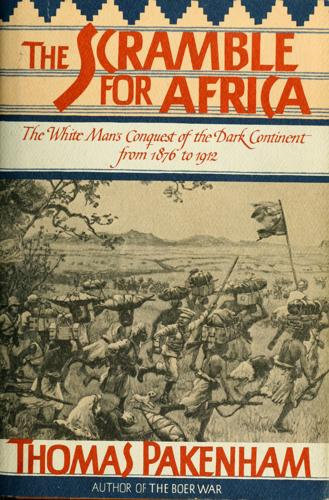
The scramble for Africa, 1876-1912
by
Thomas Pakenham
Published 19 Nov 1991
In the general election it was Chinese labour on the Rand, called ‘Chinese slavery’, that had brought the most violent abuse down on the heads of the Unionists, for it was they who had licensed the experiment. In 1904 the Liberals had denounced it as though it was a variant of the eighteenth-century Atlantic slave trade. Campbell-Bannerman called it ‘the biggest scheme of human dumping since the Middle Passage was adopted’.8 Now that they were in power, the Liberals were pledged to save the Chinese from exploitation. The main objection was to the degrading conditions in which the indentured coolies were held.

Lonely Planet Brazil
by
Lonely Planet
Cais do ValongoARCHAEOLOGICAL SITE (map Google map; Barão de Tefé) Unearthed in 2011, the Valongo Wharf was the first arrival point for an estimated 900,000 enslaved peoples brought to Brazil after long, harrowing voyages from Africa. Those who survived the journey were sold in markets, while those who didn’t were buried without ceremony in mass graves nearby. The heartbreaking tragedy of the Atlantic slave trade remained a topic little broached for many years, and this newly designated archaeological site is an important reference for coming to grips with this aspect of the nation’s history. Instituto de Pesquisa e Memória Presto NovosMUSEUM (map Google map; %21 96465-9983; www.pretosnovos.com.br; Pedro Ernesto 32; h1-6pm Tue-Fri, 11am-2pm Sat) F When Mercedes Guimarães was doing construction work on her house in 1996, workers uncovered huge quantities of human fragments.
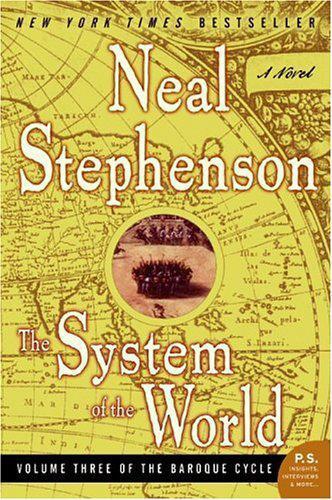
The system of the world
by
Neal Stephenson
Published 21 Sep 2004
But he did catch sight again of South Sea House, a very large compound one of whose gates was situated a couple of hundred yards away, on the left side of Bishops-gate. It was bigger, and newer, than the Bank of England. It was, in a way, the Anti-Bank; its collateral, the Thing of Value against which it lent money, was the Asiento: the trans-Atlantic slave trade, wrested from Spain last year in the war. A sudden exclamation came up from the crowd. Dappa glanced to the right, and thought he perceived a trail of black smoke drawn through the air from near the top of the Monument. And then he made a second glance, for the lantern at the top of that colossal spire was disfigured by some sort of jury-rigged block-and-tackle device.

Europe: A History
by
Norman Davies
Published 1 Jan 1996
In 1501 Spain issued a decree to limit the export of Christian girls to garrison brothels across the Atlantic. In 1515 Spain sent the first consignment of black slaves directly from Africa to America, whilst receiving the first shipment of slave-grown American sugar. More than a century after Goncalvez, a fresh stage of the Atlantic slave trade was reached, when English sea captains broke into the Spanish and Portuguese monopoly. In October 1562 John Hawkins sailed from Plymouth for the coast of Guinea with three ships—the Salomon, the Swallow, and the Jonas. Variously described as a pirate and an admiral, Hawkins established the ‘Great Circuit’, with its threefold profits of English goods sold in Africa, African slaves sold in the Indies, and American products sold in England.